




English Mathematics
General Knowledge Science
Social Science

Academic Authors: Melanie Grobler, Chandani Goyal, Neena Aul, Animesh Mittal, Muskan Panjwani, Sneha Sharma, Anuj Gupta
Creative Directors: Bhavna Tripathi, Mangal Singh Rana, Satish
Book Production: Sanjay Kumar Goel, Tauheed Danish, Amisha Gupta
Project Lead: Chandani Goyal
VP, Learning: Abhishek Bhatnagar
All products and brand names used in this book are trademarks, registered trademarks or trade names of their respective owners.
© Uolo EdTech Private Limited
First impression 2025
This book is sold subject to the condition that it shall not by way of trade or otherwise, be lent, resold, hired out, or otherwise circulated without the publisher’s prior written consent in any form of binding or cover other than that in which it is published and without a similar condition including this condition being imposed on the subsequent purchaser and without limiting the rights under copyright reserved above, no part of this publication may be reproduced, stored in or introduced into a retrieval system, or transmitted in any form or by any means, electronic, mechanical, photocopying, recording or otherwise, without the prior written permission of both the copyright owner and the above-mentioned publisher of this book.
Book Title: Insights 5 Term 2
ISBN: 978-81-981206-6-3
Published by Uolo EdTech Private Limited
Corporate Office Address:
85, Sector 44, Gurugram, Haryana 122003
CIN: U74999DL2017PTC322986
Illustrations and images: www.shutterstock.com, www.stock.adobe.com and www.freepik.com
All suggested use of the internet should be under adult supervision.


Formal letter
Persuasive speech
Listen and choose
Articles–definite and indefinite Modal verbs–can, may, should, must
Comprehension Vocabulary
Compound adjectives Homographs
Author/Poet Type
Folktale Factual questions
Identifying character actions and motivation Identifying contextual meaning of idioms Summarising Making inferences Identifying theme and symbolism Making connections
Text-based vocabulary Synonyms Mind map –Nature
Making connections Factual questions Identifying theme Making inferences Poetry appreciation–personification, rhyme, imagery, repetition and alliteration
William Blake Poem
Old Jaideep and the Carpenter
S.No
Article writing
Narrate an anecdote
Listen and fill in a chart
Types of adverbs–manner, time, degree, frequency
Dictionary hunt Phrasal verbs
Word web
Text-based vocabulary
Writing an email
Interview
Listen and sequence
Types of adjectives–quantity, quality, possessive, demosntrative, number, interrogative, comparative and superlative Quantifiers
Antonyms using prefixes–un, dis, in
5. Peace and Harmony
6. Peace and Harmony Laughing Song
Making connections Ordering Summarising Factual questions Making inferences Identifying stereotypes
Biography
Project 2: Promoting Peace and Harmony
7. Space India’s Star in Space
Making connections
Identifying main idea
8. Space Speedy Rocket Joseph Coelho Poem
Identifying contextual meaning Identifying assonance and onomotopoeia Poetry appreciation–imagery
Identifying contextual meaning Identifying character characters’ feelings Making inferences Comparing characters Identifying point of view Inferring the message Identifying similies Making connections
Realistic story
The Girl Who Was a Forest Lavanya Karthik
9. Gender Equality





Which situation would you prefer being in? Why? Get Set
Two old friends have a disagreement which ruins their friendship. Let’s find out what the fight is about and how it is resolved.




In a village in Punjab, old Jaideep and his neighbour Balbir had been best friends for as long as they could remember. They had been through life’s ups and downs together and had stood shoulder to shoulder in good times and in bad. In their old age, they only had their farms and each other.
One day, however, their friendship hit a bump. It started with a quarrel about a stray calf. The calf had wandered onto Balbir’s land, so he thought it was his.
‘Balbir, that calf belongs to me,’ Jaideep insisted.
‘Jaideep, you always think everything is yours! It’s on my land, so it’s mine!’ Balbir retorted.
‘You always want to take what’s mine!’ Jaideep shouted.
‘And you never share!’ Balbir yelled back. Their faces had turned red with rage. Let’s Read
stood shoulder to shoulder: supported each other
hit a bump: faced a problem or difficulty quarrel: a verbal argument or fight about something
stray: an animal that has wandered away from its owner’s home retorted: replied quickly and sharply yelled: shouted rage: anger
Both men were too stubborn to back down, so they stopped talking to each other. Jaideep felt quite gloomy about it but he did not want to be the first one to give in. They ignored each other for weeks until something unexpected happened.
Why did Jaideep and his neighbour have a fight?
One morning, there was a knock on Jaideep’s door. He opened it to find a woman carrying a toolbox. She had kind eyes and a gentle voice.
‘Hello, I’m a carpenter looking for work. Do you have anything I can help you with?’ she asked.
Jaideep was confused. He had not called for a carpenter. His eyes strayed towards Balbir’s farm and an idea struck him. He welcomed her inside and offered her water.
‘I have a job for you,’ Jaideep said, pointing through the kitchen window. ‘See that farm over there? That’s my neighbour Balbir’s. He has dug a ditch between our farms to divert water from the upper pond to his land. He is just being spiteful.’
What did Balbir do to hurt Jaideep?
‘Since he holds a grudge against me,’ Jaideep continued, ‘I want you to build a big fence between us. I don’t want to see him again or to continue our friendship.’
The carpenter understood what was needed.
Jaideep had to go to town for supplies, so he got his bullock cart ready and showed the carpenter where everything was in the store room.
She worked quickly and efficiently, measuring, sawing and nailing planks together. As the sun began to set, Jaideep returned from town. To his surprise, instead of a fence, he saw a beautiful bridge with sturdy handrails over the ditch.
Even more surprising, Balbir was walking across the bridge with his hand outstretched. ‘Jaideep, you’re truly amazing to build this bridge. I never would have thought of it. Let bygones be bygones. I’m so glad we can be friends again,’ Balbir said.
stubborn: unwilling to change one’s mind back down: give in diverting: changing the direction of something spiteful: mean and hurtful holds a grudge: continues to be angry efficiently: quickly and effectively
sturdy: strong and not easily broken handrails: bars that you can hold on to for support, usually on stairs or bridges outstretched: extended (to) let bygones be bygones: to forget the past and move on

Jaideep, full of emotion, hugged his friend and confessed, ‘The calf is yours. I’ve always known it. I’m sorry.’
The old friends decided to bury the hatchet and laughed at how obstinate they had been. As the carpenter started packing her tools, Jaideep called out, ‘Wait! Please stay. I have many more projects for you.’
The carpenter smiled warmly. ‘I’d love to stay, Jaideep, but I can’t. There are more bridges to build…’.
How did the friends reconnect?

confessed: admitted or told the truth about something bury the hatchet: to end a fight obstinate: unwilling to change one’s mind
Listen to all the keywords here.




1. Match the actions with the underlying thoughts or motivations.
Actions
Balbir insists the calf is his.
Jaideep asks the carpenter to build a fence.
The carpenter builds a bridge instead of a fence.
Balbir walks across the bridge with his hand outstretched.
The carpenter decides to leave after finishing the bridge.
Thoughts/Motivations
I have been stubborn, he is a good friend and we need to make up.
These two old men need each other, I must reunite them.
The calf belongs to me as it was on my land.
Another friendship is saved, there is more work to do elsewhere.
Balbir has dug a ditch out of spite, I do not want to see him again.
Idioms are phrases where the actual words may mean something different from how we use the idiom, for example, to bury the hatchet means to make peace, whereas the words actually mean to dig a hole and bury the hatchet.
2. Check how the following idioms are used in the text and use them to make your own sentences in your notebook.
a to stand shoulder to shoulder
c to back down
e to let bygones be bygones
b to hit a bump
d to hold a grudge
f to bury the hatchet
3. In your notebook, summarise the story in your own words using the clues given. Then, share it with your partner.
The story is about...
They started to...
But, Balbir and Jaideep...
So, Balbir...
Then, Jaideep...
Finally, the carpenter...


4. Answer the following questions in two to three sentences.
a Explain how the argument about the calf becomes an even bigger and more hurtful fight.
b What else does Balbir do to upset Jaideep? What does Jaideep do in response?
c Why does the carpenter build a bridge instead of a fence?
d What is Balbir’s reaction when he sees the bridge? Why?
e Which positive characteristics do the men display in the story? Which negative traits do they display?



Symbolism is when an object, a person or an event stands for something more than what it usually means, giving it a deeper meaning in the story.
1. Fill in the table with words or phrases that you associate with a fence and a bridge. Fence Bridge
In two short sentences write what these things symbolise (stand for) in the story.
2. What is the theme of the story ‘Old Jaideep and the Carpenter’? What can we learn from the story?



An argument about a simple matter can often lead to hurtful things being said. Think about a time when you had a disagreement with a friend or family member.
a Describe what the disagreement was about and what happened.

b What could you have done differently to handle the situation better?
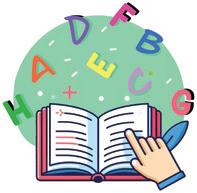

Compound adjectives are adjectives made up of two or more words that work together to describe a noun. They are often connected by a hyphen to show that they form a single idea.
For example:
• The peace-loving community built a strong bridge.
• They had a heartwarming reunion after their disagreement.
1. Read each sentence and choose the correct compound adjective to describe the situation.
a The village elder is known and trusted by everyone in the community. i well-respected ii warm-hearted iii open-minded
b The children were excited and played with great energy.
i soft-spoken ii high-spirited iii clear-headed
c The villagers were ready to accept new ideas.
i full-hearted ii soft-spoken iii open-minded
d The leader gave instructions in a calm and gentle manner. i soft-spoken ii well-known iii high-spirited
e The doctor made decisions quickly and wisely during the emergency. i open-minded ii full-hearted iii clear-headed
2. Complete each sentence with the appropriate compound adjectives in the box.
Hint Box: kind-hearted peace-loving good-natured easy-going level-headed
a The volunteers worked tirelessly to help those in need.
b In our family, we support each other and do not allow our differences to divide us.
c Despite the chaos, he remained and found a solution quickly.
d His nature made him very approachable and friendly.
e My friend welcomed everyone with a smile.

Homographs are words that are spelt the same but have different meanings and are sometimes even pronounced differently.
3. Replace the words in brackets with the homographs in the box. Each homograph will be used twice.
Hint Box:
contract conduct row refuse
Hint: Use the Internet to find the pronunciation of the homographs.
Search: Pronunciation of <word>
a The students were standing in a (queue).
b The conductor will (lead) the orchestra tonight.
c The neighbours had a nasty (quarrel).
d He will (decline) the offer to join the new project.
e They signed a/an (agreement) to maintain peace between the two nations.
f The teacher praised the students’ (behaviour) during the assembly.
g Wool can (shrink) when it is not washed correctly.
h The park was littered with (garbage) after the festival.


Indefinite articles a and an are used before singular nouns. These articles are called indefinite because they refer to any one place, animal, person or thing and do not specify which one.
We use a for words starting with consonant sounds and an for words starting with vowel sounds.
For example:
• Old Jaideep and Balbir lived in a village in Punjab.
(We are not specifying which village)
The articles a, an and the are used before nouns.
For example:
• The carpenter needed an axe to chop logs of wood.
(We are not specifying which axe)
The definite article the is used before plural nouns or nouns that are known or have been previously mentioned. The is called a definite article because it refers to a particular place, animal, person or thing and specifies the noun.
We also use the before superlatives, proper nouns and abstract nouns followed by ‘of ’.
For example:
• The village where Old Jaideep and Balbir lived was flooded.
(We are specifying the noun)
• The Green Revolution started in Punjab.
(Before a proper noun)
For example:
• Balbir is the best friend Jaideep could ask for.
(Before a superlative)
• The stubbornness of the two men ruined their friendship.
(Before abstract nouns followed by ‘of’)
1. Complete the paragraph with the correct articles. Then add two more sentences to the story using the correct articles.
This story comes from the State of Bengal. Aarav and Meera lived on opposite sides of picturesque river connected by bridge. Aarav, who was an artist, painted vibrant scenes on bridge that connected their homes. One day, two friends argued about theme that Aarav had chosen for his art.
Modal Verbs
Modal verbs are helper verbs that express conditions related to the main verb.
• In sentences, modal verbs come before the main verb.
• In questions, modal verbs come before the subject.
• In negative sentences, modal verbs come before ‘not’ + the main verb.

Can It is used to express ability.
For example:
I am so glad we can be friends again. Can we be friends again?
I can not stay upset with you.
May It is used to seek permission, suggest possibilities, or make suggestions.
For example:
She may build a bridge instead of a fence. (possibility)
May I build a bridge over the stream? (permission)
You may not enter my farm without my permission.
Should It is used to give advice.
For example:
Balbir and Jaideep should sort out their differences. Shouldn’t Balbir and Jaideep talk about their issues?
You shouldn’t interfere with their conflict.
Must It is used to express obligation.
For example:
One must never go to bed without resolving differences.
2. Fill in the blanks with the correct modal verbs.
a We (ability) spread joy by sharing smiles and helping others.
b You (possibility) find forgiveness easier than to hold a grudge.
c One (advice) not be cruel towards animals.
d People (obligation) save this planet by conserving resources.
e Every small gesture (ability) make a difference.
3. Make questions starting with these modal verbs:
a can:
b may :
c should:
d must:



Listen Well

Listen carefully to the text and choose the correct answers.
a What was the disagreement in the village about?
Listen to the text here.
i Building a new school. ii Cutting down trees.
iii Starting a new market.
b Where did the villagers hold the meeting?
i At the school
iii At the market
c How did the villagers resolve the conflict?
iv Making a playground.
ii On the square
iv In the park
i They decided not to build new houses. ii They ignored the problem.
iii They would plant new trees and build. iv They moved to another village.
d What did the groups do after the meeting?
i They continued to argue. ii They worked together.
iii They built a new market.
e How did the villagers feel about the solution?
iv They forgot about the issue.
i Angry ii Unhappy
iii Confused

Well


iv Satisfied Practise speaking here.
A persuasive speech is made to convince listeners that a particular point of view is correct. This is done by giving arguments that are supported by facts and examples and by making emotional appeals.
Sit in groups of three. Choose a topic from the list, prepare for five minutes and deliver a persuasive speech to your friends in the group.
The importance of reading.
Use bicycles to travel short distances.
Adopt a pet.
Reduce the use of electricity. Plant trees to save the planet.




Make points that will be of interest to your listeners. Begin with an introduction to the topic, talk about the advantages/ benefits and conclude with a call to action.
Use expressive body language and maintain eye contact while speaking. Use real-life examples and factual information to make your points more engaging.

A formal letter is one written to a person of authority such as a school teacher, principal or local officials. It needs to follow a proper format and be written using formal language.
Read the letter written to the Apartment manager requesting him for a community library.
45 Lakeview Apartment
Gandhinagar
Delhi 56789
15 July 2025
The Manager Lakeview Apartment
Gandhinagar
Delhi 56789
Subject: Establishment of a Community Library
Dear Mr Kumar,
I would like to make a proposal that will greatly benefit the residents of our apartment complex. I suggest that we establish a community library in our building. A library will have many advantages for both children and adults. It can act as a quiet space for studying as well as a place to gather and discuss books.
Sender’s address with pincode Date
Receiver’s address with pincode
Subject line
Dear [Receiver’s Name] [Receiver’s Title]
Introduction (Purpose of your letter)
Specific details about the request
I suggest that we use the common room that is hardly used. We could organise a book drive where the residents can donate their books.
Thank you for considering my suggestion. I look forward to your positive response.
Yours sincerely, Amit Sharma
Clearly state what you are requesting
Thank you message.
Yours sincerely/Yours respectfully/Yours faithfully Your Name
Write a formal letter to the principal of your school asking for new sports equipment for your school.



Get Set

• What are some of the things that make you laugh?
• Who do you laugh with the most?
Share the funniest moment of your life.
Imagine stepping into a world where everything around you – from the trees and streams to the very air you breathe – is alive with laughter and joy. Let’s read the poem and feel the excitement as the poet William Blake paints a picture of a world filled with fun and laughter.


When the green woods laugh with the voice of joy, And the dimpling stream runs laughing by; When the air does laugh with our merry wit, And the green hill laughs with the noise of it;
When the meadows laugh with lively green,
And the grasshopper laughs in the merry scene,
When Mary and Susan and Emily
With their sweet round mouths sing “Ha, ha he!”
When the painted birds laugh in the shade,
Where our table with cherries and nuts is spread: Come live, and be merry, and join with me,
To sing the sweet chorus of “Ha, ha, he!”
What are the different elements of nature that the poet mentions?

Who in the poem is described as having a sweet laugh?

William Blake was a famous English poet. He was born in 1757 and died in 1827. Blake’s most notable collections of poetry include ‘Songs of Innocence’ and ‘Songs of Experience’ in which he explores themes of childhood, nature and the human spirit.
dimpling: dimples are the small hollows in your cheeks when you laugh – here, imagine that the ripples in the stream look like dimples
merry: happy wit: playful intelligence
meadows: large, open fields of grass and wild flowers
painted: (here) with bright and colourful feathers
chorus: a part of a song that is repeated after each verse
Listen to all the keywords here.




1. Tick () the correct options.
a Which of the following best describes the main theme of the poem?
i The joy of growing old.
ii The joy found in nature and childhood.
iii How beautiful birds and insects are.
iv The importance of hard work.
b The repeated use of ‘Ha, ha he!’ in the poem:
i creates a sense of confusion.
ii show how women have fun.
iii shows that streams also like laughing.
iv highlights the idea of joy and laughter.
c Which of the following best describes the relationship between humans and nature in the poem?
i conflicting ii distant
iii independent iv harmonious
d The poem suggests that laughter can be found in…
i nature and human activities.
ii only in the beauty of nature.
iii all human interactions. iv only in children’s play.
e Based on the poem, which statement is most likely true about the speaker?
i The speaker prefers being alone to being around people.
ii The speaker finds joy in both nature and human company.
iii The speaker likes children.
iv The speaker is unhappy.
2. Answer the following questions.
a Write a line from the poem where nature reflects the sound of human laughter.
b What does ‘merry wit’ mean in the poem?
c How does the colour green add to the meaning of the poem?
d Why does the poet describe the birds as painted?

e What do these lines tell you about the theme of the poem?
Come live, and be merry, and join with me, To sing the sweet chorus of “Ha, ha, he!


Sit in a group of four. Discuss and create a mind map with the phrase ‘Nature’s Joy’ at the centre. Add words associated with the phrase to your mind map. You will need a large sheet of paper and sketch pens.
• Sights that bring you joy in nature.
• Sounds of nature that make you happy.
• Natural scents you find pleasant.
• Textures in nature you enjoy.
• Activities you like to do in nature.


Chart paper/ A3 sheet
Materials Needed
Sketch pens
1. Use a dictionary to find the meaning of the words. Write the meaning that matches how the word is used in the poem.
chorus:
wit:
dimpling: merry: Now, use the words to complete the sentences.
a The surface of the lake reflected the gentle sunlight.
b As the sun set, the forest was filled with the songs of birds.
c Sitting under the ancient oak tree, we heard the hills echoing human and laughter.
d As we walked through the meadow, a harmonious of crickets and frogs serenaded us.

2. Replace the underlined words in the sentences with the appropriate synonyms in the box. Rewrite the sentences in your notebook.
Hint Box: cleverness joyful field song decorated
a The cattle grazed contentedly in the meadow, where the grass was lush and green.
b The chorus of birds filled the morning air with a harmonious melody.
c The festival was a merry occasion, with people dancing and singing throughout the night.
d The room was painted with vibrant colours, creating an atmosphere of creativity and inspiration.
e His wit often left his friends amazed and entertained.



Poetic and Sound Devices: These are techniques that poets use to enhance the sound and meaning of a poem and evoke the emotions of the reader.
Personification: Giving human qualities to non-human things or ideas. For example: The green woods laugh.
Rhyme: Words with similar ending sounds. They often appear at the end of the line. For example: wit/it
Imagery: Descriptive language that appeals to the senses (sight, sound, touch, taste, smell). For example: painted birds
Repetition: When the same word or phrase is used multiple times to emphasise a point or theme. For example: “Ha, ha, he!”
Alliteration: The repetition of the first sound of words that appear near each other in a text. For example: The white whale wallowed in the water.
1. The poem uses various poetic devices to create a joyful atmosphere and convey the theme. Analyse the use of personification, alliteration and imagery in the poem by completing the following table.
Poetic device
Words or lines from the poem How it affects the meaning
Personification
Repetition
Imagery

2. Put on the poet’s hat. Follow the pattern used in the poem and write the missing lines to add another stanza to the poem.
a Use personification.
b Use repetition or imagery.
c Remember to follow the rhyme scheme of the poem.
d Remember the theme of the poem.
When the with , (natural element) (joyful action/emotion) ; When the playing children shout with glee, .




In this project, you will explore the theme of peace and harmony and present ways to promote it within your community, school or family.
What You Need:
• A poster board or a digital tool for your presentation.
• Art supplies (crayons, markers, or paints).
• Materials for your hands-on activity (craft materials, recycled items, etc.).
• Research materials (books, internet access, or discussions with family/teachers).
Steps:
1. Choose a Peace and Harmony Topic: Form a group and pick an idea related to peace and harmony that you would like to explore. For example:
• How to resolve conflicts peacefully.
• The importance of kindness and empathy.
• Working together as a team or community.
• Celebrating cultural diversity and respecting differences.
• Acts of kindness that spread peace.
2. Research and Write:
• Brainstorm, research and briefly describe your chosen peace and harmony topic. (100–150 words)
• Explain why this topic is important and how peace and harmony can make the world a better place. For example:
If you choose Resolving Conflicts Peacefully, you could explain how talking, listening, and finding solutions together helps resolve arguments and fights.




3. Create a Hands-On Project:
• Make a visual presentation that reflects the theme that you have chosen. It could be a poster, a peace tree, a skit, a role play.
For example, you could create a peace tree, where each leaf has a word or phrase that promotes harmony, such as ‘kindness,’ ‘sharing,’ or ‘understanding’.
4. Present to the Class:
• Present your project to your classmates.
• Explain the topic you have chosen, why it is important, and how people can work together to promote it.
• Show your project and describe how it represents your topic.
• Reflect on what you learned and share your thoughts on how you can promote peace and harmony in your daily life.


Keep your project simple, clear, but thoughtful. Use bright visuals and key messages to make your presentation more engaging.
Share stories, quotes or examples that inspire peace and harmony.



Get Set

What would you like to become one day? Write a few steps you can take to fulfil your dream.
I would like to become . A few steps that I can take are:
1. 2. 3.
Sit in pairs and discuss what you have written with your partner.
NASA’s space missions have always excited people. These missions, on space shuttles like the Columbia, involve important experiments and explore the mysteries of space. Each trip brings new discoveries and inspires people to dream about the stars. Now, let’s read about an astronaut who made her mark.



Kalpana Chawla was a remarkable astronaut who made history as the first woman of Indian origin to travel to space. Her journey, from a small town in India to the stars, is truly inspiring, and shows that with hard work and determination, anyone can achieve their dreams.
Kalpana Chawla was born on 17 March 1962, in Karnal, a town in the state of Haryana, India. As a child, she was fascinated by aeroplanes and the night sky. She would gaze at the stars and wonder what it would be like to travel to space. Kalpana Chawla was a bright student who loved to learn new things. Her curiosity about space and flying grew as she got older.
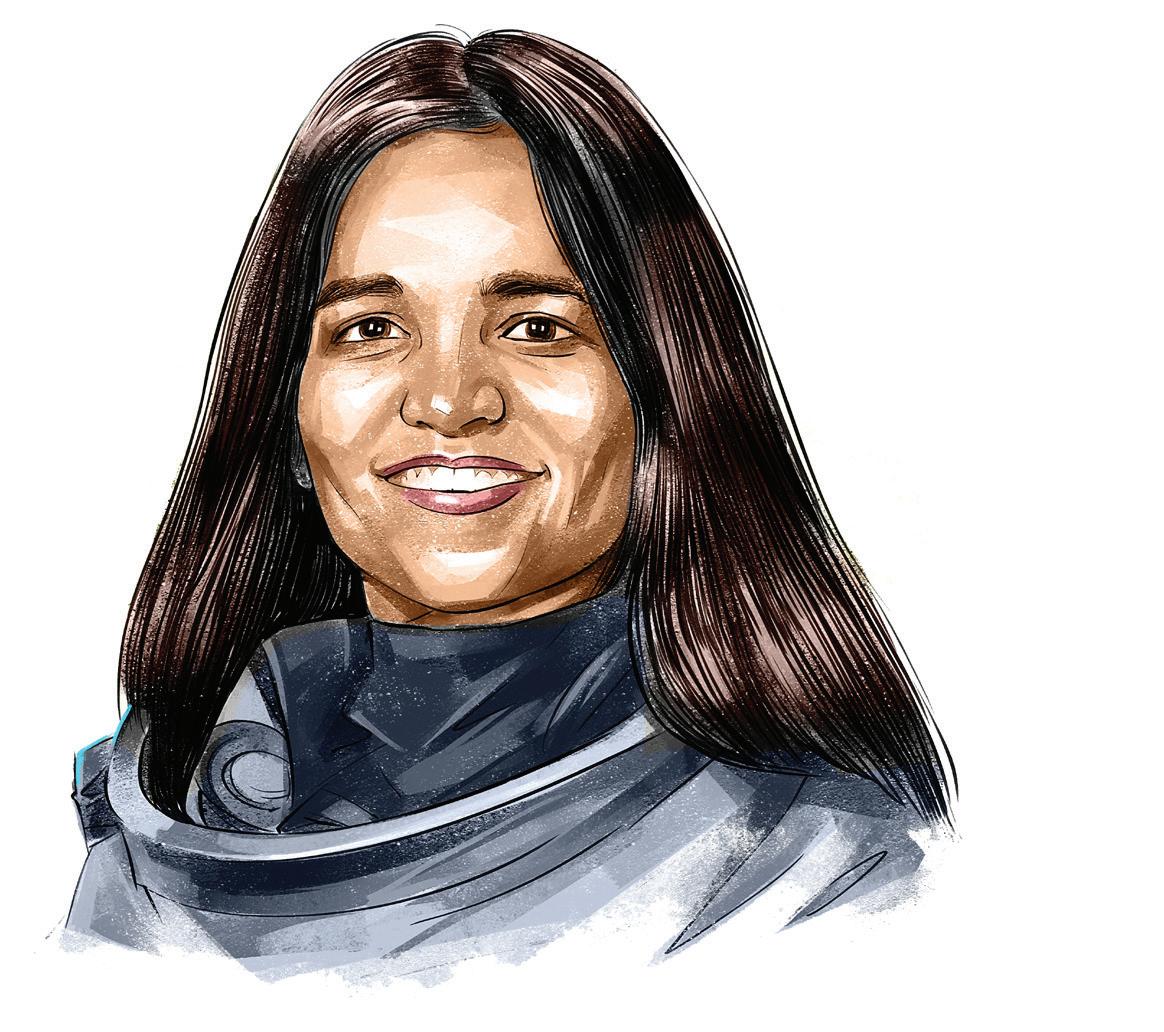
After finishing school, Kalpana Chawla decided to pursue her dream of becoming an aerospace engineer. She went to Punjab Engineering College. Her professors tried to discourage her from choosing aeronautical engineering, stating that there were limited career opportunities for girls in India. However, she was adamant and after completing her degree, she moved to the United States where she earned a master’s degree and a Ph.D. in aerospace engineering.
What did Kalpana Chawla’s professors advise and why?
Kalpana’s hard work and dedication were rewarded when she was selected by NASA, the American Space Agency, to become a trainee astronaut. This was a huge achievement and a dream come true. She trained hard to prepare for her journey to space and forged ahead even when the training was tough. She knew that reaching for the stars required effort and determination.
space shuttles: vehicles used to travel in outer space
origin: where her family came from determination: the quality of not giving up easily
aerospace engineer: a person who designs and builds planes, rockets, and other flying machines adamant: refused to be persuaded

In 1997, Kalpana Chawla made her first trip to space aboard the space shuttle Columbia. This mission was called STS-87. Kalpana and her team conducted many important experiments, and she got to see Earth from outer space. She was thrilled by the beauty of space and the excitement of floating in zero gravity. Kalpana Chawla’s second mission was in 2003, again aboard the space shuttle Columbia. This mission was called STS-107. The team conducted more than 80 experiments such as studying the reproduction of plants in microgravity and the behaviour of different materials in space. Kalpana was proud to be a part of this important work that would help scientists understand more about space
However, on 1 February 2003, tragedy struck. As the space shuttle Columbia was returning to Earth, it broke apart, and all seven astronauts on board lost their lives. It was a sad day for the entire world. People mourned the loss of the brave astronauts who had dedicated their lives to exploring space.



Did You Know?
Laika was the first dog to travel around the Earth. She was launched on a spacecraft called Sputnik 2 on 3 November 1957.
aboard: on or in a vehicle like a ship, train, or spacecraft zero gravity: a condition where there is no force of gravity, making objects and people float mission: an important job or task, often with a target goal microgravity: when there is almost no gravity mourned: felt very sad about someone’s death
What were the names of the missions that Kalpana Chawla was a part of?
Kalpana Chawla was deeply committed to promoting science education for young girls in India. From 1998, she helped to send two girls from her secondary school to NASA’s United Space School in Houston each year. She was involved in selecting and interviewing fourteen Indian students for the program over the years. Her life and achievements remind us that gender is no barrier to achieving greatness.
How does Kalpana Chawla continue to inspire young people?
Many schools, scholarships, and space programmes have been named in her honour. She brought fame to India and proved that with determination and perseverance the sky’s the limit. Kalpana Chawla will always be remembered as a pioneer in space exploration and remain a role model for aspiring astronauts around the world.
pioneer: a person who is the first to do something new or important aspiring: wanting to become something or achieve a goal



Listen to all the keywords here.
1. Sequence the following events, 1–7, in the correct order.
a Kalpana Chawla goes on the STS-107 mission and conducts more than 80 experiments.
b Kalpana Chawla is discouraged from pursuing her dream of being an astronaut.
c Kalpana Chawla is selected as a trainee by NASA.
d She goes to America and obtains her masters degree and a doctorate.
e Kalpan Chawla completes her Ph.D. in aeronautical engineering.
f Kalpana Chawla goes on the STS-87 mission.
g The space shuttle Columbia breaks apart and is lost.


2. In your notebook, summarise the great things Kalpana Chawla did. Use these headings:
• Her education
• Highlights from her space missions
• Her social initiatives
3. Answer the questions in two to three sentences.
a How did Kalpana Chawla’s childhood interest relate to her career?
b What challenge did Kalpana face as a student in India? What was her response to it?
c Describe Kalpana Chawla’s second mission to space.
d What impact did Kalpana Chawla’s achievements have on her home country and the United States? Provide one specific example for each.



1. Perseverance is the ability to continue working towards a goal despite facing challenges or setbacks.
How did Kalpana show perseverance in her journey to becoming an astronaut? Provide examples from the text and explain how she demonstrated this quality.
2. A stereotype is a belief that certain things are only for certain people. For example, some people might think only boys can be engineers.
What stereotypes did Kalpana break?


Reflect on a goal or dream you have for your future. How can Kalpana Chawla’s story inspire you to overcome potential challenges?
a What is a goal or a dream you would like to achieve?
b Name three of Kalpana Chawla’s qualities that you most admire.
c How can the qualities you mentioned above help you achieve your dreams?


1. Use a dictionary to find the meaning of the words in the box. Then, use the words to complete the sentences.
Hint Box: astronaut microgravity aerospace engineer space shuttle experiments
a The astronauts conduct many in space.
b An designs rockets and satellites, and they often work on projects that involve space exploration.
c A can be used to travel to space and back more than once which makes it a reusable spacecraft.
d In , everything floats around because there is very little gravity.
e An trains hard to travel to space, and undergoes rigorous physical and mental preparation.
Phrasal Verbs
Phrasal verbs are phrases that combine a verb with a preposition or adverb, creating a new meaning different from the original verb.
For example: lift off—The rocket will lift off at dawn. touch down—The space shuttle will touch down on Earth after its mission.
2. Use the dictionary to write the meaning of the phrasal verbs. Then, make sentences of your own in your notebook. set out blast off carry out take over look up to



Adverbs are words that describe or modify verbs, adjectives or other adverbs. They provide additional information about how, when, where and to what extent something happens.
Adverbs of Manner
These tell us the manner in which something happens.
They answer the question, How?
For example: carefully, casually, skilfully, smoothly, silently
The astronaut moved cautiously during the spacewalk to avoid any accidents.
Adverbs of Time
These tell us when something happens.
They answer the question, When?
For example: now, then, yesterday, today, tomorrow, soon, later, always
The rocket will launch tomorrow, and the mission will begin.
Adverbs of Degree
These tell us about the intensity or degree of an action, adjective or another adverb.
They answer the question, To what extent?
They are often written before the word they modify.
For example: very, quite, almost, too, enough, just, so, extremely
The telescope provides very clear images of distant galaxies.
Adverbs of Frequency
These tell us how often something happens.
They answer the question, How often?
They are usually written before the main verb but after the verb ‘to be.’
For example: always, often, frequently, sometimes, rarely, never Comets rarely pass close enough to be seen without a telescope.
1. Read the beginning of the space adventure story. Name the type of adverb in the order that they appear in the text.
The astronauts carefully prepared for their mission. They eagerly anticipated the moment they would lift off. The rocket would soon take them to the International Space Station. Because they frequently checked their equipment, they knew there would be no challenges. They spoke excitedly about the experiments they would conduct in space. As the countdown began they were extremely excited about the mission.
2. Use the adverbs given to complete the story.
Hint Box: frequently soon bravely extremely smoothly skilfully



The rocket engines roared to life, and the astronauts felt a strong push as they faced the journey ahead. , they passed through the Earth’s atmosphere and entered the vastness of space. They navigated the spacecraft, making adjustments. Inside the cabin, they worked hard, setting up their living quarters and preparing for the upcoming experiments. They floated through the cabin, enjoying the peacefulness of zero gravity. As they approached the International Space Station, they manoeuvred the spacecraft into the docking position. They were ready to begin their mission.




Listen Well
Listen to the text here.
Listen carefully to the text and complete the table with details on Astronaut Zara’s routine.


Practise speaking here.
An anecdote is a short, entertaining story about a real incident or person. Anecdotes can be about personal experiences or stories heard from others.
An anecdote should:
• be brief and to the point.
• be based on actual events or personal experiences.
• illustrate a point, provide an example, or entertain.
• involve personal experiences, making them relatable and engaging.
Think of an interesting anecdote and share it with the class.
Preparation:
a Think of a personal story or anecdote that is interesting or meaningful to you. It can be something funny, surprising, adventurous or touching.
b Plan the beginning, middle and end of your story.
Then, something unexpected happened... I/we noticed... Suddenly, we...
In the middle of our…, we discovered…
One sunny day, I/we decided to…
A few years ago, I…
In the end, I/we realised… Finally, we reached…
From that day on, I always...
In conclusion, the experience taught me...


An article is a piece of writing that is published in a newspaper, magazine, journal, or online. Articles can cover a wide range of topics, including news, opinion, research, reviews, and more. They are written to inform, entertain, or persuade readers.
An article includes the following:
Title: The title should be clear and indicate the topic of the article.
Byline: This is where the writer’s name is mentioned.
Introduction: Start with a hook to grab the reader’s attention. Introduce the topic and provide some background information. State the purpose of the article.
Body: Organise the main points in paragraphs. Each paragraph should cover one main point or idea. Use facts, details, examples, and explanations to support each point.
Conclusion: Summarise the main points and end with a final thought or call to action.
Write an article of 100–120 words on ‘The Importance of Scientific Discoveries’.




Imagine that you are onboard a fast rocket travelling through space. What are some things you can see? Fill in the mind map and share what you wrote with your partner.
This poem takes you on a journey in a speedy rocket. You’ll be surprised at how fast it moves! Let’s read the poem aloud and find out more about this experience.


This rocket’s going fast!
Super-fast!
Faster than light, it’s out of sight!
A zipping zapping rocket on a slipstream trip. It rides it rips through the Milky Way it dips. It whips, it slips, meteors it clips!


The first Indian rocket, named Rohini-75, was launched on 10 August 1969, from Kerala. This marked India’s debut in space exploration. Did You Know?
How does the rocket travel through the Milky Way?
slipstream: the smooth, fast-moving air behind an object that moves quickly meteors: large rocks in space clips: to hit something quickly or lightly debut: first try

It zips, it tips, this rocket shakes its hips! This super-duper-blooper rocket sliding on a beam of light, it’s bright, a fright, it swerves incredibly tight. This rocket’s so wonderfully fast, It arrives at night time before night!
It’s a dream-exploding, Mind-imploding, zooming melody of thought-dissolving, whizzing cacophony of engine thrust and time revolving!
An incredible super-speedy rocket ship.

swerves: changes direction suddenly imploding: falling inward on itself suddenly melody: a soft tune or music that is pleasant and soothing to hear cacophony: a loud mixture of sounds that are not pleasant thrust: a strong force that pushes something forwards or upwards
What are some adjectives the poet uses to describe the rocket?
Listen to all the keywords here.



1. Tick () the correct answers.
a What is the main focus of the poem? A rocket…
i exploring new planets.
ii racing against other rockets.
iii demonstrating incredible speed.
iv collecting space samples.
b How does the rocket interact with meteors in the poem?
i It avoids them completely.
ii It collides with them head-on.
iii It barely touches them as it passes.
iv It collects them along the way.
c What is the relationship between the rocket’s speed and time?
i Time slows down for the rocket.
ii The rocket moves faster than time itself.
iii Time has no effect on the rocket.
iv The rocket experiences time normally.
d What do the words dream-exploding and mind-imploding suggest about the speed of the rocket?
i It is unimaginably fast.
ii It implodes on itself.
iii It is only a dream.
iv It explodes in space.
e What unusual ability does the rocket have because of its speed?
i It can change colours.
ii It can split into multiple rockets.
iii It can arrive before dawn.
iv It can travel forward in time.

2. Match the lines from the poem and their meaning.
Faster than light, it’s out of sight!
It zips, it tips, this rocket shakes its hips!
It arrives at night time before night!
Whizzing cacophony of engine thrust.
Sliding on a beam of light.
The rocket seems to move without effort.
The engines make a very loud noise.
The rocket travels at a speed faster than light.
The rocket is faster than time itself.
The rocket does not travel in a straight line.
3. Assonance is when the same vowel sound is repeated in nearby words.
For example: In the line ‘Whips, it slips’ the short i sound is repeated.
Find another example of assonance in the poem. Write the line.
4. Onomatopoeia is when a word imitates the sound it describes, like ‘whizzing’.
Find another example of onomatopoeia in the poem. Write the word here:


Think about a time when you felt a sense of speed and excitement, similar to the rocket in the poem.
• Describe the experience: Where were you and what were you doing when you felt this thrill?
• Feelings and senses: How did it make you feel? What did you see, hear or feel during this experience?
• Connection to the poem: How is your experience similar to the rocket’s journey in the poem?


1. Create a word web using the words ‘Speed’ and ‘Excitement’. Write words or feelings that you associate with the two words.
2. Read how the phrases are used in the poem. In your notebook, use them in sentences of your own.
dream-exploding beam of light zipping zapping time revolving out of sight



Imagery is when a writer uses words to create pictures in the reader’s mind. It helps make the poem (or story) feel more real by describing how things look, sound, smell, taste, or feel.
The poem uses imagery to help us imagine the rocket’s speed and movement.
Speed imagery:
a Write a line from the poem that helps you imagine how fast the rocket is moving.
b Describe in your own words what you see in your mind when you read that line.
Movement imagery:
a Write a line from the poem that describes how the rocket moves through space.
b Describe in your own words what you see in your mind when you read that line.



—Lavanya Karthik


List ten activities or jobs that are done by both men and women.
Share the list with your classmates and discuss what different students wrote.
In a little town in India, Janaki lives in a world filled with simple comforts and strict rules. She wishes to be free from these rules and create a world of her own. Let’s join her on a journey where she learns about self-image and confidence, guided by her father’s love and the secrets of the forest.



The seaside town of Thalassery in Kerala is Janaki’s world. It is a world of simple comforts. It is also a world of rules.
Rules that say girls do not need school. Rules that say girls must marry early and start a family. Rules that say she is too tall, too plain, too different.
Until she discovers a secret world. It lurks in her father’s smile as he watches the birds flying overhead. It shines in his eyes as they row through the mangrove forest near Thalassery, watching the birds. It shimmers in the pages of the notebooks he fills with observations about those birds.
What are the rules that Janaki has to live by?
‘Achan, I wish I was a bird,’ Janaki sighs, on one of their trips into the forest. ‘I would fly far, far away.’
lurks: hides or waits secretly mangrove: a type of tree or shrub that grows in coastal areas with roots that come up out of the water shimmers: glows or shines with a soft, flickering light
Achan: an elder male member of the family
Mangrove forests, like the ones in Kerala, protect coastlines from storms and provide homes for many birds and animals.

Achan laughs, ‘You’re not a bird, Janaki.’ He reaches into the water and picks up a mangrove seed floating by the boat.
‘This is what you are,’ he beams. ‘A seed!’
What does Achan say Janaki is?
Tears sting Janaki’s eyes. Is that all she is—a seed, bound to the ground, the way she feels bound by rules?
Can’t she fly like the birds Achan loves so much?
‘I don’t want to be!’ she cries, flinging the seed down. ‘I wish to fly. Be free!’
‘Where would you fly to?’ he asks, puzzled.
‘A secret world like yours! The one you slip away to when you think about your birds!’

There is only the quiet lap of water, the hum of bees, and the chirps and twitters of a hundred birds. The air hangs heavy and still.
‘Is this world not enough?’ Achan’s voice is gentle.
Janaki shakes her head. ‘I do not belong in it,’ she whispers. ‘I do not fit its rules.’
‘They don’t belong here either,’ Achan says, pointing at the mangroves around them.
According to Achan, what does not belong to this world either? Why do you think so?
Janaki stares up at the dense green foliage and down at the gnarled roots twisting up out of the water.
‘But, Achan,’ she says, ‘You said this forest has been here for hundreds of years!’
‘It has. But it only grew because something swam hundreds of leagues across the sea and took root here.’
‘What was it?’ Janaki asks, her eyes wide in wonder.
beams: smiles happily bound: tied or held down flinging: throwing something with force lap: the gentle sound of water moving against something the air hangs heavy: the air feels thick, warm, and still
dense: thick or closely packed foliage: leaves of plants or trees gnarled: twisted and rough leagues: a unit to measure distance (1 league = approximately 5 kilometres)

‘This.’ Achan points to the seed lying at her feet. ‘A single seed like this one.’
‘A single seed grew this forest?’
Achan nods. ‘Every seed is the promise of a forest, Janaki,’ he says, ‘Like you are.’
‘I’m...a forest?’
‘Indeed. A forest of dreams, ideas, and possibilities!’ Achan smiles. ‘Nothing can stop a forest from growing, Janaki. Not even rules.’
A lifetime spent studying birds—that is Achan’s secret world.
Janaki imagines a life for herself of quiet study and solitude, of learning and discovery. A secret world all of her own.
And Achan sees a light in her eyes—a light just like his own. As they head home, Janaki reaches down for the mangrove seed lying at her feet.
‘Go,’ she whispers, placing it in the water. ‘Go be a forest.’
One day, she would be one too.
solitude: quiet time alone
Think and Tell
What would Janaki become one day?
Listen to all the keywords here.




1. Complete the paragraph with words from the story.
At the beginning of the story Janaki feels trapped in a world of that determine what a girl may and may not do. She expresses the wish to away and be as as the that her father loves so much.
She is upset when her father says she is like a because she thinks it means she will be to the ground in the same way that the rules bind her.
2. Answer the questions in two to three sentences.
a Which are the rules that Janaki wishes to be free from?
b Janaki says that she does not fit in. What else does Achan say does not fit in? What explanation does he give? Where do they come from?
c According to Achan, what is the promise that lies in a seed?
d How does Achan describe the kind of forest Janaki can be?
e How does Janaki imagine her own perfect secret world?
3. Match the situations from the story and characters’ actions or emotions.
Situation
Emotion or action expressing emotion
Janaki shows her disappointment that she is not as free as a bird. beams (smiles)
Achan is proud and happy when he compares Janaki to a seed. flinging
Janaki’s anger and frustration at being compared to a seed. puzzled
Achan cannot quite understand why Janaki would want to fly away. sighs




1. Describe Achan’s secret world and the world that Janaki comes to believe she can have. Use these guidelines to create a table in your notebook.
Achan’s Secret World
What is his secret world and what does he do to explore and enjoy it?
Draw a simple image that you think best represents Achan’s secret world. This is called a symbol.
Janaki’s Secret World
Do you think Janaki will stay in the village and find her perfect world or will she go away? Give reasons for your opinion.
Draw a symbol that represents the future world Janaki dreams of.
2. The beginning of the story shows it is written in the third person narrative—the storyteller stands outside the situation and talks about the characters as he and she. Answer the questions in your notebook.
a What are some of the themes that the storyteller explores in the story?
b What is the message of the story? Think about what Janaki comes to realise.
Themes are the big ideas the writer explores, such as kindness or determination.
c How does the title of the story link with the message?
3. a Identify three similes in the following paragraph.
Janaki felt as trapped as a bird in a cage under the strict rules of her village. Her father’s encouragement was like a gentle breeze, lifting her spirits. Realising that she is like a seed from which a forest can grow, changes Janaki’s life.
Similes compare two different things using the words ‘like’ or ‘as’ to show similarities. They make descriptions more vivid. For example: Her smile was as bright as the sun.
b Make two similes to describe Achan’s feelings or actions.





In the story, Janaki faces restrictions based on gender stereotypes. Reflect on your own experiences or observations. As a class, discuss how you think gender roles and stereotypes affect young people today. Do you agree with these limitations? Why or why not?
A generalised idea people have about members of a group or a place, e.g., Girls are not tough. Forests are dangerous.
After the discussion, answer the questions in your notebook.
a What are some things people say boys or girls should or shouldn’t do?
b Have you ever been told you can’t do something because you’re a boy or a girl?
c How did it make you feel?
d Do you think these rules about boys and girls are fair? Why/Why not?


Use the clues in brackets to create antonyms using the prefixes (un-, dis- and im-).
a Janaki (liked) being bound by rules.
b She thought the rules for girls were (fair) and wanted to change them.
c Unjust rules (encouraged) her from following her dreams.
d The rules made her feel (important).
e At first, Janaki thought it was (possible) for her to accept that she was like a seed.


Remember!
Adjectives are words that tell us something more about a noun. We say an adjective modifies (describes) the noun.
Adjectives of quantity: These adjectives tell us the quantity/amount of a noun without giving a specific number.
Ask: How much … ? How many … ?
Adjectives of quality: These adjectives tell us about the qualities or features of a noun–how it feels, smells, looks or sounds.
Ask: What kind of … ?
Possessive adjectives: These adjectives tell us who owns or possesses a noun.
Ask: Whose … ?
Demonstrative adjectives: These adjectives help to identify specific nouns. They always appear before the noun referred to.
Ask: Which one?
Comparative and superlative adjectives: Comparative adjectives compare two nouns by adding -er or more to the word. Superlative adjectives compare three or more nouns by adding -est or most.
Adjectives of number
These adjectives show the number or order of nouns. They are more specific than adjectives of quantity and are only used with countable nouns.
Interrogative adjectives
These adjectives modify nouns to ask questions. They are used before a noun.
For example: more, many, several, few, half Janaki learnt many things from her father.
For example: beautiful, black, sweet, loud, square Achan was an understanding father.
For example: his, her, its, yours, ours, theirs Her understanding of freedom changed. Janaki and Achan enjoyed their trips.
For example: that, this, those, these This seed travelled far before it grew here.
For example:
This tree is big but that one is bigger. This mangrove tree is the biggest we have seen so far. Add -er and -est and more and most for longer words.
For example: one, two, three, first, second, third A tree grows from one seed.
For example: what, which, whose What boat will Janaki and Achan use? Which boat will they choose, this one or that one?
Whose boat is it?
The difference between what and which: Use which if the options are known and limited. Use what if the options are unknown or there are different options.

Note:
Interrogative adjectives
Interrogative pronouns
These always modify nouns or pronouns. (They are used immediately before a noun) They stand removed from the noun.
Which boat is bigger? Who is Janaki’s father?
1. Read the sentences. Underline the adjectives and identify the types.
a The old rules of the village were too rigid for the girls.
b These forests were once a small seed.
c The villagers are bound by stereotypical thinking.
d What bird do you choose to be like?
e You will have to follow a few rules.
Adjectives that describe how much or how many are also called quantifiers. For example: few, little, much and many
We use different quantifiers depending on whether the noun is countable or uncountable.
Countable nouns
Use few with countable nouns.
There are few children in class. (meaning not many)
There are a few children in class. (meaning there are some)
Fewer is the comparative form of few.
There are fewer children in class than before.
There are few boats and even fewer people.
Many, a lot of
There are many/a lot of children in class.

A lot many is a common error.
Uncountable nouns
Use little with uncountable nouns. Very little milk is left. (meaning not much)
There is a little milk left. (meaning there is some)
Less is the comparative form of little.
There is less milk than before. There is only a little water left but even less milk.
Much, a lot, a lot of How much water is left?
There is still a lot of water.
There isn’t a lot left.

Using lesser to compare is a common error.
2. Fill in the correct quantifiers from those given in brackets.
a Seema read (many/much) books on medical research.
b Seeing so (many/much) ambition in someone so young was encouraging.
c In those days there were very (few/less) tutors to help girls.
d Her father had too (less/little) money to educate her in the city.
e There were (a lot of/little) scholarships for boys.
f Seema was only interested in (a few/a little) courses and looking at the entry requirements there were even (less/ fewer) she could do.
g There was (little/less) chance of gaining entry and even (fewer/less) chance of finding the money. Listen to the text here.

Listen Well

Listen carefully to the text and number the sentences in the correct sequence. Events Correct Order
Maya practised hard every day after school.
Maya’s name was on the team list.
Maya loved playing football.
The coach announced tryouts for the town’s football team.
Maya became a key player, and everyone cheered for her.
Maya played with all her heart at the tryouts.


Pay close attention to the main ideas and important details in the passage. This will help you understand the overall message and remember the sequence of events.
Jot down quick notes or keywords as you listen.





Practise speaking here.
Sit in pairs. You will take turns to interview each other on whether or not girls and boys are treated differently at home and at school. As one of you asks the question, the other can share their experiences and give examples. Also share how you feel about the situation.
Do you think boys and girls are treated differently at home or school?
Can you share an example? How did it make you feel?
How do you think it makes people feel to be treated differently? Have you noticed any specific activities or tasks that are assigned more to boys or girls? Why do you think these differences in treatment exist?
What steps can we take at school/in our society to ensure gender equality?


Don’t interrupt, and show that you are listening by nodding or giving verbal acknowledgement.
Ask follow-up questions based on the responses you get to keep the conversation flowing.
Be respectful and considerate of the other person’s experiences and opinions.


An email is a message sent over the internet to another person. It is often used for quick and easy communication.
Model Answer
Subject: Request for permission to organise a clothes donation drive
Dear Hema ma’am,
I hope this email finds you well. I am writing to seek your permission to organise a clothes donation drive in our school.
Our class would like to organise a clothes donation drive for the shelter home near our school. We plan to hold the drive on the school premises on 3 August 2025, after school hours. Students can drop their used but good clothes, shoes and books which will then be donated to Bala Mandir to support the children there.
We believe this initiative will not only help the children of Bala Mandir but also foster a sense of community and responsibility among students. We request your approval for this event and any guidance you might have for us. Thank you for considering our request.
Yours sincerely,
Ravi Kumar Class 5-A.

Subject Line
Greeting
Introduction stating the purpose of the email
Provide necessary information and context
Summarise the main points or state any expected actions
Closing
Signature
Write an email to your school principal proposing the idea of organising a workshop to educate students about the importance of gender equality.

1. Correct the articles in the paragraph.
In an bustling city park, a elderly woman named Margaret sat alone on the bench, her eyes were filled with sorrow. The young girl named Lily skipped through a park, her laughter rang out like the melody. Without hesitation, a little girl approached Margaret and asked, ‘Why are you so sad?’ Surprised by a child’s question, Margaret started talking to her. Their growing friendship showed an effect that human connections could have.
2. Use the correct modal verbs in the questions.
a you organise a neighbourhood picnic to get everyone together? (ability)
b I suggest your name for the community service project? (permission)
c We visit all villages in this area to assess how happy people are. (advice)
d They not quarrel about petty issues like who uses the swing first. (obligation)
3. Make negative sentences using the given modal verbs.
a must:
b can:
c may:
d should:
e must:
1. Read the sentences below and underline the adverbs. Then, label each adverb according to the type: manner, frequency, time, or degree.
a The astronaut carefully prepared for thespace mission.
b The rocket launches weekly at the space centre.
c The space station will be visited soon by the international crew.
d The experiment was extremely successful.
e They will land on the Moon tomorrow.
f The rover moved smoothly across the lunar surface.
g They always follow safety procedures before launching.
h The astronaut floats gently from one side of the capsule to the other.
2. Fill in the blanks with the adverbs in the box.
Hint Box: rarely yesterday quietly quickly very
a The astronaut moved through the spacecraft to avoid making a noise.
b A space shuttle is used more than four times.
c The team celebrated the successful launch .
d The telescope provided clear images of distant galaxies.
e The rocket was assembled in the launch facility.
3. Write one sentence for each type of adverb.
a happily:
b often:
c slightly:
d later:

1. Read the dialogue and match the adjectives in bold and their type.
Two students are speaking to their teacher.
Tanya: Which experiment are you doing, sir, or are you doing two experiments at the same time?
Teacher: This is a new one you have not seen before. That one you have seen before.
new interrogative that quality which demonstrative their number two possessive
2. Complete each sentence with the correct form of the adjective: comparative or superlative.
a Some people think that boys are (strong) than girls, but that is a stereotype.
b The (wise) people are those who don’t follow stereotypes about gender.
c The (common) stereotype is that girls are (emotional) than boys.
d Boys are often shown as being (brave) than girls in adventure stories, but bravery can be found in everyone.
e The (creative) projects are done by those who ignore gender stereotypes and follow their passion.
3. Use appropriate adjectives in the blanks.


In the world of athletics, many women have shattered stereotypes. determination and resilience inspire us all. The idea that sports are considered ‘men’s’ or ‘women’s’ sports is changing. women have fought for equal opportunities, regardless of gender. woman who has made a big difference is Arunima.



4. Use these quantifiers in sentences of your own and classify the noun as countable (C) or uncountable (U).
a much: (debate: U)
b little:
c few:
d some:
e any:
There was much debate about girls joining the army.

Name of the Student:
Class: 5
Roll Number:
Section:
Date:
Section – A
(Reading and Vocabulary—25 marks)
Read the text and answer the questions.
Microplastics are tiny pieces of plastic, smaller than a grain of salt, that are all around us. They come from items like plastic bottles, bags and packaging materials that break down into tiny pieces over time. They also come from our clothes when we wash them, and even from the tyres of cars as they wear down. These microplastics end up in the air we breathe, the water we drink and the food we eat. Scientists have detected microplastics in human blood, muscles and even in people’s brains.
So, how can we reduce the risk of consuming plastic? Start by using your own reusable bags instead of buying food in plastic packaging. When cooking, use stainless steel or cast iron pans instead of nonstick ones, which can release microplastics when heated. Another good tip is to filter your tap water to remove microplastics. We need to take action to reduce the use of plastic so that we can protect our bodies from the harmful effects of microplastic.
1. Find the words in the passage that mean the same as the words given below. (4 marks)
a found (paragraph 1)
c give off (paragraph 2)
b taking in (paragraph 2)
d keep safe (paragraph 2)
2. Write True or False. (3 marks)
a The plastic we use every day turns into microplastic immediately.
b Microplastics are present all around us.
c Research is being done on microplastics and where they are found.
3. Answer the questions in two to three sentences. (8 marks)
a What does the suffix micro- in the word microplastics mean?
b Name three ways that microplastics enter the environment.
c Name three ways that humans can take in microplastics.
d How can the choices we make every day help reduce the amount of microplastics in our bodies and the environment?
Read the poem and answer the questions. Let’s take care of our Earth today, In simple and thoughtful ways.
Turn off lights when you leave the room, Save Earth’s energy in any way you can.
Walk or cycle, don’t always drive, Keep our planet’s air alive.
Plant a tree, let it grow tall, Help the animals, big and small.
Use less plastic, make a change, These little steps aren’t so strange.
Together we can do our part,
Sustain the world, we have to start!
4. Choose the correct answer. (4 marks)
a In which way can we save energy according to the poem?
i By planting trees
iii By turning off lights
ii By recycling bottles
iv By walking

b Which of the following will not improve air quality?
i Planting trees
iii Driving
ii Using bicycles
iv By walking
c What does it mean to sustain the Earth? Choose the best answer.
i Give it food and water
iii Save trees for animals
d What is the main idea of the poem?
ii Keep it alive and well
iv Keep humans safe
i Recycling is the most important thing.
ii Saving energy is very important.
iii Driving is bad for the environment.
iv Take care of the Earth in simple ways.
5. Answer the questions in two to three sentences. (6 marks)
a Name four ways to save Earth according to the poem.
b Explain two ways how planting a tree will help animals.
Section – B (Grammar—10 marks)
6. Fill in the blanks with the correct articles. (6 marks)
a Walking or biking is good way to reduce pollution in cities.
b We all have important role in protecting the environment.
c Recycling plastic helps reduce amount of waste that ends up in landfills.
d Planting trees is essential step in fighting climate change.
e Turn off lights when you leave the room to save energy.
f Using reusable bags is simple way to cut down on plastic waste.
7. Use the modals given to form questions about the environment. (4 marks) can: may: should: must:
8. Your school is starting a recycling program to encourage students to manage waste better. Write a notice to inform your classmates about the program. Include the following details in your notice: (7 marks)
i Title: Give your notice a clear and informative title.
ii Date and Time: Mention when the Recycling Program will start.
iii Location: Specify where the recycling bins will be placed.
iv Purpose: Explain why the Recycling Program is important.
v What to Recycle: List the items that can be recycled.
vi Contact Information: How can students get more information or ask questions?
9. Write an 80–100-word paragraph on why conserving water is so important. Use the following guidelines to help you structure your paragraph: (8 marks)
i Start with a Topic Sentence: Clearly state why conserving water is important.
ii Include Key Points: Mention the benefits of saving water, such as protecting natural habitats and ensuring water availability for future generations.
iii Give Examples: Provide a simple example of how people can conserve water in their daily lives.
iv End with a Conclusion: Summarise the importance of water conservation.

Name of the Student:
Class: 5
Roll Number:
Section:
Date:
Section – A (Reading and Vocabulary—25 marks)
Read the text and answer the questions.
Gender equality means treating everyone fairly, regardless of whether they are male or female. A lot of progress has been made in India over the years. In the past, many girls were not encouraged to go to school, study or enter the job market. Now, many girls are studying, and following a range of professions in fields like science, economics and technology. Many more girls are joining the police force or the army. Women have proved themselves to be capable leaders and have become successful politicians and business owners. We also see famous female athletes who continue to inspire others.
Men have learnt that they can help with cooking, cleaning and taking care of children, which were once seen as ‘women’s jobs’. When men and women support each other and share responsibilities at home and at work, our society becomes fairer and stronger.
1. Use the prefixes in-, dis- and un- to form the opposites of these words from the passage. Then, write sentences using the words you made. (5 marks)
a equality
b encouraged
c capable
d successful
e fair
2. Summarise the text in five sentences. Include a clear introductory and closing sentence. (5 marks)
3. Answer the questions in two to three sentences. Use your own words. (5 marks)
a Explain how gender equality has improved in India over time.
b Name a woman who is a leader and mention what she does.
c Name an Indian sportswoman who has set an example and describe how.
d Explain how men’s roles have changed over time.
e Do you agree that society becomes stronger when men and women share responsibilities at home? Give reasons for your answer.

Read the poem and answer the questions.
Boys and girls are stars in the sky, Shining bright and reaching far and high.
Like two sides of a coin, so fair, Each has dreams they boldly share.
Girls, like flowers, need sun to bloom, Boys, like rivers, need room to zoom. Together, they paint the world so grand, With equal chances, hand in hand.
No walls can block their paths of light, When they join forces, day or night.
In a world where everyone can shine, Equality makes their dreams align.
4. Choose the correct option.
a What does the poem compare boys and girls to in stanza 1?
i Flowers and rivers ii Stars and coins
iii Lights iv Dreams
b Which metaphor is used to describe the way girls need the sun?
i Girls need to be like rivers to grow and flow freely.
ii Girls are like flowers that need the sun to flower.
iii Girls need equal chances to shine
iv Girls are like stars needing light
c What does the poem compare boys to?
i Flowers ii Rivers
iii Coins
(4 marks)
iv Stars
d What imagery is used to describe the combined strength of boys and girls in the poem?
i A grand, painted world ii Walls that block light
iii Painted stars
iv Zooming rivers
5. Find a word from the poem that means the same as the words given below. (3 marks)
a pretty b to flower c to line up
6. Answer the questions in three to four sentences. (3 marks)
a Which image is used in stanza one to describe that boys and girls are similar?
b What, according to you, are the ‘equal chances’ that boys and girls need? (stanza 2)
c In your own words describe what happens when boys and girls ‘join forces’. (stanza 3)
Section – B (Grammar—10 marks)
7. Fill in the blanks with the determiners in the box. (5 marks) little few any many some
Many women have achieved success in the field of sport. women have won gold medals, while a have even become world champions. A effort every day helped them reach their goals. Many years ago, people believed that women could not compete successfully in sports like boxing, soccer and weightlifting, but they have been proved wrong. Women have proved that no-one can hold these kinds of beliefs more.

8. Use the clues in brackets to fill in the correct form of the adjectives. (2 marks)
a It is often said that boys think (logic) than girls, but this is not true.
b Girls often develop language skills (early) than boys and tend to have a (large) vocabulary in the early years.
c Girls are often better at focussing on tasks for (long) periods than boys.
9. Complete the sentences using the type of adjective shown in brackets. (3 marks)
a (demonstrative) girls who develop a rich vocabulary at a young age, usually excel in both language and maths.
b Boys are usually more inclined to take (quality) risks, while girls tend to be more careful.
c Boys are generally more interested in competitive play involving (number) players, while girls often prefer doing (possessive) own thing.
d Girls typically show (quantity) empathy and are better at reading (quality) expressions that show people’s feelings.
10. Write a letter to your school principal requesting the introduction of a new program that promotes gender equality. (7 marks)
• Explain why gender equality is important in your school.
• Describe the activities or workshops you would like to see included in the program.
• Request support from the principal to implement these activities.
11. Write an article on the following topics related to gender. Your article should be about 100 words. Use the hints and suggestions provided to help you organise your thoughts. (8 marks)
• Discuss ways that schools can promote respect and fairness among students of different genders.
• Provide examples of activities or rules that will ensure everyone is treated equally.













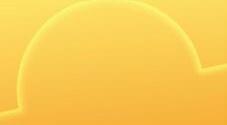

















































































Alfred, the carpenter, goes to the market to purchase nails and screws.
The weight written on the packet of nails is 2.5 kg.
Alfred gets confused when he sees a weight which is not a whole number. Let us help him out by reading the number!
The number that uses a decimal point followed by digits is called a decimal number.
Decimals have a whole number part and a fractional (or decimal) part, which is separated by a decimal point.
When 1 whole is divided into 10 equal parts, then each part is called one-tenth.
Fractional representation = 1 10
Decimal representation = 0.1
Let us see some more tenths.
Each whole is divided into 10 equal parts
Let us see how to read 0.6. It is written as zero and six tenths.
Write the decimal for the shaded part.
Whole number part
part
point

The decimal part after the decimal point is always less than 1 whole.
As we move towards the right-hand side of the decimal point, the value of the digit decreases 10 times. Let us write the expanded form of decimals up to tenths.
Write 14.6 and 45.7 in the place value table and in their expanded form.
Tenth (value of 6 is 6 10 or 0.6) Ones (value of 4 is 4) Tens (value of 1 is 10)
form: 10 + 4 + 6 10
=
+ 4 + 0.6 Expanded form of 45.7 = 40 + 5 + 0.7

Example 1: Write the decimal number of the coloured portion. Also, write the decimal number in words.
Thus, the coloured part represents 2.2 in decimal form.
In words: Two point two or two and two tenths.
Example 2: Fill in the blanks.
Figures
6.2
11.6
Words
Six and two tenths
Eleven and six tenths 51.9
760.5
Fifty-one point nine
Seven hundred sixty point five
Example 3: Write the decimals 15.7 and 23.9 in the place-value table. Also, write these in words and in expanded form.
15.7 is written as fifteen and seven tenths.
15.7 = 10 + 5 + 7 10 Or 15.7 = 10 + 5 + 0.7
23.9 is written as twenty-three and nine tenths.
23.9 = 20 + 3 + 9 10 Or
When 1 is divided into 100 equal parts, then each part is equal to one-hundredth.
Fractional representation = 1 100
Decimal representation = 0.01
One-hundredth is the same as one-tenth further divided into 10 equal parts. Let us see a few more hundredths.
Reading and Writing
Let us learn how to read decimal numbers up to hundredths. 15.54 fifteen fifty-four hundredths and fifteen point five four
Let us note down the above number in the place value chart and write its expanded form.
15.54 1 5 . 5 4
Expanded form: 10 + 5 + 5 10 + 4 100 Or 15.54 = 10 + 5 + 0.5 + 0.04
Example 4: Fill in the blanks.
Three and fourteen hundredths 14.36
Fourteen and thirty-six hundredths 12.91 Twelve point nine one 104.05 One hundred four point zero five
Example 5: Write 34.18 in expanded form.
Expanded form: 30 + 4 + 1 10 + 8 100 Or 34.18 = 30 + 4 + 0.1 + 0.08
Thousandths
When 1 is divided into 1000 equal parts, then each part is equal to one-thousandth.
Fractional representation = 1 1000
Decimal representation = 0.001
One-thousandth is the same as one-hundredth further divided into 10 equal parts.
Reading and Writing Thousandths
Let us read and write decimal numbers in thousandths.
Write 14.179 in the place value chart. One-thousandth

one hundred seventynine thousandths and
The expanded form of the above number using the place value chart can be given as:
Equivalent decimals are decimal numbers which have the same value. They are also called equal decimals. For example:
If we place zeroes before the end of the decimal, then it changes the value of the number, and thus the decimal numbers are not equivalent. For example: 0.5 and 0.05 are not equivalent decimals.

When we place zeroes on the right-hand side of a decimal number, its value remains the same.
Example 6: Fill in the blanks.
Figures Words
14.814
16.005
514.047
Fourteen and eight hundred fourteen thousandths
Sixteen and five thousandths
Five hundred fourteen point zero four seven 5.407
Five point four zero seven
Example 7: Write 76.103 in the expanded form.
76.103 = 70 + 6 + 1 10 + 3 1000 Or 76.103 = 70 + 6 + 0.1 + 0.003
Example 8: Write any three equivalent decimals for 14.3.
14.3 = 14.30 = 14.300 = 14.3000
Now, let us learn how to convert fractions to decimals and vice versa.
Let us convert 1 5 into a decimal number.
Step 1: Multiply the denominator and the numerator by the same number so that we get a power of 10 in the denominator.
Step 3: Insert a decimal point before the number of places equal to the number of zeroes in the denominator from the rightmost side. 1 5 = 1 × 2 5 × 2 = 2 10 = 0.2
Let us now convert 0.25 to a fraction.
Step 1: Write the decimal with a denominator of 1.
Aryabhata, an astronomer and mathematician from ancient India, represented fractional values in a way that contributed to the development of the modern decimal system.
Step 2: Write a fraction with the denominator as 10, 100 or 1000.
So, 1 5 is the same as 0.2.
Step 2: Convert the denominator into multiples of 10, 100 or 1000 to eliminate the decimal point.
0.25 = 0.25 1 = 0.25 × 100 1 × 100 = 25 100 = 25 ÷ 25 100 ÷ 25 = 1 4
Step 3: Express the fraction in its simplest form.

Example 9: Convert the given fractions into decimals.
1 1 2 = 1 × 5 2 × 5 = 5 10 = 0.5
2 3 25 = 3 × 4 25 × 4 = 12 100 = 0.12
3 3 8 = 3 × 125 8 × 125 = 375 1000 = 0.375
Do we convert all the fractions into fractions with denominator of 10, 100, 1000 to convert them into decimals?
Example 10: Convert the decimals into fractions.
1 4.2 = 4.2 1 = 4.2 × 10
2 0.174 = 0.174
Percentages
Let us look at the given grid. How will we write it as a fraction or a decimal?
40 out of 100 squares are shaded.
Fraction of the shaded part = 40 100
Decimal of the shaded part = 0.40
40 100 can also be written as 40 percent since percent is per hundred.
Percentage is represented by ‘%’.
So, 40 percent is also written as 40%.
Converting Fractions to Percentages
Fraction Multiply by 100% Percentage
For example: 53 100 = 53 100 × 100% = 53%
4 5 = 4 5 × 100% = 80%
Converting Decimals to Percentages
Multiply by 100 and shift the decimal point two places to the right.
For example:
0.45 = 0.45 × 100% = 45%
3.25 = 3.25 × 100% = 325%
Converting Percentages to Fractions
Percentage Divide by 100 Fraction
For example:
47% = 47 100
48% = 48 100 = 12 25
Converting Percentages to Decimals
Divide by 100 and shift the decimal point two places to the left.
For example:
69.4% = 69.4 ÷ 100 = 0.694 84% = 84 ÷ 100 = 0.84
Example 11: Convert the given percentage to a fraction and a decimal.
1 18%
As a fraction: 18% = 18 100 = 18 ÷ 2
As a decimal: 18% = 18 ÷
Example 12: Do as directed.
1 Convert 5 into a percentage.
5 = 5 × 100% = 500%
2 Convert 12.306 into a percentage.
12.306 = 12.306 × 100% = 1230.6%






2 25%
As a fraction: 25% = 100 100 = 1 4
As a decimal: 25% = 25 100 = 0.25
Percent is derived from a Latin word ‘per centum’ which means ‘per hundred’.















o It Yourself 7A

Write the decimals in words.
Write the decimal numbers.
a Four hundred thirteen and two tenths b Seventy-two point three three c Three hundred sixty-one point zero four d Fifty-two and four hundred two thousandths
Shade to show the decimals and then write them in words.
Write the expanded form of the given decimal numbers.
Write in decimal form.
Convert the fractions into decimal numbers and percentages.

Rewrite the decimals as fractions and percentages.
a
Write any two equivalent decimals for the given decimal numbers. a
Write as fractions, decimals and percentages.
a Two and one tenth b Thirty-five hundredths
c Five hundred twenty-four thousandths d Three and one hundred twenty thousandths
Insert >, < or = in the blanks.
In 2021, Shivraj Dhananjay Thorat registered his name in the Asia Book of Records by covering a distance of 455.89 km in a day. Express the distance covered in expanded form.
Rakesh a contractor got a contract to build a ramp of a house. He completed 5 8 of the work in 7 days. What is the decimal form for the work completed?
The tiger is the national animal of India. There are approximately 3600 tigers in India whereas there are about 6000 tigers in the world. What percentage of the world’s tiger population is there in India?
Sanjana and her friends were measuring their heights.
Sanjana is 1.32 m tall, Sana is 1.2 m tall, Reshma is 1.26 m tall and Muskan is 1.4 m tall.
Like
Let us learn about the types of decimals.
Like Decimals
1.32 and 1.26 have 2 digits after the decimal point. 1.2 and 1.4 have 1 digit after the decimal point.
Same number of digits after the decimal point. 1.32 1.26
Decimal numbers which have the same number of digits after the decimal point are called like decimals. Thus, 1.32 and 1.26 are like decimals.
Decimal numbers which have a different number of digits after the decimal point are called unlike decimals.
Example: 1.32 and 1.2 are unlike decimals.
Example 13: Sort the groups of like decimals out of the following decimal numbers.
1.4, 5.64, 5.5, 48.14, 38.6, 147.47
Group 1: (With 1 digit after the decimal point) 1.4, 5.5, 38.6
Group 2: (With 2 digits after the decimal point) 5.64, 48.14, 147.47
Example 14: Which option shows unlike decimals?
a 14.2, 54.8, 23.6 b 71.25, 89.35, 41.51 c 13.147, 879.78
Option (a) and (b) are groups of like decimals. The numbers in (c) are unlike decimals since 13.147 has 3 decimal places and 879.78 has 2 decimal places.
Let us learn how to convert unlike to like decimals.
Consider 1.3 and 1.46.
Same number of digits after the decimal point Add 1 zero
Unlike decimals can be converted into like decimals by finding the equivalent decimal.
Put zeroes at the end of the decimal number such that the number of digits after the decimal point is the same.
Example 15: Convert 14.5, 74.543 and 15.64 into a group of like decimals.
Convert each of the decimal numbers into equivalent decimals with 3 decimal places by adding 0s at the end.
14.5 = 14.500 74.543 = 74.543 15.64 = 15.640






Thus, 14.500, 74.543 and 15.640 are a group of like decimals.
















Which of the following are a group of like decimals?
a 1.2, 5.4, 8.9, 6.54, 1.3 b 2.23, 4.26, 4.89, 4.2, 6.584
c 7.89, 7.2, 64.594, 45.2, 56.5
d 81.564, 78.512, 453.125, 486.154, 86.15 o It Yourself 7B

Tick () if the decimals are like and cross () if the decimals are unlike.
a 4.2 and 6.25 b 17.23 and 691.56 c 11.3 and 17.8 d 5.157 and 64.581
Identify the number of zeroes to be added to the decimal numbers to convert them into like decimals.
a 1.45, 1.6 b 81.566 and 12.2 c 17.98 and 14.221 d 11.001 and 11
Convert the unlike decimals into like decimals.
a 13.15, 1.2 b 3.48, 1.2 c 4.8, 1.526
Convert the fractions into like decimals.
,
The value of different currencies in terms of Indian rupees can be given as:
Japanese Yen = ₹0.54; Canadian Dollar = ₹60.9; US Dollar = ₹83.394. Convert all decimals into like decimals.
Create a word problem to convert two unlike decimals to like decimals.
Bhawna volunteered at her school’s sport event, where a long jump competition took place.
She diligently recorded the jumps of the participants.
Suhani jumped 3.2 m, Sobhita jumped 3.15 m, Kiran jumped 3.18 m and Mridula jumped 3.7 m.
Bhawna wanted to compare the lengths of the jumps of the participants. Let us see how we could do this!.
Let us compare the jumps of Suhani and Mridula.
3.2 3.7
The coloured part in 3.2 is less than the coloured part in 3.7
Since 3.2 < 3.7, Mridula jumped longer than Suhani.
Let us learn a quicker way to compare decimal numbers.
Compare 3.15 and 3.18.
Compare the whole numbers. The number with a larger whole number will be bigger. If the whole numbers are the same, compare the tenths. If the tenths are the same, compare the hundredths.
Follow the same process until you find unequal digits.
Example 16: Which of the given numbers is smaller—16.47 or 16.42?
Look at the digit in the hundredths place: 7 > 2.
So, 16.42 < 16.47. 16.42 is smaller.
Remember Bhawna? She now wants to compare the jumps of all the participants and announce the winner.
Let us see how she finds the winner!
Let us compare 3.2 m, 3.15 m, 3.18 m and 3.7 m.
If the number of digits in a number is more, then the number is not necessarily bigger.
To compare unlike decimals, make all the decimals like decimals. Then, compare the like decimals.
3.70 is the biggest number. Thus, Mridula jumped the farthest and is the winner.
Example 17: Which of the following decimals is bigger—48.25 or 48.251?

Look at the thousandths digit: 0 < 1.
So, 48.251 is bigger.

The distances jumped by 4 players are: Suhani– 3.2 m, Sobhita– 3.15 m, Kiran– 3.18 m and Mridula– 3.7 m. Arrange the distances in order, from the longest jump to the shortest.
Convert the given decimals into like decimals.
Compare the decimals and arrange them.
Thus, 3.70 > 3.20 > 3.18 > 3.15
Example 18: Arrange 12.14, 12.4, 12.04, 12.41 in ascending order.
Make the decimals like:
So, 12.04 < 12.14 < 12.40 < 12.41.
In a 100 m race, Rupali completed the race in 20.3 seconds and was the winner.
Rupali’s coach wanted to know approximately how many seconds it took her to complete the race.
Mark the decimal number on the number line.
Check which whole number is closer to the decimal number.
20.3 is closer to 20 and farther away from 21.
Thus, 20.3 rounds off to 20 when rounded off to the nearest whole number.
Let us now understand the other way for rounding off decimal numbers to the nearest whole number.
Check the digit in the tenths place. The digit in the tenths place = 3
If the digit in the tenths place is less than 5, then round down; or else, round up. Here, 3 < 5, so we will round down. 20.3 is rounded off to 20.
Example 19: Round 14.7 to the nearest whole number.
14.7 lies between 14 and 15.
Digit in the tenths place = 7 7 is greater than 5
So, 14.7 will round up to 15.






















Colour and compare using >, < or =.
Write if True(T) or False(F).
a If the digit in the tenths place is 5, then the number rounds up to the nearest whole number.
b 12.2 rounds up to 13 when rounded to the nearest whole number.
c 99.9 rounds up to 100 when rounded to the nearest whole number.
Find the greater decimal number.
a 4.2 or 4.15
Round off the numbers to the nearest whole number.
Arrange the decimal numbers in ascending order.
a 14.14, 14.1, 14.01, 14.101 b 84.56, 84.5, 84.6, 84.55, 84.65
c 184.2, 184.23, 184.1, 184.112 d 64.23, 54, 64.32, 64.22, 64.33
Round off the numbers to the nearest whole number first and put the correct symbol <, >, =.
In May 2023, Bangalore Urban recorded 205.8 mm of rainfall. What is 205.8 rounded off to the nearest whole number?

In a racing competition, three athletes finish the race in 24.54 minutes, 24.68 minutes and 24.36 minutes, respectively. Arrange the numbers in descending order.
The population (in crores) of different states in India (in 2011) is given. Arrange the states in ascending order according to their population.
Math Lab
Collaboration & Experiential Learning
Aim: To understand and practise recognising with decimal numbers.
Setting: Whole class
Materials Required: Small sheets of paper with decimal numbers written on them, a pencil,
Method:
Prepare a sheet with a grid of decimal numbers from 1.1 to 6.6, spaced out evenly.
Each decimal number should appear only once on the sheet.
Each student takes a turn to roll the dice twice.
The first roll gives the whole number part of the decimal (e.g., rolling a 3 means the whole number is 3).
The second roll gives the decimal part (e.g., rolling a 5 means the decimal part is 0.5).
Combine these rolls to form the decimal number (e.g., 3 and 7 become 3.7).
Students then cross out this number on their sheet.
If a student rolls a number that has already been crossed out, they roll again.
The game continues until all the decimal numbers on the sheet have been crossed out by any one student.
Shade the grid and write the expanded form of the decimals.
Write the decimal number in words.
a 15.2 b 71.65 c 814.36 d 176.801
Write as decimal numbers.
a Forty point one zero one b One hundred three and five hundredths
c Four hundred twenty and eleven thousandths d Thirty-one and five thousandths
Place the numbers in the place value chart and write the expanded form of the decimal numbers.
a 11.1 b 16.54 c 490.02 d 843.033
Convert the fractions into decimal numbers and percentages.
a 1 8 b 4 5 c 12 20 d 36 40
Identify the number by which the decimal has to be multiplied and then convert it into a fraction and percentage.
a 12.6 b 52.2 c 20.8 d 25.315
Circle the smaller decimal number and put a square on the greater decimal number.
a 12.3 and 12.4
b 14.5 and 14.55
c 222.22 and 222.02 d 3.003 and 3.033
Round off the decimal numbers to the nearest whole number.
1.3
Arrange the numbers in descending order.
a 1.3, 1.31, 1.2, 1.33
b 19.4, 19.44, 19.54, 19.501
c 555.5, 555.55, 555.05, 555.555 d 748.01, 748.101, 748.11, 748.1
Show two like decimals using square grids.
Regular cycling strengthens leg muscles, improves joint mobility, and enhances overall body flexibility. Mr Raj and his family took part in a bicycle race. The time taken by each of them is given below. Who won the race?
Raj: 14.3 minutes Rekha: 15.2 minutes Utkarsh: 13.92 minutes Ali: 13.99 minutes
Mr Jadeja spent $12.99, Sarah spent $13.01, Alice spent $12.9 and Jacob spent $13.1. Arrange the amounts spent in ascending order.
Challenge
1 Look at the numbers shown below. Which number does not follow the pattern? 0.9, 0.91, 0.93, 0.97, 1 and 1.05



2 Read the statements and identify which of the following options is correct.
Assertion (A): The decimal number 0.78 is less than the decimal number 0.7801.
Reason (R): When comparing two decimal numbers, the number with more digits to the right of the decimal point is always larger.
a Both A and R are true, and R is the correct explanation of A.

b Both A and R are true, and R is not the correct explanation of A.
c A is true, but R is false.
d A is false, but R is true.
e Both A and R are false.



Cross Curricular
John got a school project in which he had to find the heights of multiple skyscrapers of the world. John made a list of 6 skyscrapers. Based on the list of the height of the skyscrapers, answer the questions given below.



a Merdeka 118
c Jin Mao Tower


1 Which of the following skyscrapers is the shortest?
b CITIC Tower
d Wuhan Greenland Centre
2 Which of the following skyscrapers is the tallest?
a Shanghai Tower
b CITIC Tower
c Lotte World Tower d Merdeka 118
3 What is the ascending order of the heights of the given skyscrapers?

4 What are the heights of the towers when rounded to the nearest whole number?
5 Write the expanded form of the heights of the skyscrapers.































































































Ana and her father went to order sweets for a wedding.
Ana: Father, how many sweets do we want to give to each guest?
Father: Ana, we will give 1.2 kg of laddoos and 1.5 kg of barfi to each of our guests.
Let us find the total weight of sweets that they are giving to each guest.
To find the total weight of sweets, add 1.2 and 1.5.
Step 1
Represent 1.2 and 1.5 visually.
Step 2
Add the wholes with the wholes and tenths with the tenths. 1 whole + 1 whole 2 tenths + 5 tenths = 7 tenths
Thus, the total weight of sweets that each guest gets 2.7 kg.
Let us learn another way to add decimals.
Write the digits in columns and align the decimal points.
Add the numbers. Use regrouping, if required.
Put the decimal point in the answer at the same place as it is in the numbers above it.

Let us add some more decimal numbers.
Example 1: Find the sum of the given numbers using the column method.
Example 2: Nikhil requires 3.5 kg of rice and 2.25 kg of sugar for his home. What is the total weight of rice and sugar that Nikhil requires?
Weight of rice = 3.5 kg
Weight of sugar = 2.25 kg
Total weight = weight of rice + weight of sugar = 3.5 kg + 2.25 kg
Thus, Nikhil requires 5.75 kg of rice and sugar.
Remember!

Decimal numbers with the same number of decimal places are called like decimals.
Let us see how can we subtract two decimal numbers using the column method.
Subtract: 17.2 – 16.84
Write the digits in columns and align the decimal points and the digits.
Remember to convert the decimals to like decimals if required. Subtract. Use regrouping if required.
Put the decimal point in the answer at the same place as it has been put in the numbers above it.
Let us see how to subtract decimals using a grid.
Example 3: Find the difference of the numbers visually.
1
Example 4: When Sushil was born, his weight was 3.75 kg. After 1 year, his weight increased to 8.5 kg. By how much did Sushil’s weight increase in 1 year?
Sushil’s weight when he was born = 3.75 kg
Sushil’s weight after 1 year = 8.5 kg
Increase in weight = 8.5 kg – 3.75 kg
Thus, Sushil’s weight increased by 4.75 kg in 1 year.























Add the tenths and hundredths visually and find the sum.
0.1 + 0.2
+ 0.5
+ 0.25
+ 0.38
Subtract visually and find the difference.
a 1 – 0.3 b 1.23 – 0.46
Add the numbers using the column method.
Subtract using the column method.
Compare using >, < or =.
Ramesh is a milkman. He has two cows. One is a Gir cow and the other is a Sahiwal cow. The Gir cow yields 13.4 litres of milk in a day while the Sahiwal cow yields 8.55 litres of milk in a day. How much more milk does the Gir cow yield than the Sahiwal cow?
Raman is 1.65 m tall and his brother is 0.18 m shorter than him. What is his brother’s height?
The weight of a frog is around 3.3 kg while the weight of a tadpole is 0.005 kg. What is the total weight of the frog and the tadpole?
In a relay race, Rashi covers 1.548 km, Prerna covers 2.328 km and Navya covers 1.986 km. What is the total distance (in km) covered by the three girls?
Read the table showing the weight of 4 students. Answer the questions below.
a What is the total weight of Rakesh and Ismail?
b What is the total weight of John and Shahid?
Priya travelled from point A to point B via bus and from point B to point C via auto. How much distance does she need to cover if she walks from point C to point D?
Rashmi had ₹5555.5 in her wallet. She bought a saree for ₹555.5 and an umbrella for ₹55.5. She paid ₹5.5 to buy a packet of biscuits to feed a hungry dog. What was the total amount of money she had left?
Ana’s father wanted to give sweets to 10 of his staff members, with each box weighing 0.5 kg.

Ana wanted to know the total weight of sweets given to the staff members.
How will they find the total weight?
Let us learn!
Multiplying Decimals by 10, 100, 1000…
Weight of each box = 0.5 kg
Total number of boxes = 10
Total weight of 10 boxes = 10 × 0.5 = 5 kg
Multiplication by 10
When we multiply any decimal number by 10, we move the decimal point 1 place to the right.
10 × 0.614 = 6.14 0 . 6 1 4
Multiplication by 100
When we multiply any decimal number by 100, we move the decimal point 2 places to the right.
100 × 0.614 = 61.4 0 . 6 1 4





































































When we multiply any decimal number by 1000, we move the decimal point 3 places to the right.
1000 × 0.614 = 614 0 . 6 1 4
Thus, we move as many decimal places to the right as there are 0s in the multiplier (10, 100 or 1000).



Remember!

614 is never written as 614.0 as we do not put a decimal point at the end of the number that has no decimal value.
Example 5: Solve. 1
Move the decimal point 1 place to the right.
4.52 × 10 = 45.2

Adding 0s at the end of the decimal number does not change the value. Move the decimal point to the right while multiplying by 10, 100 or 1000.
×
= 12.5400
= 1254
Move the decimal point 2 places to the right.
23.48 × 100 = 2348
Move the decimal point 3 places to the right.
1.413 × 1000 = 1413
We can multiply a decimal number with a whole number. Let us multiply 4 by 0.4.
4 × 0.4 = 0.4 + 0.4 + 0.4 + 0.4 = 1.6
Steps to multiply 4 by 0.4 using the column method.
1. Ignore the decimal point in the decimal number and multiply the whole numbers. 4 × 4 = 16
Move the decimal point 3 places to the right. 32.4 × 1000 = 32400
2. Count the total number of digits after the decimal point in both the numbers. There is 1 digit after the decimal point for this question.
3. Place the decimal point in the product so as to obtain as many decimal places as there are in the decimal number. So, 4 x 0.4 = 1.6
Example 6: Multiply 0.6 and 3 visually.
Example 7: Multiply using the columnmethod. 506 × 1.06
5 0 6 × 1 0 6
3 0 3 6
0 0 0 0
+ 5 0 6 0 0
5 3 6 3 6
Put the decimal point in the product so that it has 2 decimal places. 506 × 1.06 = 536.36
Bhaskara II’s work "Lilavati" (1150 CE) includes operations involving decimal fractions. He provided methods for calculations that made use of the decimal point to represent fractions more accurately.
We can multiply a decimal number with another decimal number as well.
Let us multiply 1.5 by 2.6.
Steps to multiply 1.5 by 2.6 using the column method.
1. Ignore the decimal point in the decimal numbers and multiply them as whole numbers.
15 × 26 = 390
2. Count the total number of digits after the decimal point in both the numbers.
Sum of the decimal places in the given decimal numbers = 1 + 1 = 2
3. Put the decimal point in the product so that it has 2 decimal places. So, 1.5 × 2.6 = 3.90
Example 8: Multiply.
1 15.46 × 36.1 1 5 4 6 × 3 6 1 1 5 4 6 9 2 7 6 0
+ 4 6 3 8 0 0
5 5 8 1 0 6
15.46 × 36.1 = 558.106
1 5 1 decimal place × 2 . 6 1 decimal place
3 9 0 (1 + 1) = 2 decimal places
What is the product of the smallest 4-digit number and 45.623?
2 + 1 = 3 decimal places.

Example 9: The cost of 1 kg of apples is ₹126.5. What is the cost of 2.5 kg of apples?
Cost of 1 kg of apples = ₹126.5
Weight of apples required = 2.5 kg
Total cost of 2.5 kg of apples = 2.5 × ₹126.5
Thus, the cost of 2.5 kg of apples is ₹316.25.
decimal places.
Anaʼs father travelled all over the world for business. Whenever he visited a country, he exchanged Indian currency for the currency of that country.
Consider the chart which shows how many Indian rupees we can get when we exchange the money of different countries.
*rates tabulated are not specific and subject to change
How many Indian Rupees are there in 5 Nepalese Rupees? (1 NPR = ₹0.62)
1 NPR = ₹0.62
5 NPR = 5 × ₹0.62 = ₹3.10
Thus, 5 NPR = ₹3.1
Example 10: How many Indian rupees are there in $6? ($1 = ₹82.67)
$1 = ₹82.67
$6 = 6 × ₹82.67
Thus, $6 = ₹496.02
Example 11: Rihan’s father came back from South Korea. He wanted to exchange the South Korean currency (Won) at the airport. He had 15,51,000 Won with him. How much money will he get in Indian currency? (1 Won = ₹0.062)
Amount of money with Rihan’s father in Won = ₩15,51,000
We know that, 1₩ = ₹0.062
So, ₩15,51,000 = 15,51,000 × ₹0.062 = ₹96,162
Thus, Rihan’s father will get ₹96,162 in exchange for ₩15,51,000.






















Multiply the decimal number by the whole number visually.
a 0.2 × 4
b 0.4 × 5
Multiply.
a 45.6 × 10 b 15.478 × 100
c 63.157 × 1000 d 4 × 2.5
e 12 × 14.945 f 12.3 × 35.69
Compare using >, < or =.
a 5.15 × 10 515 b 83.482 × 1000 83482
c 6 × 1.658 10.948 d 715.15 × 8 5720.12
e 2.13 × 31.4 6.5882 f 1.5 × 634.71 94.2065 1 1 1

Fill in the blanks.
a 12.15 × = 121.5
c 61.235 × = 612.35
b 15.26 × = 15260
d 14.1 × = 14100
e 6 × 1.645 = f 1.1 × 47.503 =
How many Indian rupees are the same as 1000 Euros? (1 Euro = ₹89.19)
Matthew was solving a puzzle based on decimal numbers. The first step is to think of a number and then find six times of that number. If he thinks of 4.6, what is the final answer?
There are 24 workers at a factory. 11 workers are given ₹252.54 each and the rest of them are given ₹364.52 each. How much money is given to the workers in total?
Suresh’s father is working in U.A.E. He gets 800 dirham as a salary. Saurav’s father who is working in Sri Lanka gets 2200 Sri Lankan rupees. Who gets more Indian rupees as salary and by how much? (1 dirham = ₹22.51 and 1 LKR = ₹0.25)
New dustbins were to be purchased for Sanchita's school. The school ordered 96 dustbins and each dustbin costs ₹123.65. What was the total cost of the dustbins? Why do we need dustbins at home, in schools, and in public places?
Anjali is fond of collecting different currency notes. She has 2 Pounds, 5 Rand, 6 US Dollars, 5 Euros and 15 Yuan. How much money does Anjali have in Indian Rupees? (1 pound = ₹104.06, 1 rand = ₹4.43, 1 US dollar = ₹82.67, 1 Euro = ₹89.19, 1 yuan = ₹11.51)
If Ana’s father bought 92.5 kg of fruit. He wants to make 10 baskets of fruit. How much fruit will be there in each basket?
Let us learn how to find the answer!
Total fruit bought = 92.5 kg, Total baskets = 10
Fruit in each basket = 92.5 ÷ 10 = 9.25 kg
Let us now divide 987.1 by 10, 100 and 1000.
Division by 10
When we divide any decimal number by 10, move the decimal point 1 place to the left.
987.1 ÷ 10 = 98.71
9 8 7 . 1
Division by 100
When we divide any decimal number by 100, move the decimal point 2 places to the left.
987.1 ÷ 100 = 9.871
9 8 7 . 1
Division by 1000
When we divide any decimal number by 1000, move the decimal point 3 places to the left.
987.1 ÷ 1000 = 0.9871
9 8 7 . 1
Thus, when we divide by 10, 100 or 1000, we move as many decimal places to the left as there are 0s in the divisor.
Example 12: Divide.
1 453.2 ÷ 10 = 45.32
2 471.12 ÷ 1000 = 0.47112
3 53 ÷ 100 = 0.53
4 65.001 ÷ 1000 = 0.065001
Divide 0.6 by 3.

Adding a 0 before any number does not change its value. Remember!
Step 1: Place the decimal point directly above the decimal point in the dividend.
Step 2: Divide as we divide whole numbers. Divide the ones.
6 tenths are put in 3 equal parts which is equal to 2 tenths in each part.
0.6 � 3 = 0.2
Steps
Step 3: Divide the tenths.
Step 4: Divide the hundredths.
When the dividend is less than the divisor (1.45 ÷ 5)
When the dividend is more than the
(6.48 ÷ 4)

When there is a remainder while dividing (4.5 ÷ 2)
Add an extra zero at the hundredths place to complete the division. Adding a zero to the dividend on the right side does not change the value of the number.
Example 13: Find the quotient.
Thus, 5.62 ÷ 4 = 1.405






















Divide the given decimal numbers visually. a 0.8 ÷ 4 b 1.6 ÷ 8
Fill in the blanks.
Find the quotient.
a 120.6 ÷ 6
c 37.905 ÷ 7 d 18.9 ÷ 4
e 105.1 ÷ 5 f 252.3 ÷ 6
Compare using >, < or =.
How many pounds should Hari take with him to England, if the total expenses for the trip add up to ₹1,04,200? (Given: 1£ = ₹104.2 approximately)
Rajat works at a grocery store. He received nine cartons of items at his store. The total weight of 9 cartons is 37.8 kg. Find the weight of one carton.
Sakshi helps her mother in saving money by managing the grocery expenses of her house. She sees an offer on the internet where six 1-litre bottles of oil cost $37.92. Should she buy it if the rate of the same oil bottle is $6.5 per bottle in the market?
Create a word problem for division of a decimal number by a whole number.
Objective: To reinforce the understanding and application of decimal operations.
Setting: In groups of 4.
Materials Required: Printed maze worksheets with each intersection or decision point in the maze having a decimal operation problem (addition, subtraction, multiplication, or division), pencils
Method:
1 Distribute the maze worksheet to each group.
2 Ask the students to start at the “Entrance” of the maze.
3 One student from each group solves one decimal problem in their notebooks, which leads to next problem.
4 The group which performs the correct decimal operations first, and reaches the exit of the maze, wins.

Add or subtract the numbers visually.
a 0.23 + 0.47 b 1.4 – 0.62
Find the product of the numbers visually.
a 6 × 0.2 b 5 × 0.6
Add or subtract the numbers using the column method. a 45.61 + 17.513 b 1.14 + 45.2 c 18.963 + 14.517
64.51 – 12.718
Fill in the blanks.
a 45.12 × = 451.2 b 184.351 × = 184351 c 2.517 × = 251.7 d 2.002 × = 20.02 e 81.36 × = 81360 f 1.001 × = 1001
Fill in the blanks.
d 1.21 ÷ = 0.00121 e 14.2 ÷ 1000 = f 123.321 ÷ = 1.23321
Find the product of the numbers. a 12 × 1.54
18 × 3.251
9 × 32.14 d 1.2 × 21.36
41.5 × 12.45
Divide to find the quotient.
Simplify.
Match the following. a 1.51 + 23.72
b 27.63 – 2.78
c 4 × 6.17
3.26 × 7.02
Divide to find the quotient.
a 56.8 ÷ 5 b 22.49 ÷ 2 c 189.2 ÷ 8
d 313.5 ÷ 6 e 356.1 ÷ 5
f 535.47 ÷ 6
Read the exchange rate chart of different countries given in the chapter. Answer the questions.
a What is 6000 Won in Indian Rupees?
c Convert 850 Rand into Indian Rupees.
b What is €150 in ₹?
d What is 100.5 Dirham in ₹?
Jason bought an item for ₹45.8. He gave the shopkeeper ₹50. How much money will he get back from the shopkeeper?
Raj wants to buy a DVD player for $47.85, a DVD holder for $21.36 and a stereo for $22.01. If he has $90, how much more money does he require?
George’s friend returned from the USA. He exchanged $168 for Indian currency. If he has to give $1 for every $20 as a tax for the exchange, what amount of Indian currency does he have? ($1 = ₹89.12)
Rohan owns a carpool agency that takes people from Meerut to Gurgaon everyday. If the cars run for 4 hours each day and consume 6.5 L of petrol each hour, for how many days will the cars run with 130 litres of petrol?
Create a word problem on multiplication of two decimal numbers.
1 John’s weight is 0.89 times that of Harry’s and Harry’s weight is 0.56 times that of Jacob’s. If Jacob weighs 51.25 kg, what is John’s weight?

2 Read the statements and choose the correct option.
Assertion (A): When multiplying two decimal numbers, the product is always less than both of the original numbers.
Reason (R): Multiplying any two numbers between 0 and 1 results in a number that is smaller than each of the original numbers.

Options:
a Both A and R are true, and R is the correct explanation of A.
b Both A and R are true, but R is not the correct explanation of A.
c A is true, but R is false.
d A is false, but R is true.
e Both A and R are false.





Cross Curricular & Value Development
In 2023, India experienced diverse weather patterns across its various cities. The government meteorological department recorded the rainfall in several major cities to analyse the effects of these patterns. The data is essential for urban planning, agricultural forecasts, and water resource management.
Read the questions and answer.

1 What is the total rainfall in Mumbai, Delhi and Bangalore? a 3981.4 mm b 3871.4 mm c 3791.4 mm d 3971.4 mm
2 Find the difference in rainfall between Chennai and Kolkata. a 256.6 mm b 265.5 mm c 248.4 mm

3 If the rainfall in Pune doubles next year, how much rainfall is expected in the next year?
4 Find the difference between the rainfall in Mumbai and the total rainfall in Delhi, Bangalore and Chennai combined.
5 Find the average rainfall of the 6 cities? Hint: Average = Total Rainfall Total number of cities

6 Why is it important for us to save rain water?

































































































Vandana is going to New Delhi with her father. They are travelling by train. She is sitting next to the window.
Vandana: Look, Papa! There are so many railway tracks. Some are straight, and some are crossing each other.
Papa: Yes, Vandana! These tracks help different trains to reach different places.
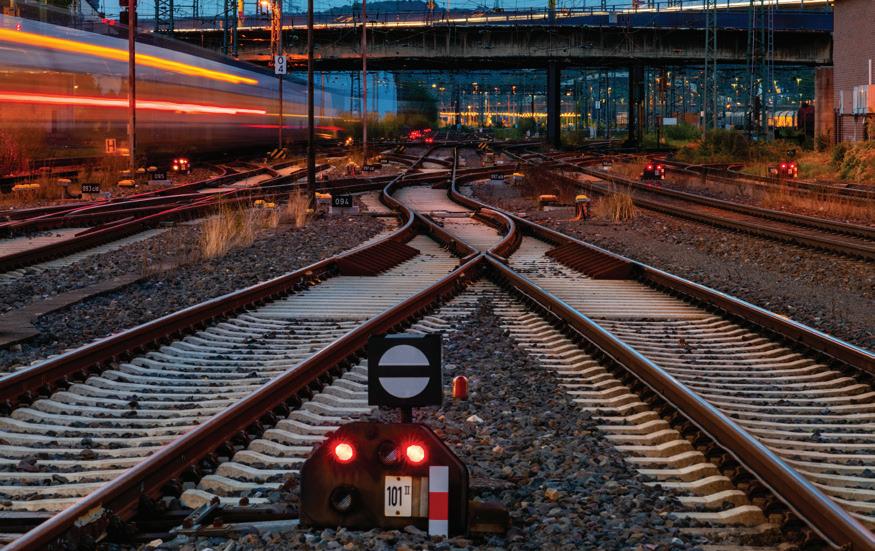
Lines can be seen everywhere, whether on railway tracks, roads, or airport runways. Lines provide direction and control. Let us learn more about lines and the different elements in geometry.
Point
A point is a fixed location that cannot be moved. It can be shown using a dot. It has no length, breadth or thickness.

A line segment is the shortest distance between two points. It has a definite length. The edges of a book can be shown as line segments. We can measure the length of a line segment with the help of a ruler.

A line segment is named by its end points. The line segment shown on the ruler can be named as AB or BA. The length of the line segment is 6 cm.
A line is a collection of points along a straight path that may extend endlessly in both directions. For example, railway tracks.
A line has no beginning and no end point.
A line can be represented by a two-headed arrow showing that it can be extended in both directions.

A line is named by using two points on the line. The above line can be named as QP or PQ Lines are further divided into different types.
Pair of straight lines that never meet and are equidistant from each other.

Two lines that cross each other.
Parallel Lines
AB and CD are parallel. AB
Arrow heads at both ends.
Intersecting Lines
AB and CD are a set of intersecting lines.
Point X is the point of intersection.
A vertical line standing exactly above a horizontal line.
Perpendicular Lines
AB and CD are perpendicular lines.
The symbol of a perpendicular line is ⊥.
A ray is a part of a line which extends indefinitely in one direction. It has only one end point. The beam of light coming out of a torch is an example of ray.
It is represented by a single-headed arrow ( ). We name a ray beginning with its starting point and any other point on it.
AB is a ray with A as the starting point and B as a point on the ray.
Example 1: Name each given figure as a ray or line segment.
A pair of scissors
A ladder
Headlight of a car
The beam of light coming from the headlight of the car represent a ray. The pair of scissors and the ladder represent line segments.
Example 2: Look at the figure.
a Join dots to form a line segment and name it. Join dots M and N to make a line segment MN.
b Draw a dot and show parallel lines.
Draw a dot at Q and join dots L and Q. LQ is parallel to MN.
















































Match the given figures with their names. a b c d Line
Write T for true and F for false.
a A line segment AB can be denoted as AB.
b A ray CD can be denoted as CD.
c A line PQ can be denoted as PQ.
d Two parallel lines are denoted by the symbol ||.
Select the word that best describes the given figures.
Line segment Curve Ray Parallel lines Point A bridge Sides of a railway track Tip of a nail Sunlight
Read and draw. a A point

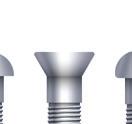











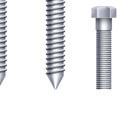
e Two intersecting lines UV and WX with O as the point of intersection
Look at the figure and answer the given questions.
a Name all the points and lines in the figure.
b Write the name of a line segment.
c How many rays are there in the figure? Write their names.
Disha visited the National Museum in Delhi where a collection of Indian weapons are on display. She saw a pair of swords hanging on the wall, like the ones shown in this picture. What kind of lines does the pair show?























Soumya and her friend Rohan are learning to read a wall clock.
Soumya: Look at the clock, Rohan. The hands of the clock are making an L shape.
Rohan: Yes! It’s 3 o’clock.
Soumya: You are right!
Rohan: I also saw a V shape made by the hands of the clock this morning. Both the friends talked about the different shapes that they saw the hands of the clock make.
How can the same hands make different shapes? This happens because of angles.
Two rays with a common starting point form an angle.
Angles can be seen everywhere! Every object around you is made by its parts making different angles.
Shown below are two rays, OA and OB with a common starting point O. An arc is drawn to show an angle.
O is the vertex of the angle. OA and OB are the arms of the angle
An angle is named using the symbol ∠. The angle in the picture can be named as ∠AOB or ∠BOA or ∠O.
Look at the angles that the edges of the window or the sides of a blackboard make.


Angles that look like an L are called right angles. Let us look at some right angles.
Straight Angle
The angle formed on a straight line is called a straight angle.
Acute Angle
Angles that measure less than a right angle are called acute angles. Given below are some acute angles.
Obtuse Angle
Angles that are more than a right angle are called obtuse angles.
Example 3: Look at the pictures. Write A for acute angle, O for obtuse angle, S for straight angle, and R for right angle.






















Label the arms and vertex of the given angle.
Name the angles of the given figures.
at the figure
Write the type of angle made by the hands of these clocks.
Rishi’s school starts at 7:30 a.m. and ends at 1:30 p.m. What types of angles do the hands of the clock make at the school’s start and end time? Do you reach the school on time?
The snowflakes formed by water molecules are in the shape of a hexagon. Look at the figure and identify the types of angles in the figure.
We have learnt about angles and their types. Let us now learn how to measure and draw angles.
Angles are measured in degrees. A degree is denoted by °. A complete turn around a point is divided into 360 parts. Each part is denoted by 1°.
Angles can be measured with the help of a protractor

A protractor is semicircular in shape; therefore, it can measure angles up to 180°.
A protractor has two sets of measurements called scales. The scale inside is the inner scale and the scale outside is the outer scale. Let us learn to use a protractor to measure angles.
This is the baseline.
Each line on the protractor measures 1°.
This is the centre of the protractor.
1 Place the centre point of the protractor on the vertex of the angle.
2 Adjust the protractor (without shifting the centre from the vertex) so that one arm of the angle is along the baseline.
3 Look at the scale where the baseline arm points to 0° (inner scale in this case).
4 Read the measurement of this angle where the other arm crosses the scale.
The measure of ∠ AOB = 50°
Example 4: Measure ∠ LMN using a protractor.
The measure of ∠ LMN = 60°
Always look at the scale where the baseline arm points to 0°.


The length of the arms of an angle does not affect the measure of the angle.
9 • Lines and Angles
We can draw an angle of any measurement using the inner or the outer scale of a protractor by following some steps.
Let us draw an 80° angle using both inner and outer scales.
Using the inner scale of the protractor Using the outer scale of the protractor
Step 1
Draw a ray of any name such that it points to 0° of the inner scale. Here we are drawing a ray with the name OC.
Step 2
Place the centre of the protractor on the vertex O and 0° on the arm OC. Mark a point A at 80°.
Step 1
Draw a ray of any name such that it points to 0° of the outer scale. Here, we are drawing a ray with the name OC.
Step 2
Place the centre of the protractor on the vertex O and 0° on the arm OC. Mark a point A at 80°.
Step 3
Remove the protractor and draw a ray from O to A using a ruler. Thus, ∠AOC = 80°.
Step 3
Remove the protractor and draw a ray from O to A using a ruler. Thus, ∠AOC = 80°.
Example 5: Draw a 105° angle using the inner scale of a protractor.























Name the angles as right, acute, obtuse or straight.
Measure each angle using a protractor.
Use a protractor to measure the angles. a ∠ AOF
Draw the given angles using the inner scale of a protractor.
According to the playground safety rules, an angle of 30 degrees is ideal for a playground slide. Draw a playground slide with the given angle.
Kavya, Richa and Rishi are playing a game. Richa is giving hints and Kavya and Rishi are making shapes.
Richa: It is a closed figure. It has 5 sides. The shape has 5 angles. Kavya and Rishi made the given shapes.
Kavya’s shape Rishi’s shape
All of them wondered how the same hints led to the same shape with different measures.
Kavya and Rishi made the shapes of different measures using the same hints. Do you know why? This is because they placed the sides of the shape at different angles. Let us learn more about shapes having different numbers of sides and angles. A
A triangle has 3 sides and 3 angles.
The symbol ∆ is used to show the triangle: ∆ABC.
A quadrilateral has 4 sides and 4 angles.
A quadrilateral is named using the names of its vertices.
The sides can be named as AB, BC and CA
The name of the given quadrilateral can be ABCD, BCDA, CDAB and so on.
The name can begin with any vertex but it needs to move in either a clockwise or anticlockwise manner.
Let us see some quadrilaterals. All the quadrilaterals have 4 sides, 4 angles and 4 vertices.
Polygons: A polygon is a closed figure that has 3 or more straight sides.
Polygons can be categorised on the basis of the number of sides and angles.
Are triangles and quadrilaterals, polygons too?
Given below are some polygons along with their names, number of sides and number of angles.

Example 6: Which of the following is not a polygon?
We know that polygons are closed figures with three or more straight sides, hence figure 3 is not a polygon.





















Write the names of each of the polygons.

Match the shapes with the number of angles they have.
Write T for True and F for False. a A quadrilateral has 4 sides. b An octagon has eight angles. c A pentagon has five sides. d A rhombus has five sides.
The Tower of Winds in Athens was constructed in 50 BCE. The shape of the building has 8 sides and 8 angles. Name and draw the shape.
Answer the riddle: I am a closed shape. I have twice the number of sides and angles than a triangle has. Who am I?
Draw and name the sides in a triangles with vertices labelled as P, Q and R.
Setting: In pairs

Materials Required: Chart paper, coloured paper, scissors, pencil, eraser.
Method:

Draw a humanoid using different shapes as shown in the figure.

Take the coloured paper, cut the shapes required for the body, hands, legs, face and the hat using 5 different 2-D shapes.
Stick the cut shapes on the figure drawn.
Measure the angle formed between the hands and the body.
Measure the angle formed by the shirt and skirt.
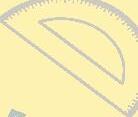

Discuss the type of angles that you observe in the figure.

Which word among line, line segment and ray best describes the figure?
Look at the figure and write if true or false.
a AC is a line segment.
b PQ and RS are sets of parallel lines.
c CS is a line.
Write the names of the angles made by the given figures.




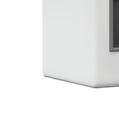
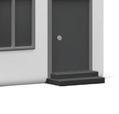






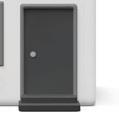




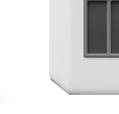






Look at the given figure and name the angles as right, straight, acute or obtuse.
a ∠ AOC
b ∠ AOD
c ∠ AOF
d ∠ BOF
e ∠ BOC
Write the measure.
Measure the given angles using a protractor. a b
Draw the given angles using the outer scale of a protractor.
Write the names of the polygons. Also, write the number of sides and angles they have.
Tick () the polygons that have one or more right angles.
Draw a line segment MN equal to 10 cm. At N, draw ∠MNO = 125° using the inner scale.
Rohan is going to the park with his family. On the way, they stop at a zebra crossing. What kind of lines does the zebra crossing show? Do you follow traffic rules?
The Museum of Deva has displayed an over-2000-year-old bronze matrix of Sarmizeugetusa, which was found in 2013. Name and draw the shape of the matrix shown.
Create a figure using 3 different polygons.





1 Read the statements and choose the correct option.
Statement I: If two lines are perpendicular, then they intersect at a right angle.
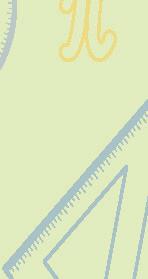
Statement II: Perpendicular lines are lines that intersect at a 90° angle, forming four right angles at their intersection point.
a Both statements are true.
b Both statements are false.
c Statement I is true but Statement II is false.

d Statement I is false and Statement II is true.

2 Look at the figure. Rearrange the sticks to form 5 squares. You can move only 2 sticks.


Art Integration
A tangram is a puzzle made of 7 polygons. It is widely used among children to create different shapes and designs. Look at the design given below and answer the questions.
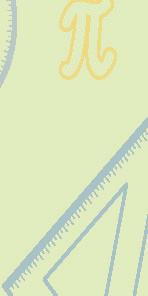
1 How many triangles are there in the figure? a 3 b 2 c 5 d 6



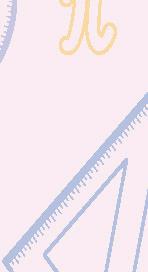
2 What shape is formed when 2 right angle triangles and a parallelogram are placed together? a Square b Rectangle c Pentagon d Hexagon
3 Can a circle be formed using the shapes in a tangram? a Yes b Can’t say c No d None of these
4 Draw a fish using a square and 4 triangles.

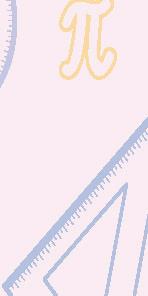































































































The teacher took Rani and her classmates to visit an art museum.
Teacher: Do you notice the patterns on the paintings on the walls?
Rani: What is a pattern?
Teacher: A pattern is a sequence of repeating objects, shapes or numbers.
Rani notices that the frames of the paintings are placed in the form of a pattern. They are of so many shapes and sizes.
We see patterns in historical monuments, buildings and art forms of different states around us.
Let us learn how we can extend or continue a pattern.
When the same sequence keeps repeating one after the other, we call it a repeating pattern.
Let us learn how to identify the rule in a given pattern and then use it to extend the pattern.
Colour Pattern
Unit of Repeat A B B B B
A A A
Rule = AABBAABB
The next 2 terms will be 2 red stars.
Shape Pattern A A B Unit of Repeat B B B C C
Rule = ABBCABBC
The next 2 terms will be a triangle and a circle.
Example 1: Colour to extend the repeating pattern. Unit of Repeat
Example 2: Create a pattern using the given figures with the rule—ABCCBABCCBABCCB.
The pattern can be:
Sometimes the shapes that are repeating are turned around at every step.
Observe the dot on each triangle.
90° When the triangle makes a quarter turn or 1 4 turn, it rotates by 90° which is a right angle.

270°
180° When the triangle makes a half turn or 1 2 turn, it rotates by 180°, equal to two right angles.
When the triangle makes three quarters or 3 4 turns, it rotates by 270° which is equal to three right angles.
360° When the triangle makes a complete turn, it rotates by 360°, equal to four right angles.
A unit in a rotating pattern can turn either clockwise or anti-clockwise.
Clockwise Direction Anti-clockwise Direction
Example 3: What will be next?
Example 4: Create a pattern by turning the given figure by 60° at every step in clockwise direction.





















Which of these do not show a pattern?

Observe and extend the pattern.
Identify the rule for the given rotating pattern. Draw the next three units and colour them.
Identify and write the rule for the rotating patterns. Is there any pattern which is not following any rule? If yes, give your answer with a reason.
Rakesh has made a rotating pattern where each shape rotates at half turns. Which of the given patterns has been made by Rakesh?
Use the given shapes to draw rotating patterns. The pattern should rotate clockwise at right angles.
Rani notices that the art gallery is filled with a lot of different patterns. She comes across some more paintings and wonders what kind of patterns they make. Let us have a look at some paintings Rani has come across.
Here, we have triangles forming a pattern.
We see that both the purple and the black triangles keep increasing by one unit.
The increasing unit is:
This is a growing pattern.
On the other hand, in this painting, the triangles are forming a tree-like pattern.
A triangle is reduced at every next step until there is only one triangle left. The decreasing unit is:
This is a reducing pattern.

Example 5: Extend the pattern by choosing the correct toy train that will come next.
We can see that at every next step of the repeating sequence, one block is added. So, this is a growing pattern.
Our repeating unit is: . So, the correct option is 3.
Tiling Patterns
Now, Rani is well aware of what patterns are.
As she walks through the halls of the art gallery, she notices a pattern on the floor.
Rani: Wow! Do these tiles on the floor make a pattern too?
Teacher: Yes, Rani. This type of pattern is called tiling. It forms when a single unit or shape repeats over and over again without leaving any gaps.
When this pattern is repeated, it fills the area seamlessly with no gaps and no overlaps.
This is also called tessellation.
The structure of a beehive is also an example of a tiling pattern.
Rectangular Tessellation Triangular Tessellation Square Tessellation
The arrangement of bricks in a wall.
Triangles arranged in a tiling pattern. Pink and white squares arranged in tiling.
Look at the given images. Are these tiling patterns?
Does a tangram also have a tiling pattern?
No. Even though the units are of the same size, these are not tiling patterns because there are gaps between the units.






















Which of these is not a tiling pattern? Give your answer with a reason.

Colour to complete the tile.



Draw the picture that comes next in each growing or reducing pattern.




Which tile does not belong in the tiling pattern? Create a tiling pattern that contains all four tiles.
Ankit bought these tiles for his bathroom.
Which of these shows a tiling pattern made by the tiles bought by Ankit?

After returning from the art gallery, the teacher tells the students that patterns exist not only on the walls, frames and the floor as they saw, but they exist everywhere, even in letters and numbers.
Now look at some patterns.
Pattern 1: The numbers are the same, although the order of the numbers is reversed.
25 + 80 +10 10 + 80 + 25
Pattern 2: One more number is getting added each time.
Some numbers are exactly the same even when we read them backwards. These are called palindrome numbers. One example is 363.
Let us see how to get special numbers or palindromes.
Take a number, say 28
Now interchange the digits 82
Add the two numbers together, 28 + 82 = 110 Is this a special number? No! Let’s carry on.
Write the digits of 110 back to front 011
Add the numbers 110 and 011 121 121 is a special number or a palindrome.
Example 6: Describe the rule for the given pattern. Extend the pattern for the next two terms. 4 10 16 22
Rule—The given number pattern is increasing by 6 each time.
Example 7: Generate number patterns with 5 terms following the given rule.
a Start with 5 and add 11.
5, 16, 27, 38, 49 +11 +11 +11 +11
Pattern: 5, 16, 27, 38, 49
b Start with 10, multiply with 2 and add 1. 10, 21, 43, 87, 175 ×2 +1 ×2 +1 ×2 +1 ×2 +1
Pattern: 10, 21, 43, 87, 175
Example 8: A swimming pool has small chlorine tablets added every day to keep it clean. On Monday, 1 tablet was added. On Tuesday, 3 tablets were added. On Wednesday, 7 tablets were added. On Thursday, 15 tablets were added. How many tablets are added on Friday?
Number of tablets added on Friday = 15 + 16 = 31.
Therefore, 31 tablets were added on Friday.
Different methods are used for the coding and decoding of passwords. Look at the letters and their corresponding numbers, in the table below.
We use a particular code pattern to express a word in English. We can write a word, say CAB, in the code language. We can also decode the code for the word—Imagine?
Example 9: Look at the letters and their corresponding numbers table given above. Decode the given code. 9 12 9 11 5 13 1 20 8 19
From the table,
9 I, 12 L, 11 K, 5 E, 13 M, 1 A, 20 T, 8 H, 19 S Thus, the code is I LIKE MATHS.
Look at the sequence: 1, 1, 2, 4, 7, 11, 16, 22 and 29.
If we observe the numbers, the rule being followed is +0, +1, +2, +3, ... and so on, hence making a pattern.
We can represent some numbers in the form of an equilateral triangle arranged in a sequence. These numbers are called triangular numbers.
Numbers like 1, 3, 6, 10 and 15 are some examples.
In a Fibonacci series, a number is the sum of the two preceding terms. 0, 1, 1, 2, 3, 5, 8, 13, 21…

When we multiply a number by itself, we call it a square number. Some square numbers are 1, 4, 9 and 16. We can also represent these numbers in the shape of a square.
The numbers from 1 to 6 are written such that the sum of each side is 9.
The sum of the numbers in each row, column and diagonal is always the same.
It begins with 1 at the top and 1s on the sides. For each point inside, the two numbers above it are added to get a new number.
When we add a certain number of odd numbers, their sum is equal to the product of that certain number with itself.
Let us see some more patterns. Start with any number. Multiply it by increasing numbers (1, 2, 3,...) and add 2 each time.
Can we see a pattern?
Yes. The numbers 12, 22, 32, 42, are in a pattern. The terms increase by 10 at every step.
Example 10: Observe the pattern and write the next two lines of the number patterns.
25 + 11 = 36
36 + 13 = 49
49 + 15 = 64
So, the next two terms will be:
8 × 8 + 17 = 81
9 × 9 + 19 = 100






Example 11: Without actual addition, find the sum of 1 + 3 + 5 + 7 + 9 + 11 + 13 + 15.
1 + 3 + 5 + 7 + 9 + 11 + 13 + 15 is the sum of the first 8 odd numbers.
The sum of a certain number of odd numbers is equal to the product of that number with itself.
So, 8 × 8 = 64.
Therefore, 1 + 3 + 5 + 7 + 9 + 11 + 13 + 15 = 64
















Look at the numbers and write the rule describing each pattern. a 15, 19, 23, 27, 31, 35 b 6, 8, 10, 12, 14, 16, 18 c 1, 4, 9, 16, 25, 36, 49
Use the given code to find the numbers.
a HUEHU b IOQCB c CEHBU
Shreya helps her mother water her plants every weekend. One weekend, there were 1 red and 1 yellow flowers. The next weekend, there were 2 red and 2 yellow flowers. The next weekend, there were 3 red and 3 yellow flowers. How many flowers will be there after the fifth weekend? Do you water the plants in your house?
A bakery is receiving a lot of orders. They got 12 orders in January, 24 in February and 36 in March. If the same pattern continues, how many orders will they get in July? Create a magic triangle with a sum of each side that is equal to 12.
Kush was at a pottery shop. He noticed that there were a lot of different pots. He looked at a pot and realised that no matter from which angle he looked at the pot, it looked exactly the same. How is that possible? Let us find out!

We can divide or fold a shape, letter or a number into two identical halves along a straight line. This is called symmetry.


The straight line that divides a shape or figure into two halves that are identical and match perfectly when they overlap is called the line of symmetry.
These two halves are said to be symmetrical.
Let us look at some types of symmetry.
Vertical Symmetry
Horizontal Symmetry

Diagonal Symmetry
Drawing Lines of Symmetry
Let us see symmetry and lines of symmetry in some shapes.
Rectangle - 2
Equilateral Triangle - 3 Square - 4
Notice how these shapes, when divided, give 2 identically equal parts. Now, if you observe properly, many letters have symmetry too.
1 line of symmetry B A M C D
2 lines of symmetry H O X I
Circle - Infinite

Every figure does not always need to be symmetrical when divided into 2 parts. Error Alert!
Here O has infinite lines of symmetry and letters like F, G, J and L have no line of symmetry. Now, observe these pictures.
Do the dotted lines drawn represent lines of symmetry for this tree?
The two halves obtained in both the pictures, when compared, look very different. Therefore, there is no symmetry.
This is called asymmetry.
Can you list some symmetrical and asymmetrical objects around you?
Figures with no line of symmetry are called asymmetrical figures.
Example 12: Draw all possible lines of symmetry.
In a square, we have 4 lines of symmetry.
Reflections
Reflection means flipping a figure over a line so that it looks like a mirror image. Imagine folding a piece of paper and seeing the same shape on both sides.
Look at some figures and their reflection.

Example 13: Draw the reflection of the letter J.

Imagine you cut a solid in half, both sides will look the same. A line of symmetry can also be drawn in 3-D figures and the figures can be completed along the line of symmetry.
Line of symmetry
Example 14: Imagine cutting a cone (like an ice cream cone) in half. Would the two halves be symmetrical?

Yes, cutting a cone in half vertically, from the pointy tip straight down through the centre to the base, would be symmetrical.





















Match the figures with their lines of symmetry.
1 horizontal line of symmetry
Many lines of symmetry
2 lines of symmetry
Draw the lines of symmetry for the given figures.




























Draw the lines of symmetry (if any) for the given letters.


Write True or False.
a When two halves look identical, they are called asymmetrical.
b The letters F, G, J and L have two lines of symmetry.
c The number 8 has 2 lines of symmetry.
d The number 3 has a horizontal line of symmetry.
Complete the missing half of each of the shapes across the mirror line.
Draw the reflection of these figures.

Experiential Learning & Art Integration
Materials Required: A piece of thread, paint and a sheet of paper.
Method:
1 Dip the thread in the paint.

2 Take the thread out of the paint and put it on the sheet of paper.

3 Fold the sheet of paper in half with the thread in between.
4 Press and hold the sheet with one hand.
5 Remove the thread slowly with the other hand.



6 Have you got a mirror image? Why/why not?













Draw all the possible lines of symmetry for the given figures.
a b c d









Draw the reflection of the figures across the mirror line.
a b c d
In a certain language, the letters are coded as follows.
Find the code for the word LEMON.
What will come next in the given patterns? Draw two figures for each. a
Complete the tiling patterns by drawing 4 more shapes.
Examine the number pattern below.
331, 316, 301, 286, 271,
Write the next three numbers in the pattern. Also, write the rule followed.
Generate number patterns with 5 terms following the given rules.
a Start with 1 and add the double of itself.
b Start with 15 and add 3 and 5 alternately.
























Fill in the missing numbers.
a 37 39 42 46 51
b 90 89 87 84 80
Draw the reflection of this toy house. If you cut this house vertically in half, would both halves look the same?
Which of these solids has a line of symmetry? Write “Yes” below the correct one.
a b
Honeybees use beeswax, a substance secreted from glands in their abdomen, to create honeycomb. A bee is building a honeycomb. It starts with 2 cells, then 4, 8, 16, 32, 64 and so on. What will be the next three numbers in this pattern? Also, write the pattern rule.
Mihir gets pocket money every month. He saved ₹20 in January, ₹40 in February, ₹80 in March, ₹160 in April and so on. How much money did he save in August?
Emily is hiking in the mountains. On the first day, she takes 100 steps. On the second day, she takes 120 steps, then 150 on the third day, 190 on the fourth day and so on. How many steps will she take on the sixth day?





2 In the question given, read the two statements marked as Assertion (A) and Reason (R). Choose the correct option.
Assertion: Tara is following a fitness regime. On the first day, she takes 20 steps. On the second day, she takes 25 steps, then 32 on the third day, 41 on the fourth day and so on. She will take 65 steps on the sixth day.
Reason: Tara is increasing the number of steps by 5 each day.

a Both A and R are true, and R is the correct explanation of A.
b Both A and R are true, but R is not the correct explanation of A.
c A is true, but R is false.
d A is false, but R is true.



Cross Curricular & Value Development
Imagine you are visiting the magnificent Taj Mahal. This 17th-century white marble mausoleum located on the banks of the Yamuna River in Agra, India, is a UNESCO World Heritage site famous for its beauty and intricate details. Explore how symmetry plays a role in its design by answering these questions.




1 Which of the following shapes is most prominent in the Taj Mahal's design? a Triangle b Rectangle c Pentagon
2 The Taj Mahal has four identical minarets surrounding the main dome, reflecting perfect rotational symmetry. True or False?
3 If you draw an imaginary line down the centre of the Taj Mahal, both sides will mirror each other. This is called .

4 The Taj Mahal complex has 3 lines of symmetry. (Yes/No)
5 What can you do to help maintain cleanliness during your visit to Taj Mahal?































































































Sana wants to get a pair of trousers made for herself. So, she goes to the market to buy cloth for it.
Sana: 1 m 85 cm of cloth, please.
Shopkeeper: Could you please tell me the length, in metres?
Sana is confused about the metres of cloth she should buy.
Sana thinks of buying the minimum length of cloth that meets her requirement. So, she chooses to buy 2 m of cloth.
This is exactly what estimating length is! Estimation helps us to find the approximate measure of things. It gives us a fair idea of how long or tall (length) an object is just by looking at it. It also gives us an approximate measure of how far away (distance) a place is. For example, look at the given objects.


The width of a grain of rice is about 6 mm.

The thickness of a notepad is about 1 cm.
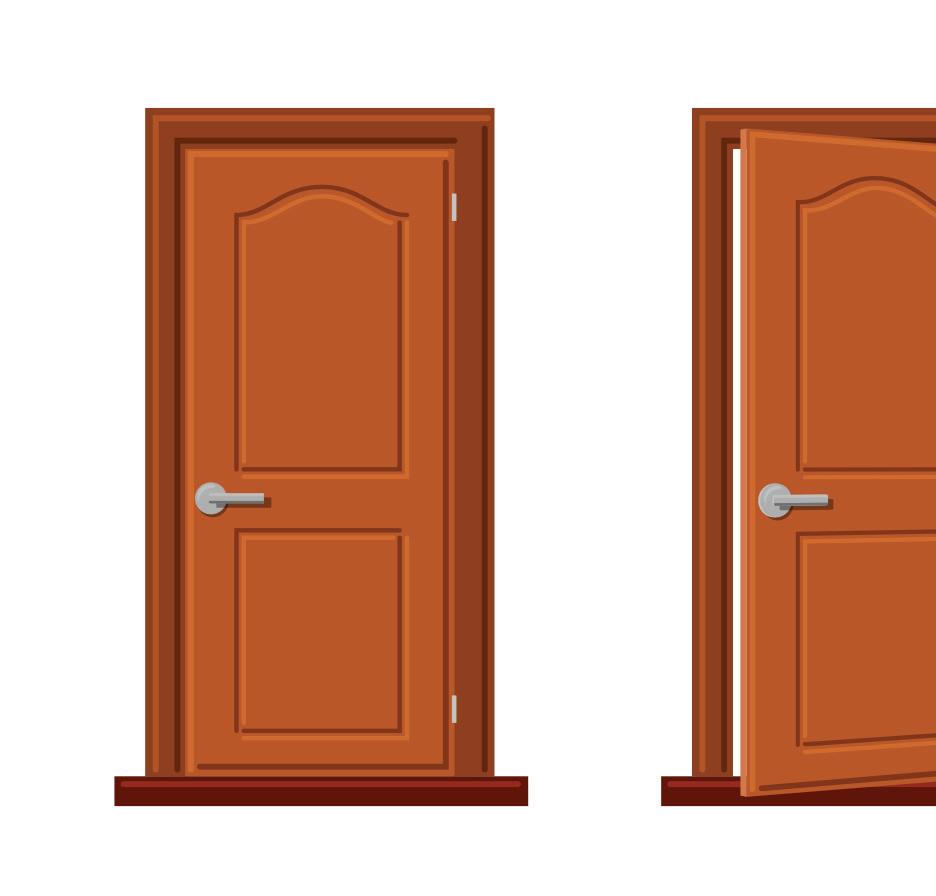
The distance from the floor to the door handle is about 1 m.
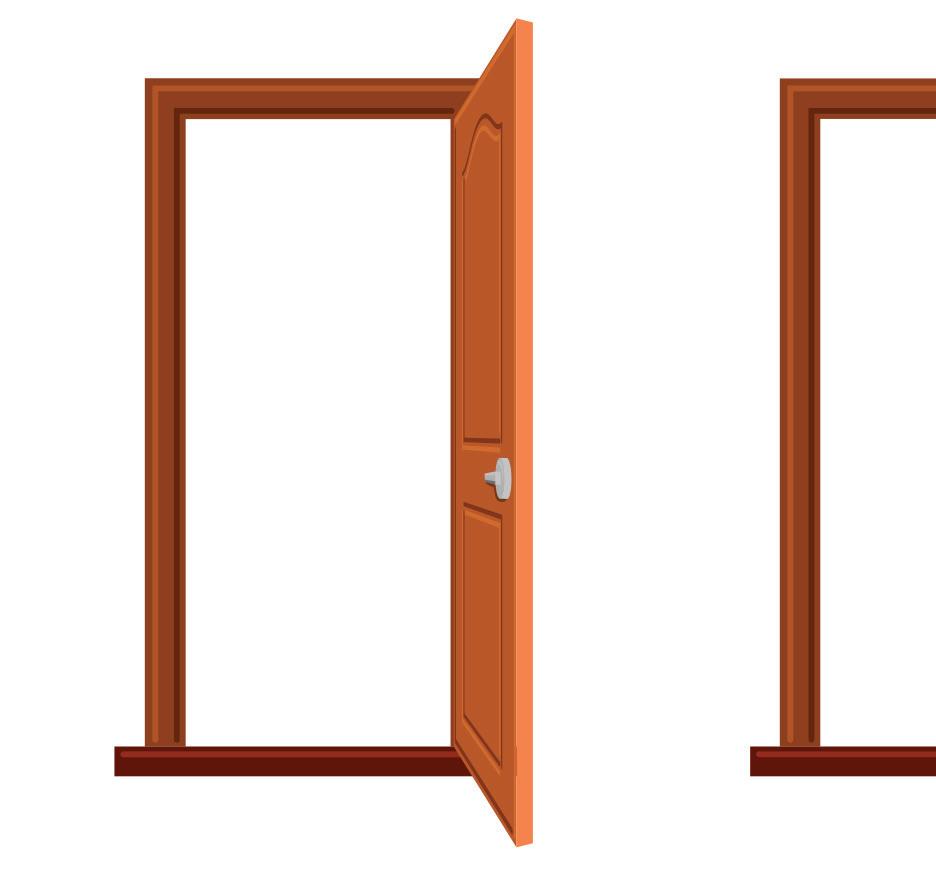

The height of Mount Everest is about 8848 m.


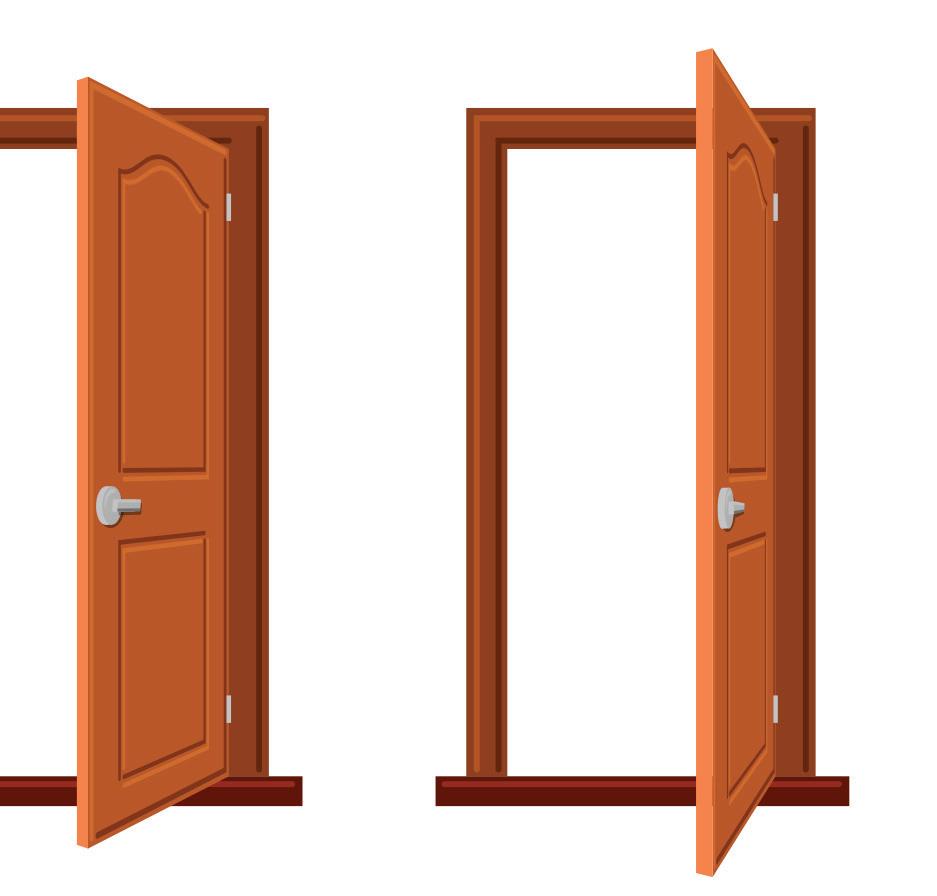

The distance between Sana's home and the school is about 10 km.
Example 1: The rope in the figure is 8 cm long.
What is the estimated length of the battery?
Estimated length of the battery = Half the length of the rope.
So, the length of the battery is about 4 cm.
Now, Sana takes the cloth to the tailor for stitching. She wants front pockets of width 4 cm on her trousers. Let us see how we can measure the width of the pockets.
We use a centimetre (cm) ruler to measure the lengths of small objects. On this ruler, there are both small lines and long lines. The shortest distance between two small lines is 1 millimetre (mm). The numbers below the longer lines are the measurements in cm.
1 millimetre 1 centimetre
10 millimetres
When measuring the length of an object, we always place the object along the ‘0’ mark of the ruler. Then, read the marking on the ruler where the object ends.
For example, look at the pocket.
Here, the pocket ends at the 4th longer line of the ruler.
So, the width of the pocket = 4 cm.
What if the tailor made the pocket without measuring it?
Here, the pocket is beyond the 4th longer line but shorter than the 5th longer line. In this case, we will count the number of shorter lines after 4 cm. There are 5 shorter lines after 4 cm. Hence, the pocket is 4 cm 5 mm long = 4.5 cm long.
Example 2: A pencil is placed along the ruler. What is the length of the pencil in cm?
The pencil is longer than 7 cm but shorter than 8 cm.
There are 5 mm lines after 7 cm.
Hence, the pencil is 7 cm 5 mm = 7.5 cm long.
Do you remember that Sana bought 2 m of cloth from the market to make a pair of trousers? How would you measure this length in metres? Let us see how we can do this.
Look at the picture of the metre ruler given below. On this ruler, there are short lines and long lines. The distance between two short lines is 1 centimetre (cm). So, from the ruler given below, we see that 1 m = 100 cm.
We know that the standard unit of length is metre (m). We have also learnt about the units given below.
kilometre (km) more than a metre
metre (m) standard unit of length
centimetre (cm)
millimetre (mm) less than a metre
Apart from these units, we also have a few more units for measuring length. Let us see how they are connected to each other in a place value chart.
P.N.Seth, founder and secretary of the Indian Decimal society, aimed for the introduction of the metric system in India, which was accepted by the parliament in 1955.
Divide by 10 for every step as you move left

Multiply by 10 for every step as you move right
Let us convert the length of cloth (2 m) bought by Sana to cm.
1 m = 100 cm. So, 2 m = 2 × 100 m = 200 cm
Divide by 10 for every step as you move left
Let us now convert 40 cm to m.
100 cm = 1 m. So, 1 cm = 1 100 m
40 cm = 1 100 × 40 m = 0.4 m
What if Sana had bought 1 m 85 cm of cloth?
Let us see how you would write it in metres.
1 m = 100 cm
1 m 85 cm = 1 m + 85 100 cm = 1.85 m.
Example 3: Convert 2356 dm to m.
10 dm = 1 m
1 dm = 1 10 m
2356 dm = 1 10 × 2356 m = 2356 10 = 235.6 m
There are other units of length, like inch and foot, which are used to measure the length of things like wire and cloth; and miles and yards are used to measure longer lengths like distances.

Example 4: Convert 6.547 hm to m. 1 hm = 100 m
6.547 hm = 6.547 × 100 m = 654.7 m
After making a pair of trousers with 2 m of cloth, Sana thought of buying 1 m 55 cm of cloth for making a shirt. Let us see what length of cloth she has together.
Cloth bought by Sana for making a pair of trousers = 2 m
Cloth required by Sana for making a shirt = 1 m 55 cm = 1.55 m
Total cloth required by Sana = 2 m + 1.55 m
So, the total cloth required by Sana is 3.55 m.
Example 5: Samantha buys two rolls of tape. One is 9.56 m long and the other is 6.80 m long.
1 What is the total length of the two rolls?
How do you think 1 m 55 cm is converted into 1.55 m?
2 What is the difference between the lengths of the two rolls?
Length of the first roll of tape = 9.56 m; Length of the second roll of tape = 6.80 m
1
So, Samantha buys 16.36 m in total.
So, the difference between the two rolls of tape is 2.76 m.
Example 6: A 34 m long rope is divided into 10 equal pieces. What is the length of each small piece?
Length of a rope = 34 m
Number of equal pieces of rope needed = 10
Length of each piece of rope = 34 m ÷ 10
Therefore, the length of each piece is 3.4 m.





















Do It Yourself 11A

1 Esimate the length of these items. Measure the actual lengths. Find the difference.
Pencil b Eraser
2 Write the lengths of the given objects.
Sharpener
Book
3 Convert the given measurements.
4 Complete the table.

5 Find the measurement of the pencil. Express your answer in km.
6 Rajni went to buy skirts. If 3 m 586 cm of cloth is required for one skirt, then how much cloth is needed for 6 such skirts?
7 Shagun travelled 2 km 578 m by bicycle, 21 km 870 m by bus and 1 km 346 m on foot. What is the total distance that Shagun travelled? How does riding a bicycle help the environment?
8 If the length of a door is 2 m 1 dm and that of a wall is 3 m 2 dm, what is the total length in dm?
9 Create a word problem on subtracting the length of two things.
Vaishali went to the market to buy sugar to make dessert for a family get-together.
Vaishali: I want 1500 g of sugar, please.
Shopkeeper: I have only packets of 1 kg of sugar.
Vaishali was confused about how many packets of sugar she should buy.
Vaishali thought of buying the minimum weight of sugar that would fit her requirement. So, she chose to buy two 1-kg packets of sugar.
This is exactly what estimating weight is! We guess the weight of different objects either by looking at them or by holding them. For example, look at the given objects.
About a milligram grain of sugar
About a gram
Example 7: Which of these objects measures about a gram?
About a kilogram
The weight of the leaf is about a gram.
Look at the picture of the weighing scale. Starting from 100 g, read the weights on the scale, clockwise. What do you notice?
Here, 1 kg = 1000 g
We know that the standard unit of weight is kilogram (kg) and gram (g). We have also learnt about the units given below. kilograms (kg) more than a gram grams (g) standard unit of weight milligrams (mg) less than a gram
Apart from these units, we also have a few more units of measuring mass (weight). Let us see how they are connected to each other in a place value chart.

The units of measuring weight, such as milligrams (mg), grams (g) and kilograms (kg) are used to measure light as well as heavy objects.
Divide by 10 for every step as you move left
Bigger Units
Value increases 10 times
Multiply by 10 for every step as you move right
Base Unit
Smaller Units
Value decreases 10 times
Convert the quantity of sugar (2 kg) that Vaishali bought into g.
1 kg = 1000 g. So, 2 kg = 2 × 1000 = 2000 g
Divide by 10 for every step as you move left
Convert 400 mg to g.
1000 mg = 1 g. So, 1 mg = 1 1000 g
400 mg = 1 1000 × 400 g = 400 1000 = 0.4 g
Error Alert!

2 g 3 mg = 23 mg 2 g 3 mg = 2003 mg
What if she bought 1500 g of sugar? Let us see how we would write it in kilograms.
Quantity of sugar purchased by Vaishali = 1500 g
Since 1000 g = 1 kg, 1500 g = 1500 1000 = 1.500 kg

Example 8: Convert 7695 dg to g.
10 dg = 1 g
1 dg = 1 10 g
7695 dg = 1 10 × 7695 g = 7695 10 = 769.5 g
Example 9: Convert 3.476 hg to g. 1 hg = 100 g 3.476 hg = 3.476 × 100 g = 347.6 g
Do you remember that the sugar bought by Vaishali weighs 2 kg? Later, she also bought rice that weighed 2 kg 106 g. Let us see which food item weighed less and by how much.
Weight of sugar = 2 kg = 2.000 kg
Weight of rice = 2 kg 106 g = 2.106 kg
Here, 2 < 2.106.
So, the sugar weighs less than the rice bought.
To find out by how much the sugar weighs less, we will subtract the two weights.
Therefore, the sugar weighs less than the rice by 0.106 kg or 106 g.
Example 10: Samaira bought 1 kg 250 g of ladiesʼ fingers, 3 kg 750 g of potatoes and some onions. If she bought 8 kg 250 g of vegetables in total, then find the weight of the onions that she bought.
Weight of ladiesʼ fingers = 1 kg 250 g = 1.250 kg;
Weight of potatoes = 3 kg 750 g = 3.750 kg
Total weight of vegetables = 8 kg 250 g = 8.250 kg
Total weight of potatoes and ladiesʼ fingers = 1.250 kg + 3.750 kg = 5 kg.
Now, weight of onions = 8.250 kg – 5 kg
Therefore, Samaira bought 3.250 kg or 3 kg 250 g of onions.
Example 11: A shopkeeper purchased 6 bags of salt, each weighing 2 kg 789 g. What is the total weight of the salt that he bought?
Weight of 1 bag of salt = 2 kg 789 g = 2.789 kg
Weight of 6 bags of salt = 2.789 kg × 6
Therefore, the total weight of salt bought by the shopkeeper is 16.734 kg.
Example 12: An egg has a weight of about 65 g. What is the weight of 3 dozen eggs?
The weight of an egg = 65 g
1 dozen = 12 eggs
3 dozen = 12 × 3 = 36 eggs
The weight of 3 dozen eggs = 36 × 65 = 2340 g = 2.34 kg






















Circle the best estimate of the weight of the objects.
a Frog
Convert the measurements.
a 79 g into kg b 975 g into mg c 4677 kg into g
d 1655 dg into g e 6876 cg into g f 390 g 45 dag into mg
Convert the weights into bigger units and smaller units.
a 6 kg 10 g b 16 g 80 mg c 547 kg 6 g
d 3 g 8 cg e 87 kg 6 dag f 12 hg 42 g
By the time a kitten is about 4 months old, it weighs about 1688 g. What is its weight in kg?
An egg has a mass of 40 g. How many eggs can be bought in 1 kg?
A truck can carry 8 cartons of packed food. If they weigh 32 kg 448 g in total, then what is the weight of each carton?
Siya bought 2 kg 450 g of apples, 1 kg 547 g of guavas and 2 kg 136 g of pears. What is the total weight of fruits Siya bought?
The weight of 2 chairs is 16 kg 400 g. If the weight of one chair is 10 kg 300 g, then what is the weight of the other chair?
A man carried 4 conical flasks weighing 260 g each and 3 beakers weighing 150 g each.
a What is the total weight he carried?
b If 1 conical flask and 1 beaker had broken, what is the weight of the remaining conical flasks and beakers?
Three dg of baking soda is used in 1 kg of cake. If a baker prepares 17 cakes each weighing 1 kg in a day, then what quantity of baking soda is used in total?
Create a word problem on adding the weights of two things.

Setting: In groups of 5

Material required: Building blocks, clay, cardboard, craft sticks, a pair of scissors, measuring tape or a ruler, objects of different lengths and weight, pencils, erasers and an A4-size sheet of paper

Method: All 5 members of each group must follow these steps. Creativity & Collaboration

Create a rough draft of your playland on a sheet of paper.
Create different dummy objects of your choice like ramps, towers, slides, children, etc. using clay and building blocks, and measure the lengths of these objects. Estimate the weights of these objects by holding them.

According to the lengths and weights of the dummy objects, assemble and build a playland of your choice on the cardboard. Make sure to decorate it beautifully so that it looks similar to the rough draft you initially made.

Each group presents their playland to the class, explaining their design choices and showcasing how they integrated the measured objects. After presentations, allow time for students to explore and play in each other’s playlands.

James has some cotton candy which is 3 cm longer than the cotton candy shown below. How long is James’ cotton candy?
How much longer is the red straw than the blue straw?
Convert the lengths.
a 8 m into km
b 4 hm 35 m into hm
c 1232 m into mm d 897 m into dam
Convert the weights.
a 5 kg into g b 4 g 64 cg into g
c 5487 g into mg d 43 kg 7 dag into kg
A baby koala is called a joey. A young joey weighs about 0.38 kg. How much is that in g?
A candle weighs 125 g. How much is it in mg?
A lift in a building is allowed to carry up to 260 kg in weight. The people listed below want to enter the lift. Their weights are mentioned.
Amit: 85 kg Priya: 70 kg
Can they enter the lift together? Why?
Priyanshi: 58 kg Raju: 80 kg
If you have two blank strips of paper, one 4 cm long and the other 8 cm long, then how many strips of each would you need to measure the lines of the following lengths. Each strip can be used any number of times.
a 12 cm b 20 cm c 24 cm
Rimi has 12 stamps that are each 3 cm long.
a What is the total length of all the stamps?
b Will all 12 stamps fit into a single row across a stamp album that is 24 cm across?
To bake one cake, a baker needs the following items: 200 g of flour, 3 eggs, 75 g of butter, 100 g of sugar, and some milk. How many kilograms of flour, butter and sugar would be needed to bake 100 such cakes?
Create a word problem to add weights of two objects.

1 What is Meenakshi’s weight in grams? Read the clues and answer.
a Meenakshi’s weight is half of her grandmother’s weight.

b If you add the smallest 2-digit number to 28 less than the smallest 3-digit number, you will get the grandmother’s weight in kilograms.
2 What is Riya’s father’s weight? Choose the correct option that answers the question.
Statement 1: The father’s weight is three times the difference between Nita’s weight and Riya’s weight.
Statement 2: Nita’s weight is 36 kg and Riya’ weight is one-third of Nita’s weight.

a Statement 1 alone is sufficient to answer.
b Statement 2 alone is sufficient to answer.
c Statements 1 and 2 together are sufficient to answer.

d Statements 1 and 2 together are not sufficient to answer.

Cross Curricular & Value Development
Bannerghatta National Park is a famous national park in India. A small portion of the national park has become the Bannerghatta Biological Park. The fauna in the park include lions, tigers, bears, elephants and many more.




1 Write the unit used to measure the lengths of the given animals.
a The unit used to measure the length of a tiger.
b The unit used to measure the length of a butterfly.


2 The weight of a male leopard is 72 kg and the weight of the hyena is 55,000 g. Which of these is true?
a The difference in weight is 1700 g.

b The difference in weight is 1.7 kg.
c The difference in weight is 170 g.
d The difference in weight is 17,000 g.

3 The park has two enclosures that were merged. The length of enclosure 1 was 8894 m and the length of the second enclosure was twice the length of enclosure 1. The new enclosure is divided into 2 pieces where one piece has a length of 20,000 m and the other has the play area. What is the length of the play area?
4 The tigers and lions have to be shifted to sanitise the place. The van can accommodate animals up to 300 kg. The weight of a tiger is 72 kg and that of a lion is 176 kg. How many animals can be shifted in one trip?

5 How can you help to save flora and fauna near you?































































































Students of class 5B are decorating their classroom for Independence Day! They want to stick a ribbon around the class blackboard and the bulletin board. How much ribbon do they need?
The design that the students have thought of has the ribbon on all sides of the board, and the bulletin board. That is exactly what perimeter is!
So, if the students can find the perimeter of the blackboard and the bulletin board, they will be able to find the length of ribbon needed. Also, note that the board is a rectangle in shape. Its opposite sides are equal!

Perimeter is the total distance around the boundary of a closed shape.
The bulletin board, on the other hand, is a square. All its sides are equal. If the students find the perimeter of the blackboard (rectangle) and the bulletin board (square) they will know the length of the ribbon they need.
Let us take a rectangle with length = l cm, and breadth = b cm, as shown.
The perimeter is the sum of all sides = l + b + l + b
So, the perimeter of a rectangle = 2l + 2b = 2(l + b)
The teacher and students together measured the length and breadth of the blackboard. They found the length of the blackboard as 100 cm and breadth as 80 cm.
So, the perimeter of the blackboard = 2 × 100 + 2 × 80 = 200 + 160 = 360 cm
Hence, the students will need 360 cm of ribbon to decorate the blackboard.
Example 1: Find the perimeter of the window.
Here, length (l) = 38 cm and breadth (b) = 28 cm
Perimeter of a rectangle = 2(l + b) = 2 × (38 + 28) = 2 × 66 = 132 cm
So, the perimeter of the window is 132 cm.
Example 2: Find the length of a rectangle whose breadth is 2 cm and perimeter is 16 cm.
We know that: Perimeter of a rectangle = 2l + 2b
So, 16 = 2 × l + 2 × 2
16 = 2 × l + 4
16 − 4 = 2 × l
12 = 2 × l = 12 ÷ 2 = 6
Therefore, the length of the rectangle is 6 cm.
Carl Friedrich Richard Foerster came up with the idea of measuring perimeters, and way back in ancient Greece, Hippocrates of Chios figured out how to measure areas!
We know that the bulletin board is square in shape. To cover the boundary of the bulletin board with the decorative ribbon, we need to find the perimeter of the square.
Let us consider a square with side length s.
Perimeter is the sum of all the sides of a figure.
So, the perimeter of the square = s + s + s + s = 4s
Perimeter of a square = 4 × side
Now, the teacher and the students together measured the sides of the bulletin board as 40 cm each.

Since the perimeter of a square = 4 × s, and here s = 40 cm:
We get the perimeter of the bulletin board = 4 × 40 = 160 cm.
So, the students need a ribbon of length 160 cm to decorate the bulletin board.
Example 3: Find the perimeter of a square of side 19 m.
Here, s = 19 m
Since the perimeter of a square = 4 × s, perimeter of the square = 4 × 19 m.
Therefore, the perimeter of the square is 76 m.
Example 4: Rohan runs around a square park and covers a distance of 800 m. What is the length of each side of the park?
We know that: Perimeter of a square = 4 × s
800 = 4 × s
s = 800 4
s = 200
So, the length of each side of the square park is 200 m.






















Find the perimeter of the given objects.
Find the perimeter of the squares of the following measurements.
Find the perimeter of the rectangles of the following measurements.
Find the missing sides.
a Rectangle with length = 32 mm, breadth = ?, Perimeter = 112 mm
b Square with Perimeter = 148 mm, side = ?
A farmer needs to fence his square-shaped garden. The distance from one corner to the next corner is 45 m. How much wire would he require to fence the entire garden?
Sana gets an order to put lace around rectangular table mats measuring 50 cm × 20 cm. How much would she charge for each table mat if the rate is ₹10 per cm?
The Taj Mahal is a marble mausoleum on the bank of the Yamuna, in Agra. It was commissioned by the fifth Mughal ruler, Shah Jahan, in memory of his beloved wife, Mumtaz Mahal. The mosque measures 60 m in length and 30 m in width. What is the area covered by the mosque?
Seeta used a length of string to first form a square of side length 10 cm. She then used the same string to form a rectangle. The length of the rectangle is 12 cm. What would the breadth of the rectangle be?
When you look around your house, you will notice that some walls are larger than others. When it comes to painting those walls, the one with more surface area requires more paint.
We can use the term �area� to describe how big a wall is. It is a way of measuring the amount of surface available for painting.
Now let us look at different shapes of walls and their areas.
Let us find the area of the square of side 3 cm given on the square grid.
The area of each small square in the grid is equal to 1 square unit.
We can count all the small squares inside the big square to find the area.
Area of the square = Area of 9 small squares = 9 square units.
We can say that the area of a square = side × side
or, the area of a Square = s × s
How many rows are there? How many small squares are there in each row? Write a multiplication sentence to find the total number of squares. What do you notice?

Area is always measured in square units (sq. units). When the length of the side is in m, the area will be in sq. m. When the length of the side is in cm, the area will be in sq. cm.
A bed occupies a large part of the room and its sides are measured in metres. Therefore, the area it occupies will also be measured in sq. m.
Compare this with an eraser which is only a few centimetres long. Therefore, the area of the eraser will be measured in sq. cm.







Example 5: Find the area of a square of side 5 cm.
Here, s = 5 cm
Area of a square = s × s = 5 cm × 5 cm = 25 sq. cm
The smallest country in the world is Vatican City. It is surrounded by the city of Rome. It has a total area of about 0.44 sq. km.
Example 6: Find the length of the side of a square with an area measuring 81 sq. cm.
Here, Area = 81 cm
Area of a square = s × s
81 = s × s = 9 × 9
s = 9 cm
So, side length = 9 cm
Let us consider a rectangle of length 5 cm and breadth 3 cm, as shown.
Area of the rectangle = number of squares in a row × number of squares in a column = 5 × 3 = 15 small squares
Do you see any relation between the area of the rectangle and its sides?
Yes! The area of the rectangle = 5 cm × 3 cm = 15 sq. cm
We can say that the area of a rectangle = length × breadth or, the area of a rectangle = l × b
Compound shapes are formed by combining two or more basic shapes.
For example, this is a compound shape formed with two rectangles A and B, as shown in the given figure.
Now, let us find the area of the given compound shape.
We will follow these steps:
1. Identify the shapes that come together to form the compound shape.
2. Find the missing lengths.
3. Find the area of rectangle A and B.
Area of rectangle A = l × b = 5 × 3 sq. cm = 15 sq. cm
Area of rectangle B = l × b = 12 × 4 sq. cm = 48 sq. cm
4. Find the area of the whole shape.
Area of the whole shape = area of rectangle A + area of rectangle B = 15 sq. cm + 48 sq. cm = 63 sq. cm
Always calculate the area before comparing the sizes of two shapes.

A shape can “appear” to be bigger and yet have a smaller area.
Example 7: Find the area of a rectangle of length 15 cm and breadth 20 cm.
Here, l = 15 cm and b = 20 cm
Since the area of a rectangle = l × b, the area of the rectangle = 15 × 20 = 300 sq. cm. Therefore, the area of the rectangle is 300 sq. cm.
Example 8: Find the area of the given shape.

First split the shape into three rectangles A, B and C and find the missing lengths.
The area of rectangle A = l × b = 4 × 3 sq. cm = 12 sq. cm
The area of rectangle B = l × b = 9 × 3 sq. cm = 27 sq. cm
The area of rectangle C = l × b = 15 × 2 sq. cm = 30 sq. cm
The area of the whole shape = area of rectangle A + area of rectangle B + area of rectangle C = (12 + 27 + 30) sq. cm = 69 sq. cm
Look at the rectangular wall. It has been divided into two right-angled triangles. The length of the wall is 10 m, and the breath is 5 m, as shown.
How do we find the area of the triangular part of the wall?
Note that the two triangles are exactly the same size. So, both will have an equal area.
Area of Right triangle 1 + Area of Right triangle 2 = Area of Rectangle
Area of Right triangle 1 = Area of Right triangle 2
So, we can conclude that the area of each triangle = 1 2 of the area of the rectangle
Area of the rectangle = l × b = 10 × 5 = 50 sq. m.
So, the area of each triangle = 1 2 × 50 = 25 sq. m.
What if we want to find the area of a triangle that is not a right-angled triangle? How would we find the area?
Let us use the 1 cm square grid again.
Step 1: Draw the triangle on the square grid and find the base. Base = 6 cm.
Step 2: Draw a rectangle around the triangle and split the triangle into 2 triangles.
Step 3: Find the area of the 2 triangles.
Rectangle 1: Length = 2 cm; Breadth = 6 cm
Area of rectangle 1 = 2 × 6 = 12 sq. cm
Area of triangle 1 = Half of 12 = 6 sq. cm
Rectangle 2: Length = 4 cm; Breadth = 6 cm
cm 6 cm
Area of rectangle 2 = 4 × 6 = 24 sq. cm
Area of triangle 2 = Half of 24 = 12 sq. cm
Area of whole triangle = 6 + 12 = 18 sq. cm
Example 9: What is the area of the red triangle?
Area of triangle 1 = Half of area of rectangle 1 = 1 2 × 6 = 3 sq. units
Area of triangle 2 = Half of area of rectangle 2 = 1 2 × 6= 3 sq. units
Area of the whole triangle = 3 sq. units + 3 sq. units = 6 sq. units
Example 10: 5 identical squares are placed side by side to form a rectangle. What is the area of each square if the length of the rectangle formed is 22.5 cm?
Length of rectangle = 22.5 cm
Since the 5 squares are identical, side length of 5 squares = 22.5 ÷ 5 = 4.5 cm




The ancient Egyptians used the concepts of perimeter and area to measure and plan fields for agriculture.










Area of square = 4.5 × 4.5 = 20.25 sq. cm.








Which unit would you prefer to find the area of the following?
Find the area of the rectangles of the given measurements. a l = 15 cm, b = 22 cm
l = 58 m, b = 70 m
Find the area of the squares of the given measurements.
a s = 56 m b s = 67 cm
Advita wants a new carpet for her room. If her room measures 12 m by 12 m, then how much carpet does she need to cover the entire floor?
Take each side of a square on the squared paper as 1 unit. Find the area of the triangles.

Find the area of the given compound shapes.
Use squared paper to show rectangles or squares with these measurements. Find the measurement that is not given for the following shapes.
a Perimeter = 36 cm, Area = ? b Area = 24 sq. cm, Perimeter = ?
Measure both the length and width of your notebook, then use these measurements to draw a rectangle on a square grid. Connect the opposite corners of the rectangle. Shade one side of the rectangle with your favourite colour. Can you find the area of this shaded region?
A rectangle has a length of 8 metres and a breadth that is one-fourth of its length. A square has a side length that is twice the breadth of the rectangle. Which shape has a larger area?

Setting: In groups of 3
Materials Required: Cardboard sheets, a pair of scissors, glue or tape, a ruler, markers or coloured pencils, templates of squares, rectangles and triangles

Method: All 3 members of each group must make one cardboard house.
1 Collect templates of different shapes, such as squares, rectangles and triangles, from your teacher. These templates will serve as the bases for your cardboard houses.

2 Cut out the cardboard sheets using the templates. Decorate them to represent different parts of a house, such as walls, roofs, doors and windows.
3 Once the decoration and calculations are done, fold and assemble the shapes to create your house. You may use glue or tape to secure the different parts of the house together.
4 Measure the lengths and calculate the area that your house occupies.


Find the perimeter and area of the following rectangles.

and
of the following squares.
Complete the given table.
Find the area of the following triangles in square units. a b c
Find the area of the following compound figures.
This shape is made from five squares that are all the same size. If the area of the figure is 80 sq. cm, then its perimeter is:
Humayunʹs Tomb was built in memory of the second Mughal Emperor Humayun. It features a central platform that is square in shape and measures approximately 300 feet on each side. What is the area of the platform?
Find the total area of 8 square wooden panels if the length of side in each panel a measures 25 cm.
A floor is 15 m long and 12 m wide. A square carpet of sides 13 m is laid on the floor. Find the area of the floor that is not carpeted.
Use 4 straws for the length and 2 straws for the width to make a rectangle. Now, with the same 12 straws, make a square. Which shape has a larger perimeter and area?
1 2
Three rectangular tiles having the same length and breadth are placed as shown. If the perimeter of each tile is 22 cm, find the perimeter of the shape formed.

If the length and width of a rectangle doubles, the area of the rectangle also doubles. Is this statement true? Explain your answer.




Farah’s school is very big, with many rooms and a playground. One day, she and her friends noticed a large square-shaped map of the school on the bulletin board in the reception area. Intrigued, they studied the map, which showed the different sections of the campus. Here the size of the classrooms was the same. They looked closer, and they wondered about what the areas of the rooms in the building were. Inspired, they decided to calculate the perimeter and areas of different sections to better understand their school’s layout.



1 What is the total area covered by all four classrooms ?
2 Which area is bigger: the staff room or the art room?

3 If the layout is square in shape, what is the area of the school?
4 What is the area of the entire school except for the area of the square shaped ground?

5 What skills did Farah and her friends show by working together?

Name of the Student:
Time: 1 Hour
Total Marks: 50
1 Draw the given angles using the inner scale of a protractor. (4 marks)
100°
135°
2 Show the next two terms in the given patterns. (6 marks)
3 Find the perimeter and area, if each small square is of side 1 cm. (4 marks)
4 Shade the grids to show the decimals. Convert the decimals into fractions. (6 marks)
5 The weight of a bag is 10 kg 300 g. Two packets weighing 740 g each are removed from it. What is the weight of the bag now? (4 marks)

6 The square and rectangle are arranged to make a new shape. What is the perimeter of the shape? (4 marks)
7 Look at the figure. Name the following: (6 marks)
A Lines
B Pair of parallel lines
C Points
D Line segments
8 Multiply. (8 marks)
A Multily using the grid: 0.3 × 5
B Multily using the column method: 2.4 × 1.2
9 The tailor needs 5 m 20 cm to make a suit. How much cloth is needed for 5 such suits? (4 marks)
10 Write the word LEARNING and draw it reflection. (4 marks)
1. a. forty-five point five or forty-five and five tenths
b. twelve point three or twelve and three tenths
c. forty-two and fourteen-hundredths or forty-two point one four
d. one hundred seventy-eight point six four or one hundred seventy-eight and sixty-four hundredths
e. four hundred fifty-seven point one eight or four hundred fiftyseven and eighteen hundredths
f. twenty-five and one hundred twenty-seven thousandths or twenty-five point one two seven
g. one hundred seventy-four and two hundred one thousandth or one hundred seventy-four and two zero one
h. seven hundred sixty-five and four thousandths or seven hundred sixty-five point zero zero four
2. a. 413.2 b. 72.33 c. 361.04 d. 52.402
3. a.
b. 1.72
one point seven two or one and seventy-two hundredths
4. a. 40 + 5 + 1 10 or 40 + 5 + 0.1
b. 700 + 80 + 9 + 4 10 or 700 + 80 + 9 + 0.4
c. 40 + 5 + 1 10 + 3 100 or 40 + 5 + 0.1 + 0.03
d. 400 + 80 + 6 + 7 10 + 2 100 or 400 + 80 + 6 + 0.7 + 0.02
e. 900 + 70 + 6 + 7 100 or 900 + 70 + 6 + 0.07
f. 10 + 5 + 6 100 + 2 1000 or 10 + 5 + 0.06 + 0.002
g. 70 + 8 + 6 10 + 2 1000 or 70 + 8 + 0.6 + 0.002
h. 100 + 50 + 4 + 3 100 + 1 1000 or 100 + 50 + 4 + 0.03 + 0.001
5. a. 4.1 b. 867.17 c. 16.106 d. 489.982
6. a. 0.9, 90% b. 0.32, 32% c. 0.34, 34%
d. 0.475, 47.5%
7. a. 13 10 , 130% b. 627 50 = 1254%
c. 803 23 = 3212% d. 1151 500 = 230.2%
8. Answers may vary. Sample answers.
a. 187.2 = 187.20 = 187.200
b. 87.02 = 87.020 = 87.0200
c. 963.14 = 963.140 = 963.1400
d. 189.221 = 189.2210 = 189.22100
9. a. 21 10 , 2.1, 210% b. 7 20 , 0.35, 35%
c. 131 250 , 0.524, 52.4% d. 78 25 , 3.120, 312%
10. a. > b. < c. = d. <
11. 400 + 50 + 5 + 8 10 + 9 100 or 400 + 50 + 5 + 0.8 + 0.09
12. 0.625 13. 60%
Do It Yourself 7B
1. None
2. a. b. c. d.
3. a. 1 b. 2 c. 1 d. 3
4. a. 13.15, 1.20 b. 3.48, 1.20 c. 4.800, 1.526
d. 1.400, 47.584
5. a. 0.6 and 0.2 b. 0.35 and 0.50 c. 0.625 and 0.750
d. 0.80 and 0.25
6. 0.540, 60.900 and 83.394
7. Answers may vary. Sample answer.
Mahika bough 1.5 L of milk and 3.245 L of curd. Convert both the decimals into like decimals.
Do It Yourself 7C
1. a.
2. a. True b. False c. True
3. a. 4.2 b. 15.67 c. 87.654 d. 294.98
4. a. 3 b. 8 c. 48 d. 15
5. a. 14.01 < 14.1 < 14.101 < 14.14
b. 84.5 < 84.55 < 84.56 < 84.6 < 84.65
c. 184.1 < 184.112 < 184.2 < 184.23
d. 54 < 64.22 < 64.23 < 64.32 < 64.33
6. a. < b. = c. = d. <

7. 206 8. 24.68 > 24.54 > 24.36.
9. Telangana, Rajasthan, Bihar, Maharashtra, Uttar Pradesh Chapter Checkup
1. a.
1.2 = 1 + 0.2 = 1 + 2 10
b.
1.48 = 1 + 0.4 + 0.08 = 1 + 48 10100 +
2. a. fifteen and two-tenths or fifteen point two
b. seventy-one and sixty-five tenths or Seventy-one point six five
c. eight hundred fourteen and thirty-six hundredths or eight hundred fourteen point three six
d. one hundred seventy-six and eight hundred one thousandths or one hundred seventy-six point eight zero one
3. a. 40.101 b. 103.05 c. 420.011 d. 31.005
4. a. 10 + 1 + 1 10 or 10 + 1 + 0.1
b. 10 + 6 + 54 10100 + or 10 + 6 + 0.5 + 0.04
c. 400 + 90 + 2 200 or 400 + 90 + 0.02
d. 800 + 40 + 3 + 33 1001000 + or 800 + 40 + 3 + 0.03 + 0.003
5. a. 0.125, 12.5% b. 0.8, 80% c. 0.6, 60% d. 0.9, 90%
6. a. 63 10; 5 ; 1260% b. 261 10; 5 ; 5220%
c. 104 10; 5 ; 2080% d. 5063 1000; 200 ; 2531.5%
7. a. 12.4 12.3 < b. < 14.55 14.5
c. > 222.22 222.02 d. < 3.003 3.033
8. a. 1 b. 100 c. 100 d. 1000
9. a. 1.33 > 1.31 >1.3 > 1.2
b. 19.54 > 19.501 > 19.44 > 19.4
c. 555.555 > 555.55 > 555.5 > 555.05 d. 748.11 > 748.101 > 748.1 > 748.01
10. Answers may vary. Sample answer. 3.7 3.2
11. Utkarsh
12. 12.9 < 12.99 < 13.01 < 13.1
Challenge 1. 0.97 2. Option c Case Study
1. Option c 2. Option d
3. Jin Mao Tower, Wuhan Greenland Centre, CITIC Tower, Lotte World Tower, Shanghai Tower, Merdeka 118
4. 679 m; 528 m; 421 m; 599 m; 476 m; 632 m
5. 678.9 = 600 + 70 + 8 + 9 10
527.7 = 500 + 20 + 7 + 7 10
420.5 = 400 + 20 + 5 10
599.1 = 500 + 90 + 9 + 1 10
475.6 = 400 + 70 + 5 + 6 10 632.0 = 600 + 30 + 2
Do It Yourself 8A
1. a. ; 0.3
a. 35.9 b. 79.19 c. 117.882 d. 1052.518 4. a. 3.2 b. 0.58 c. 8.94 d. 110.803
5. a. < b. > c. = d. > 6. 4.85 litres 7. 1.47 m 8. 3.305 kg 9. 5.862 km 10. a. 70.88 kg b. 83.735 kg 11. 3.45 km 12. ₹4939
Do It Yourself 8B
1. a. ; 0.8 b. ; 2.0
2. a. 456 b. 1547.8 c. 63,157 d. 10 e. 179.34 f. 438.987 3. a. < b. = c. < d. > e. > f. >
4. a. 10 b. 1000 c. 10 d. 1000 e. 9.87 f. 52.2533 5. ₹89,190 6. 27.6 7. ₹7516.7
8. Suresh’s Father, ₹17,458 9. ₹11,870.4; Answer may vary 10. ₹1344.89
Do It Yourself 8C
1. a. 0.2
b. 0.2
2. a. 1.56 b. 0.5123 c. 0.012 d. 0.032561
e. 0.0231 f. 0.2
3. a. 20.1 b. 9.13 c. 5.415 d. 4.725 e. 21.02 f. 42.05
4. a. = b. > c. < d. = e. > f. < 5. 1000 pounds 6. 4.2 kg 7. Yes
8. Answer will vary. Sample answer. A community centre received a donation of 47.5 litres of hand sanitizer to be distributed equally among 5 local schools. How much hand sanitizer will each school receive to ensure an equal distribution?
Chapter Checkup
1. a. 0.7 b. 0.78
Challenge 1. 25.543 kg 2. option d Case Study
1. Option c 2. Option a 3. 1444.6 mm
4. 790 mm 5. 1288.78 mm 6. Answers may vary
Do It Yourself 9A
1. a. Parallel lines b. Ray c. Intersecting lines
d. Line 2. a. False b. False c. True
d. True 3. Line segment, Parallel lines, Point, Ray
4. a. M b. N M
c. Q P d. T S
e. W O X V U
5. a. A, B, C, D, E, F; ,, ACCBAB
b. Answers may vary. Sample answer. FD
c. 1 ray, .BE
6. Intersecting lines
Do It Yourself 9B
1. Answers may vary. Sample answer.
2. a. ∠PQR, ∠RQP or ∠Q b. ∠LMN, ∠NML or ∠M
c. ∠XYZ, ∠ZYX or ∠Y 3. ∠1 and ∠3
4. Acute, Obtuse, Straight, Obtuse
5. 7:30 am: Acute angle 1:30 pm: Obtuse angle
6. Acute angles and obtuse angles
Do It Yourself 9C
1. a. Acute angle b. Obtuse angle c. Right angle
d. Acute angle 2. a. 74° b. 115° c. 152°
d. 120° 3. a. 53° b. 90° c. 123° d. 32°
3. a. 63.123 b. 46.34 c. 33.48 d. 51.792 e. 518.755 f. 114.921 4. a. 10 b. 1000 c. 100 d. 10 e. 1000 f. 1000 5. a. 4.701 b. 100 c. 1000 d. 1000 e. 0.0142 f. 100 6. a. 18.48 b. 58.518 c. 289.26 d. 25.632 e. 516.675 f. 1,449.612 7. a. 18.4 b. 12.35 c. 30.02 d. 46.39 e. 23.65
e. 57° f. 127°
4. a. 50° b. 85° c. 100°
f. 12.142 8. a. 33.07 b. 85.971 c. 55.33 d. 37.399 e. 50.605 f. 24.512 9. a. 25.23 b. 24.85 c. 24.68 d. 22.8852 10. a. 11.36 b. 11.245 c. 23.65 d. 52.25 e. 71.22 f. 89.245 11. a. ₹372 b. ₹13,378.5 c. ₹3,765.5 d. ₹2,262.255 12. ₹4.2 13. $1.22
14. ₹14,259.2 15. 5 days
16. Answer may vary. Sample answer. John’s car consumes 0.08 gallons of fuel per mile. If he drives 45.7 miles, how many gallons of fuel does he use?
d. 145° 5. 30° angles
5. Drawings may vary.
Do It Yourself 9D
1. a. Quadrilateral b. Nonagon c. Hexagon
d. Decagon 2. a. nine b. three c. seven
d. five 3. a. True b. True c. True d. False

4. octagon 5. Hexagon
6. Drawings may vary. Sides are PQ, QR and PR.
Chapter Checkup
1. a. Line b. Ray c. Line segment d. Line segment 2. a. True b. False c. False
3. Acute angle, Right angle, Straight angle, Obtuse angle
4. a. acute b. right c. straight d. obtuse e. acute
5. a. 150° b. 130° c. 170°
6. a. 120° b. 155° c. 57° d. 90°
7. a. 65° b. 115° c. 140° d. 155°
8. a. Quadrilateral; 4 sides, 4 angles b. Heptagon; 7 sides, 7 angles c. Quadrilateral; 4 sides, 4 angles d. Octagon; 8 sides, 8 angles
9. a, d
10. 125° O
11. Parallel lines 12. Hexagon
13. Answers may vary. Sample image.
Challenge 1. Option c 2.
Case Study
1. option c 2. option b 3. option c 4. Chapter 10
Do It Yourself 10A 1. c
4. a. 45° Clockwise b. 90° Clockwise c. Not a pattern.
d. 180° Anti-clockwise or 180° Clockwise. 5. d
6. a. b.
Do It Yourself 10B
1. b 2. b. 3. a.
The pattern is rotating 90° in clockwise direction.
4. b; Answers may vary. Sample answer.
5. b
Do It Yourself 10C
1. a. Adding 4 to each term. b. Adding 2 to each term.
c. The pattern has squares of natural numbers.
2. a. 53453 b. 89012 c. 14523
3. 5 red and 5 yellow flowers. 4. 84
5. Answer may vary. Sample answer:
Do It Yourself 10D
1. a. 2 lines of symmetry b. Asymmetrical
c. 1 horizontal line of symmetry
d. Many lines of symmetry.
2. a. no line of symmetry b.

c. no line of symmetry d.
3. a. A b. H c. T d. Asymmetrical.
4. a. False b. False c. True d. True
5. Answer may vary. Sample answer:
7. Drawings may vary.
Chapter Checkup 1. d, h. 2. a. b.
c. d.








Do It Yourself 11A
1. Answers may vary, Sample answer.
a. 15 cm; 13 cm; 2 cm b. 3 cm; 5cm; 2 cm c. 4 cm; 4 cm; 0 cm d. 22 cm; 19 cm; 3 cm 2. a. 5.5 cm b. 2.7 cm
c. 9 cm d. 4.5 cm 3. a. 4.5 cm b. 0.547 cm
c. 1.056 km d. 689.2 m e. 203.4 m f. 0.7698 km
4. a. 45.1 m b. 16,080 mm c. 280 m 5 dm 5. 0.0001 km
6. 53 m 16 cm 7. 25 km 794 m 8. 53 dm
9. Answer may vary. Sample answer.
The length of pipe A is Pencil and the letter M 7 m 25 cm and the length of pipe B is 87 m 30 cm. How much more is the length of pipe B than the length of pipe A?
Do It Yourself 11B
1. a. 30 g b. 85 g c. 70 kg d. 100 g 2. a. 0.079 kg
b. 9,75,000 mg c. 46,77,000 g d. 165.5 g e. 68.76 g
f. 8,40,000 mg 3. a. 6.01 kg; 6010g b. 16.08 g; 16,080 mg
c. 547.006 kg; 5,47,600 mg d. 3.08 g; 308 cg







3. a. b. d. c.

















e. 87.06 kg; 8706 dag f. 12.42 hg; 1242 g 4. 1.688 kg
5. 25 eggs 6. 4 kg 56 g 7. 6 kg 133 g 8. 6 kg 100 g
9. a. 1 kg 490 g b. 1 kg 80 g 10. 0.0051 kg
11. Answer may vary. Sample answer.
The weight of a watermelon is 11 kg and the weight of a jackfruit is 5,500 g. What is the weight of both the fruits together?
Chapter Checkup
1. a. m; kg b. cm; g c. m; kg 2. a. 12.5 cm b. 17.9 cm
c. 22.2 cm 3. 14.2 cm 4. 4.5 cm 5. a. 0.008 km
b. 4.35 hm c. 12,32,000 mm d. 89.7 dam 6. a. 5000 g
b. 4.64 g c. 54,78,000 mg d. 43.07 kg 7. 380 g
8. 1,25,000 mg 9. No, because their overall weight is 293 kg which is greater than the carrying limit of the lift.
10. (Answers may vary) Sample answer
4. 2 1 4 16 8 5. a. b. c.
6. a. b. c.
a. One 4 cm and one 8 cm b. One 4 cm and two 8 cm
c. Three 8 cm 11. a. 36 cm b. No
12. 20 kg flour, 7.5 kg butter and 10 kg sugar.
13. Answers may vary. Sample answer: Ana buys 23.5 kg of rice and 18.25 kg of flour. How much rice and flour did she buy in all?
Challenge 1. 41,000 g 2. Option c
Case Study
1. a. cm b. mm
7. 256, 241, 226; 15 is subtracted each time.
8. a. 1, 3, 9, 27, 81 b. 15, 18, 23, 26, 31
9. a. 57, 64, 72, 81, 91 b. 75, 69, 62, 54, 45 10. No 11. a. Yes b. Yes
2. option d
3. Length of the play area = 6,682 m
4. The van can shift 4 tigers or 1 tiger and 1 lion in a trip
5. Answer will vary.
Chapter 12
Do It Yourself 12A
12. 128, 256, 512; The number is getting doubled each time. 13. ₹2560 14. 300 steps
Challenge 1. 28 2. Option 3- A is true but R is false.
Case Study
1. a. Rectangle 2. False 3. reflectional symmetry
4. No 5. Dispose of trash in designated bins, and avoid bringing items that can cause litter.
1. a. 80 cm b. 300 cm c. 60 cm d. 100 cm
2. a. 128 m b. 212 cm c. 108 m d. 312 cm
3. a. 54 cm b. 280 m c. 76 m d. 80 cm
4. a. 24 mm b. 37 mm 5. 180 m 6. ₹1400
7. 1800 sq. m. 8. 8 cm

9. Answers may vary. Sample answers.
Do It Yourself 12B
1. a. sq. cm b. sq. cm c. sq. m d. sq. m e. sq. km f. sq. m
g. sq. cm h. sq. m 2. a. 330 sq. cm b. 4060 sq. m
3. a. 3136 sq. m b. 4489 sq. cm 4. 144 sq. m
5. a. 17.5 sq. units b. 6 sq. units
6. a. 96 sq. cm b. 33 sq. cm
7. Answers may vary. Sample answers: a.
Area = 80 sq. cm b.
Perimeter = 22 cm
8. Answers may vary. 9. Both shapes has same area.
1. a. 64 cm; 252 sq. cm b. 96 m; 567 sq. m c. 164 m; 1617 sq. m 2. a. 320 cm; 6400 sq. cm b. 128 m; 1024 sq. m c. 180 m; 2025 sq. m 3. a. 40 cm; 128 cm
b. 105 m; 11,025 sq. m c. 28 m; 952 sq. m 4. a. 12 sq. units
b. 4 sq. units c. 10 sq. units 5. a. 39 sq. m b. 78 sq. m
c. 64 sq. cm 6. c 7. 90,000 sq. feet 8. 5000 sq. cm
9. 11 sq. m 10. The square has greater area while the perimeter is the same for both.
Challenge 1. 44 cm 2. No.
Case Study
1. 224 sq. m 2. Staff-room 3. 1444 sq. m
4. 1120 sq. m 5. Answers may vary.



Flower: A Reproductive Part
Growing Plants from Seeds
Growing Plants from Roots
Growing Plants from Stems
Growing Plants from Leaves Agriculture

Get Set

Write the names of these parts of a plant. Do you know their functions?
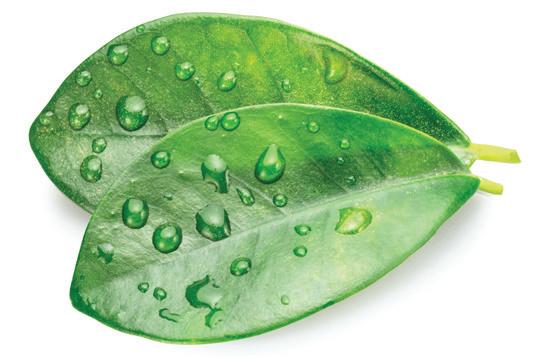


Look at the plants around you, you will see that some have flowers while others do not. Flowers often have bright colours and pleasant smell, and some of them eventually turn into fruits. Fruits such as apples, oranges and papaya, contain seeds inside. We plant seeds in the soil, and they then grow into new plants. However, some plants can be grown without seeds. Plants reproduce in two ways:
• through seeds
• through roots, stems and leaves

When you walk through a garden, the first thing that catches your eye is usually the colourful, fragrant flowers. Each flower is unique in size, shape, colour and scent. These flowers play a vital role in a plant’s life. They serve two purposes:
• To attract insects that aid in pollination

• To form seeds that will develop into new plants
Sepals: These are small, green, leaf-like structures which protect the flower when it is still a bud. Generally, sepals are green in colour.
Petals: These are brightly coloured and vary enormously in shape. The main function of the petals is to attract insects and birds to the flower.
Stamens: The stamen is located within the flower. It is the male reproductive part of the flower. Each stamen consists of a long filament with an anther at the top. The anther contains pollen grains.
Carpels: The carpel is the central part of the flower. It is also known as pistil. It is the female part of the flower contains a stigma, a style and an ovary. The style connects the stigma to the ovary, which contains one or more ovules that later become seeds.
Take a hibiscus or any other flower, carefully dissect it, and observe its different parts.

Plants reproduce in a fascinating way to create new life. One important process in this is seed formation, which involves several steps. Here is how seeds are formed:
• For a seed to form, pollen must travel from the anther to the pistil and then down to the ovary. You may have noticed insects feeding on flower nectar. As they do so, pollen grains from the anther stick to their bodies. When the insect moves to the stigma of a similar flower, the pollen grains transfer to the stigma. This process is called pollination. Insects are the main agents of pollination, helping to carry pollen from one flower to another.
• The stigma produces a sweet nectar that attracts insects. When insects land to drink nectar, they transfer the pollen on their bodies to the stigma. Once the pollen reaches the stigma, it forms a pollen tube that grows through the style to the ovary. The contents of the tube combine with the ovules, forming seeds.
• As this happens, the ovary swells and turns into a fruit, encasing the seeds inside. If the stigma does not receive pollen, the flower cannot reproduce, and will wither and die.
This process helps plants reproduce, continue their life cycle and maintain balance in nature.
Answer the following in one word.
1. It is the green leaf-like structure of a flower.
2. It is the colourful part of the flower that attracts insects.
3. It is the male part of the flower.
4. It is the female part of the flower.
encasing: as to cover or to enclose

Let us understand the structure of a seed and how it grows into a full-grown plant.

Seeds are found inside the fruit. The size, shape and structure of seeds of different plants vary considerably, but the basic structure of most the seeds is similar. A seed has three main parts—the seed coat, cotyledons (or seed leaves) and the embryo (or baby plant).
Seed Coat: The external covering of a seed is called the seed coat. It protects the baby plant that lies inside the seed.
Cotyledons or Seed Leaves: These store food for the growing embryo. Until the plant grows its own green leaves, it uses the food stored in the cotyledons to grow.
Embryo or Baby Plant: It is the baby plant that will turn into a seedling or a young plant.
Germination is the process by which a seed begins to grow into a seedling. For a seed to sprout, it needs to be planted in the right soil and provided with water, air and warmth. However, not all seeds turn into plants, as some are destroyed by rain, wind, insects, or birds, while others don’t get the right conditions to grow. The process of germination follows several stages:
• The seed is planted in soil and regularly watered while receiving air and warmth.
The Giant Sequoia Tree produces seeds that are so tiny they can weigh less than a grain of sand. Despite their small size, these seeds can grow into some of the largest trees on earth.



Stages of seed germination
• It absorbs water, causing the seed coat to break open.

• Once the seed coat breaks, a seedling emerges while drawing nutrients from the cotyledons initially before taking them from the soil.
• Tiny roots begin to grow along with a shoot.
• The seedling develops leaves and branches, eventually growing into a full plant.
Error Alert!
Be careful not to overwater your seeds when you plant them. Too much water can prevent air from reaching the seeds, stopping their growth.
Some seeds grow very close to each other and their parent plant, leading to competition for water, nutrients, light and space. This means that only a few seeds may survive while others perish. To improve their chances of survival, plants use various agents such as explosion, wind, water and animals to spread their seeds away from the parent plant. The process of scattering seeds away from the parent plant is known as seed dispersal. The following are some of the natural ways of seed dispersal:
• Dispersal by Wind: Seeds that are dispersed by the wind are small and light. Some examples include cotton and dandelion seeds which have tufts of hair, while maple seeds have wings to help them float in the air. Some other examples include drumstick and teak.
• Dispersal by Water: Plants near water disperse seeds and fruits through water. The examples include coconut seeds which have a fibrous covering that helps them float and lotus seeds which are found in spongy fruit that floats on water.
• Dispersal by Animals: Animals, birds and humans eat fleshy fruits like mangoes and discard the seeds, which can grow into new plants. Some seeds have hooks, spines or hairs that stick to animal fur or feathers and are carried to new places; examples include xanthium, tiger nail and spear grass.
• Dispersal by Explosion: Some plants like poppy, peas and beans have fruits that burst open when they are ripe and scatter seeds in all directions. This method of dispersal is called explosion.



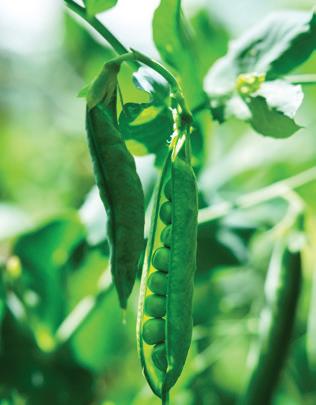
perish: to die
Write True or False.
1. The seed coat is the internal covering of a seed.
2. Cotyledons store food for the growing embryo.
3. Seeds will germinate if it is too cold.
4. Mango seeds are dispersed by wind.
5. Animals do not play any role in seed dispersal.
Some plants can grow from their roots, without needing the seeds. For example, sweet potatoes, carrots, radishes, turnips and dahlias.

Aim: To observe and understand how a new plant can grow from the top of a carrot. Materials Needed: A fresh carrot with its top (about 2–3 cm), a small shallow dish or bowl, water, cotton balls or a small piece of sponge and a space for enough sunlight
Method:
Step 1: Take a fresh carrot and cut off the root part, leaving about 2–3 cm of the carrot attached to the green leafy top.
Step 2: Place a few cotton balls or a small piece of sponge in the shallow dish or bowl. Place the carrot top on the cotton balls or sponge, with the cut side facing down.
Step 3: Pour a small amount of water into the dish, enough to keep the cotton balls wet.
Step 4: Put the dish near a window where it can get plenty of sunlight.
Findings: Over the next few days, observe the carrot top for signs of new growth. The green leafy top should begin to grow taller, and small roots may start to develop at the bottom.
Conclusion: Some plants, like carrots, can grow from their roots.

Plants like potatoes, ginger and onions have underground stems. These stems have many buds that can grow into new plants when conditions are right.
The buds on a potato are called eyes. If you plant a piece of potato with an eye in moist soil, it will grow into a new plant in a few days. Plants such as lilies, tulips and chrysanthemums grow from underground stems called bulbs.

Some plants can be grown from stem cuttings. For example, rose, sugarcane and money plant can grow from a piece of the plant’s stem.
Growing a rose plant from stem cutting.
• Choose a healthy rose stem about 6–8 inches long. Cut it just below a leaf node and remove the lower leaves.
• Plant the cut end in a pot with moist soil.
• Place the pot in a bright spot (but not in direct sunlight) and keep the soil moist. After a few weeks, new leaves should appear, indicating the cutting has rooted and is growing.



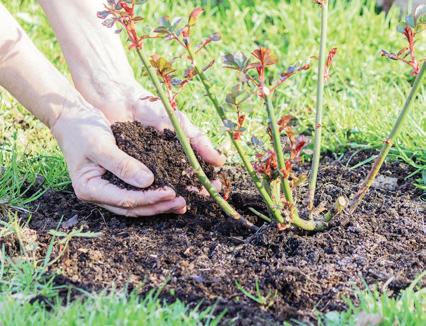
Some plants have special leaves that develop buds along their edges. These leaves are thick and fleshy. For example, Bryophyllum and Begonia. In these plants, the buds along the leaf edges can grow into new plants.

Identify the part of the plant through which the following plants can reproduce.

Plants provide us with food, oxygen, medicine, timber and many other resources. We cultivate plants extensively to meet our needs. This large-scale cultivation of plants for food products and other uses is known as agriculture.
The plants that are cultivated in large amounts in a specific area are referred to as crops. There are different types of crops:
• Food Crops: These are grown for human consumption, such as rice, wheat and vegetables.
• Cash Crops: These are grown to sell, like cotton and coffee.

• Feed Crops: These are grown to feed animals, like corn and hay.
To grow healthy crops, farmers needs to work hard and take care of the plants throughout the year. Here are the steps to grow healthy crops:
Ploughing: The soil is turned and loosened to prepare it for planting seeds. The loose soil allows air and water to pass through.
Sowing: In this process, seeds are carefully planted in the soil.
extensively: in a large scale or quantity




Watering (Irrigation): Regular and measured watering of plants.
Adding Manure and Fertilisers: Crops need nutrients from the soil. Manures enrich the soil by adding humus, while fertilisers give specific nutrients to help plants grow strong.

Weeding

Weeding: Farmers remove unwanted plants, called weeds, from the field so they do not take the water and nutrients meant for the main crops.
Protecting Crops: Crops need protection from birds, insects, rats and pests. Farmers use scarecrows to keep birds away and spray pesticides to protect crops from insects and animals.

Harvesting

Protecting crops
Harvesting: When the crops are fully grown, farmers cut and collect them.
Storage: After harvesting, crops are safely stored to keep them fresh until they are used or sold.

manures: the waste matter from animals that is mixed with soil to make plants grow better fertiliser: a substance added to the soil to provide specific nutrients to the plants nutrients: substances that are needed to keep a living thing alive and to help it grow

India is the world’s largest producer of pulses and jute, and ranks as the second largest producer of rice, wheat, sugarcane, groundnut, vegetables, fruit and cotton.
pollination: the transfer of pollen from the male part to the female part in flowers embryo: the baby plant inside a seed germination: the process by which a seed grows into a new plant seed coat: the outer covering of a seed that protects it cotyledons (seed leaves): parts of a seed that store food for the baby plant dispersal: the process by which seeds are spread to new areas agriculture: the practice of growing plants on a large scale for food and other uses crops: plants grown in large quantities by farmers humus: decomposed plant and animal matter in the soil pesticides: chemical substances that are meant to kill insects that destroy crops harvesting: the process of gathering mature crops from the fields

Scan the QR code to learn more about reproduction in plants.
• Plants are living organisms that breathe, grow, produce food and reproduce.
• Flowers attract insects for pollination and form seeds for new plants.
• Plants reproduce through the process of pollination.
• Seeds need water, air and the right temperature to germinate into new plants.
• Seeds disperse through wind, water, animals or explosions to avoid overcrowding.
• Plants can also grow from roots, stems or leaves besides seeds.
• Farmers grow crops on a large scale to provide food and other materials.

1. Tick ( ) the correct option.
A. What is the primary function of petals in a flower?
Protect the flower Store food Attract insects Disperse seeds
B. Which part of the seed stores food for the growing embryo?
Seed coat Cotyledons Embryo Root
C. The baby plant inside a seed is called the:
Seed coat Cotyledons Embryo Ovary
D. What do seeds need to germinate?
Light, soil and fertiliser
Only water and soil
Water, air and suitable temperature
Only sunlight
E. Seeds dispersed by animals often have: Wings Hooks or spines
Fibres to float in water The ability to explode out from the shell
F. Which of the following plants can grow from roots?
Rose Potato Carrot Mango
2. Fill in the blanks.
A. The external covering of a seed is called the .
B. The of a flower develops into a fruit.
C. store food for the growing embryo.
D. of some plants like sweet potatoes can grow into new plants.
E. Manures and fertilisers provide to crops.
3. Write True or False.
A. Sepals are usually brightly coloured.
B. Insects are main agents of pollination.
C. Seeds need both air and water to germinate.

D. Plants can grow from stem cuttings too.
E. Watering is necessary for crops to grow.
4. Short-answer questions.
A. Describe the process of pollination.
B. What conditions are necessary for seed germination?
C. What is the significance of seed dispersal?
D. How do seeds dispersed by water adapt to their environment?
E. How can a new plant grow from a stem cutting?
F. Why do farmers use fertilisers?
5. Long-answer questions.
A. Describe the structure of a seed and its parts.
B. Discuss the importance of seed dispersal and the different methods by which seeds are dispersed.
C. What are the main steps involved in agriculture? Write one line about each.
D. With the help of a labelled diagram, explain the structure of a flower.
6. Picture-based questions.
A. What do you think the bee is doing in the picture?
B. What is this process called?
C. What is the result of this process?



1. How would the absence of insects affect the reproduction of flowering plants?
2. What are the advantages of growing plants from roots instead of seeds? Provide examples of plants that can be grown this way.
Crops are important for our food supply, and farmers work very hard to cultivate them. They plant seeds, water the plants, and care of them until they are ready to be harvested. You can help your family and friends understand a farmer’s hard work, and the importance of not wasting food. Also, encourage your family to buy local and seasonal fruit and vegetables.

INTEGRATED


Habitat of Animals
Animal World
Feeding Habits of Animals
Adaptations in Animals Migration in Animals

Get Set

Help the animals find their homes.
Like us, animals also need food and shelter to survive. But how do animals survive against heat or cold? And how do different animals live in different places? We will find answers to these questions in this chapter.

The natural home of animals is called their habitat. Habitats provide food, water, shelter to animals. Several kinds of plants and animals live in the same habitat. For example, the ocean is a habitat because it is a natural home for various aquatic plants and fish.
Only the natural home of an animal can be called a habitat. For example, a zoo is not the habitat of a tiger because it is not its natural home.
There are different types of habitats such as forests, deserts, the polar regions, freshwater bodies (rivers, lakes and ponds), and oceans. Let us learn about them.
A forest is a large area covered with trees. They are important because they are home to many animals, they clean the air we breathe and offer us resources such as wood and paper.
Some animals that live in forests are elephants, tigers, leopards, baboons, foxes, wolves, snakes and bats. Many kinds of birds, like eagles, owls, kingfisher and mynas and peacocks live in forests.
A desert is an extremely dry area as it receives very little rainfall. Animals such as camels, scorpions, desert snakes and hedgehogs are found in deserts. These animals have thick skin to reduce water loss through sweating. Some find shelter in burrows to escape the heat, while others store water and food in their bodies. These adaptations enable them to survive in the harsh, water-scarce environment of the desert.


An area in a desert where water and plants can be found is called an oasis.
shelter: a place that protects from weather or danger resources: anything available in our environment that can be used to fulfil our needs
Polar regions refer to the areas near the north (Arctic) and south (Antarctica) poles of the Earth. These high-altitude regions are covered with ice and snow all year round. In the Southern Hemisphere, you can find animals like penguins, whales and seals, while the Northern Hemisphere is home to polar bears, Arctic foxes and Arctic hares. These animals have thick fur and a layer of fat underneath their skin to stay them warm.
A freshwater habitat is a naturally-occurring water body on the Earth’s surface. There, the water is not salty. Rivers, lakes, ponds and streams are some examples of freshwater habitats. Many animals live in freshwater. Some of these animals include catfish, trout, frogs, turtles, water snakes, ducks, kingfishers and swans.
An ocean is a huge body of saltwater that covers most of the Earth’s surface. Many animals live in oceans. Oceans are the largest habitats on Earth. Some of the animals found here are crabs, octopuses, whales, jellyfish, turtles, eels, angelfish, sharks and dolphins.
Name the following habitats.
1. A large area covered with trees.



2. A huge body of salty water that covers most of the Earth’s surface.
3. An area that remains covered with ice for most of the year.
4. A very dry place where hardly any rain falls.

We all know that our body needs energy to be alive, to grow and to perform various activities. We get this energy from the food we eat. If we do not eat food, we become weak and tired. We can even fall sick. Just like us, all animals also get energy from the food they eat. Animals can be grouped by what they eat. Some animals eat only plants, some eat only other animals and some eat both. This shows how different animals have different dietary habits.
Herbivores are animals that eat only plants. Their food includes leaves, grass, flowers, fruits, seeds and roots. They have a dental pad on the upper jaw and sharp front teeth, called incisors, on the lower jaw for biting. Their broad back teeth—molars and premolars, help them grind and chew their food. Some examples of herbivorous animals are deer, zebras, cows, sheep, horses, rabbits, elephants and giraffes.
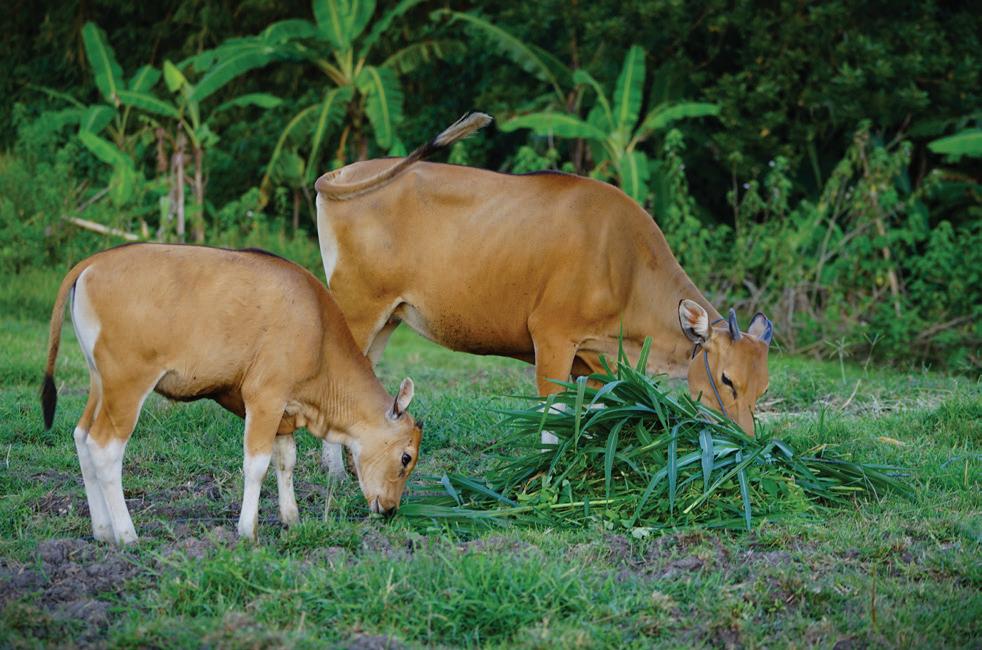
We have learnt that herbivores eat plants and grass. They must grind their food into a paste before swallowing it, which requires strong, flat teeth. Have you ever seen how cows chew on grass? A cow’s mouth moves up and down to bite and from side to side to grind food easily.
Carnivores are animals that hunt and eat other animals. Some examples of carnivorous animals are foxes, wolves, lions, sharks, tigers, crocodiles, eagles, cats, frogs and snakes.
Carnivores have sharp canine teeth to tear meat, and strong molars to crush bones. Birds of prey such as eagles, have sharp, hooked beaks for tearing flesh. grind: to press and break something into very small pieces

Omnivores are animals that eat both plants and animals. Some examples of omnivorous animals are human beings, mice, bears, pigs and hens.
Omnivores have flat teeth at the back for grinding food and sharp teeth at the front for tearing it.
Scavengers feed on the flesh of animals that are already dead. They have sharp beaks or teeth to tear flesh. Examples of scavengers include vultures, jackals and hyenas.
Lice, ticks and fleas are parasites. They live on the body of another living being, and suck their blood for their food.
Match the following.

Column I Column II
A. Omnivores i. Sharp teeth
B. Carnivores ii. Flat and sharp teeth
C. Herbivores iii. Strong and flat teeth
A fish can live in water but a camel cannot. The features of a fish help it to live inside water, however, the features of a camel are best suited for survival in a desert. These features that plants and animals develop to survive in their natural habitats, such as seas and deserts, are called adaptations.
The different ways in which plants and animals adapt to their habitats include:
• Body Covering
• Breathing Organs
• Organs for Movement
Body Covering
One way animals adapt is through their body covering, which can include fur, feathers, scales, shells or skin. These coverings help animals stay safe, find food, and survive in different climates.

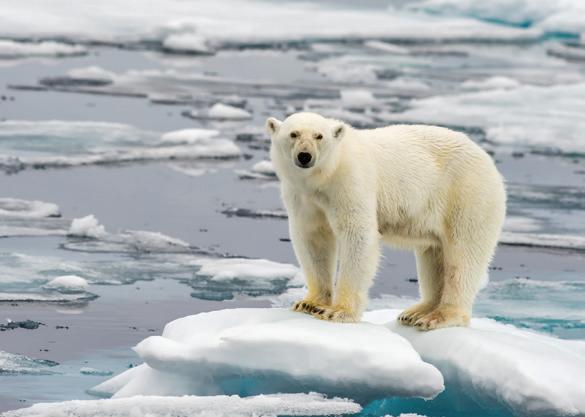
Fur: Polar bears have thick fur to keep them warm in the icy polar regions. Their fur is also water-resistant, helping them stay dry after swimming.
Feathers: Birds have feathers that help them fly, stay warm, and sometimes even help them blend into their surroundings. Penguins have waterproof feathers to keep them dry while swimming.
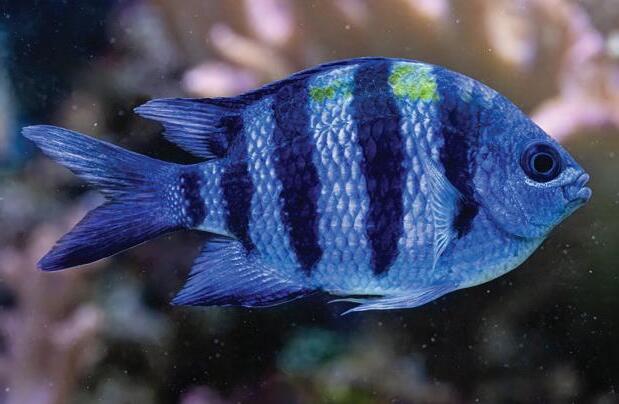

Scales: Fish have scales that protect their bodies and help them swim smoothly.
Shells: Turtles and snails have hard shells on their back that protect them from predators and harsh environmental conditions. They can pull their heads, legs and tails into their shells for safety.
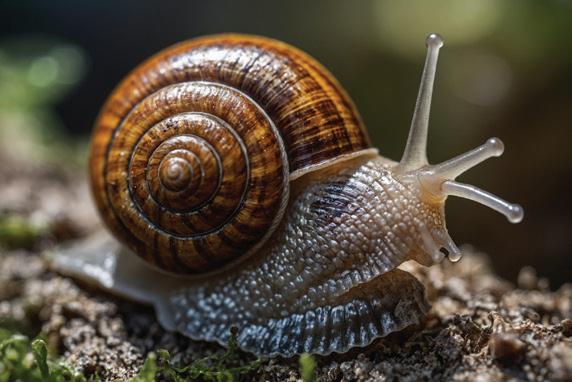
A camel’s thick skin helps protect it from the hot sun in the desert. Camels can also close their nostrils to keep out the sand during sandstorms.
Animals live in different places, like water, land and air. They have special adaptations for breathing in each of these places. Let us learn how different animals have adapted their breathing organs to survive.
Animals such as fish, crabs and prawns breathe using gills. Gills are feather-like organs located in pouches on either side of the animal’s head that absorb oxygen from water.
water-resistant: to not allow water to pass through easily predator: an animal that kills and eats other animals
Reptiles, birds and mammals breathe using lungs. Humans are also mammals. Air enters through the nose and travels down the windpipe to the lungs where gas exchange occurs between air and blood.
Insects breathe through tiny openings on their bodies called spiracles. These spiracles lead to a network of tubes known as trachea that extends to every part of their body, allowing air to enter through this network.
Error Alert!
Whales and dolphins have lungs too, but they don’t have a nose. They come to the surface to breathe air through blowholes.































































Fish have fins that help them swim smoothly through water. They have streamlined bodies that allow them to swim quickly and easily. Some animals, like frogs and ducks, have webbed feet for swimming in water.






































streamlined: a shape that is narrow at the front and broad at the back

















































Animals such as frogs and toads are called amphibians. They can live both on land and in water. Young amphibians use gills to breathe in water, but adults depend on lungs and moist skin when on land.
Animals move from one place to another in search of food, shelter or safety from predators or natural disasters. This ability to move is known as locomotion. Different animals use different body parts for movement.

Birds have wings that help them to fly. Their wings are strong and covered with feathers which help them lift off the ground and glide through the air. Birds have light, hollow bones that make it easier for them to fly.

Animals such as deer and horses have strong legs that help them run fast to escape from predators. Their legs have muscles that give them the power to run and jump.
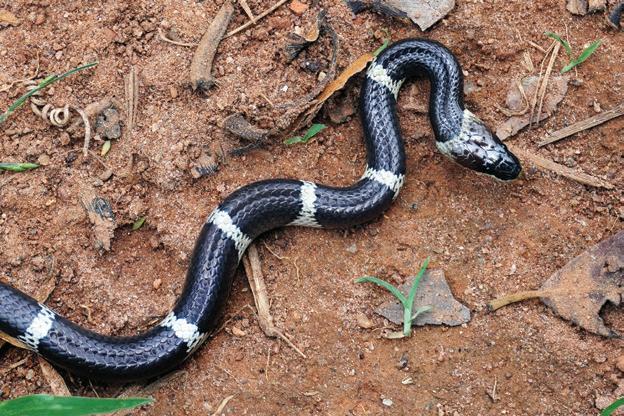

Snakes do not have legs. Instead, they use their muscles to slither smoothly across the ground.
Choose an animal you find interesting and research more about it on the internet. Create a poster with pictures along with facts about its habitat, diet, behaviour, etc.
Give one word for the following.
1. The features that help plants and animals survive in their natural habitats.
2. The body covering that keeps polar bears warm in icy polar regions.
3. The breathing organs in fish that absorb oxygen from water.
4. The body part that helps fish swim smoothly through water.
5. The tiny holes in insects’ bodies used for breathing.
Migration is the regular movement of animals from one area to another, caused mainly due to unfavourable weather conditions, the search for new habitats, or food shortages. This movement occurs at specific times and during certain seasons. Animals may also migrate due to natural disasters such as earthquakes, droughts and floods. Some species travel to specific areas at specific times of the year to give birth to their young ones; these locations are known as breeding grounds.
slither: to move by sliding from side to side along the ground




Certain birds, known as migratory birds, migrate twice a year during spring and autumn. They do this to avoid harsh weather and to find food. For instance, the Arctic tern breeds near the north pole in summer and migrates all the way to Antarctica in autumn to escape extreme cold.
What could happen to a bird if it did not migrate when its food sources became scarce? Discuss with your classmates.
Other animals, like caribou, elk and whales, also migrate in search of food. Certain insects, such as butterflies and moths, also migrate. The monarch butterfly, for instance, migrates from Canada to Mexico during winter.

Flamingos are known for their long migrations, and every year thousands of them travel to India. These beautiful birds fly from regions like Siberia and the Middle East to wetlands in Gujarat and Maharashtra. They come to India during the winter months, searching for food and a safe place to breed.
habitat: a natural home of an animal or a plant

adaptation: the features that plants and animals develop to live in a habitat
fur: the soft thick hair that covers the bodies of some animals
scale: a small rigid plate that grows out of the skin of a fish
shell: a hard covering that protects some animals
spiracles: a respiratory organ in insects
migration: the movement of animals from one place to another in search of food, better climate and shelter

Scan the QR code to learn more about habitats.

• The natural home of animals is called its habitat.
• Since animals eat different types of food, they can be classified based on the food they eat: herbivores, carnivores, omnivores, scavengers and parasites.
• The features that plants and animals develop to survive in their natural habitats are called adaptations.
• Animal migration is when animals move from one place to another at certain times of the year to find food, better weather or safe places to raise their young ones.
1. Tick ( ) the correct option.
A. Which of the following is not an example of a habitat?
Desert Nest Forest Ocean
B. Which of the following animals have fins for movement?
Tiger Fish Frog Camel
C. Which organ helps animals breathe underwater?
Lungs Spiracles Gills Blowhole
D. Which animal has scales as its body covering?
Dog Butterfly Fish Duck
E. Why do some animals, like polar bears, have thick fur?
To look bigger To keep warm in cold climates
To help them swim To scare predators
2. Fill in the blanks.
A. The natural home of animals is called a .
B. Fish have that help them swim smoothly in water.
C. Polar regions are covered with for most part of the year.
D. are the habitats of camels.
3. Match the following.
A. Desert i. Elephants
B. Forest ii. Penguins
C. Ocean iii. Camels
D. Freshwater habitats iv. Whales
E. Polar regions v. Swans
4. Write True or False.
A. Deserts receive a lot of rainfall.
B. Both day and night are extremely hot in the deserts.
C. Soil remains frozen in the polar regions.
D. It is easier for us to breathe air under water than on land.
5. Short-answer questions.
A. What is a habitat?
B. Write a short note on the feeding habit of carnivores.
C. Provide an example of a living organism that has adapted to the following environments:
a. In polar regions b. In deserts c. In water
D. Define parasites, with examples.
E. Briefly explain the importance of shells in snails and turtles.
F. Give two differences between the teeth of carnivores and herbivores.
6. Long-answer questions.
A. Why do animals migrate? Explain with the help of three examples.
B. Explain the differences in the way fish and insects breathe.
C. How do the following features help a fish adapt to its habitat?
a. Shape
7. Picture-based questions.
b. Scales c. Fins
A. Identify the animal shown in the image and name its habitat.
B. How does its thick fur and layer of fat help it survive in the cold polar region?
C. What special adaptations does it have to walk on snow in this icy habitat?
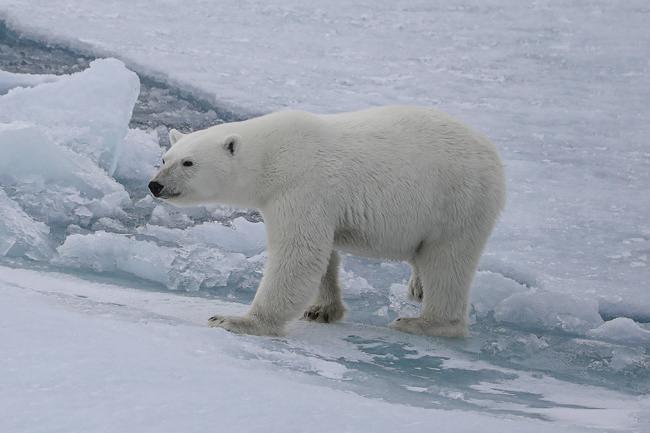



How do you think climate change might affect animals living in the Arctic circle and Antarctica?
Just like how adapt, we also need to learn how to handle changes around us. It could be starting a new school, making friends in a new place, or facing surprises like bad weather. Being able to adjust helps us become stronger. Write a diary entry about a challenge you faced and the ways you found to overcome it.





Let's play a fun game to understand our surroundings better.
Step 1: Take a paper chit. Write the name of something that you commonly see around you—it could be plants, animals, vehicles, a plastic bag or books.
Step 2: Make more such chits and put them into a bowl on the teacher's table. Mix them up.
Step 3: Now, one by one, pick a chit. Read what's written on it.
Step 4: Let others decide if that thing is good or bad for our surroundings. Also, discuss why.
Environment is everything that surrounds us. It includes living things like plants and animals, and non-living things like soil, air and water. A clean and healthy environment is important for the well-being of all living beings. However, human activities have increasingly harmed the environment, resulting in various form of pollution. Let us learn about pollution and its effects on our environment.

Pollution occurs when harmful or poisonous substances are introduced into the environment. These substances can make air, water and land, unsafe for humans, animals, and plants. Such harmful substances are known as pollutants. There are four major types of pollution—air pollution, water pollution, land pollution and noise pollution. Let us learn about each of them in detail.
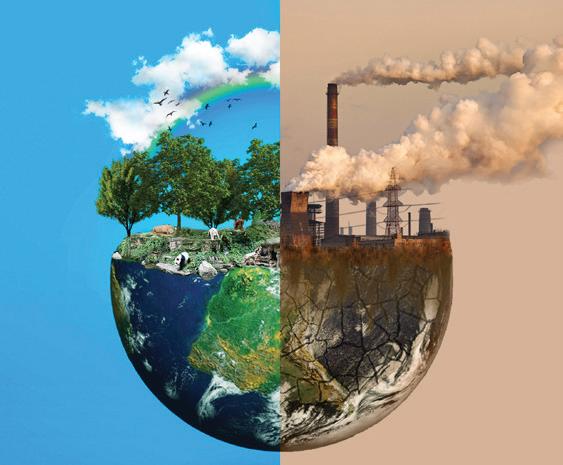
Imagine you are travelling by bus or car, and you see a truck in front of you releasing a thick black smoke. That black smoke is an example of pollutant, making the air dirty and hard to breathe. Air pollution occurs when harmful substances like gases, dust, or smoke enter the air and affect the quality of air we breathe. Some causes of air pollution are:
• Burning fossil fuels (like, coal and petroleum) and garbage releases toxic gases such as carbon monoxide, carbon dioxide and methane into the air. These gases are very harmful and can cause respiratory diseases like asthma and lung cancer.
• Natural activities like volcanic eruption and forest fires release ash and gases into the air and pollute it.
• Spraying pesticides and fertilisers can also lead to air pollution.



Gases like carbon dioxide and methane trap the Sun’s heat, raising the temperature of the Earth. This phenomenon is known as the greenhouse effect and these gases are called greenhouse gases. This increase in Earth’s temperature due to this effect is called global warming.
containing poison
related to breathing
Mention two ways in which you can help reduce air pollution.

Let us see the effects of air pollution. Take two identical plastic bottles and fill them with cotton balls. Cover one bottle with a thin layer of cloth and leave the other bottle uncovered. Place the bottles outside for a day. Position one bottle in a busy area (like near a road) and the other bottle in a less polluted area (like in a garden). At the end of the day, compare the cotton balls in both bottles to see how much dust and pollutants were collected. Discuss how air pollution affects our lungs similarly.
Imagine visiting a beach and finding it littered with plastic or seeing a river filled with garbage—this is the result of water pollution. It affects not only the animals living in the water but also the water we drink and use every day.
The addition of harmful substances in water bodies like rivers, lakes, seas and oceans causes water pollution. This makes the water dirty and unsafe. Water pollution can occur in various ways:
• Throwing household garbage, plastics and untreated industrial wastes into water makes it dirty and unfit for use. Consuming dirty water can cause diseases like jaundice, typhoid, cholera and dysentery.
• Human activities, such as washing clothes and bathing in water bodies, cause water pollution.
• Pesticides and fertilisers get mixed with rain and enter water bodies, thereby polluting them.
• Oil spills from ships cover the surface of oceans and seas. Due to this, aquatic life finds it difficult to breathe and survive.

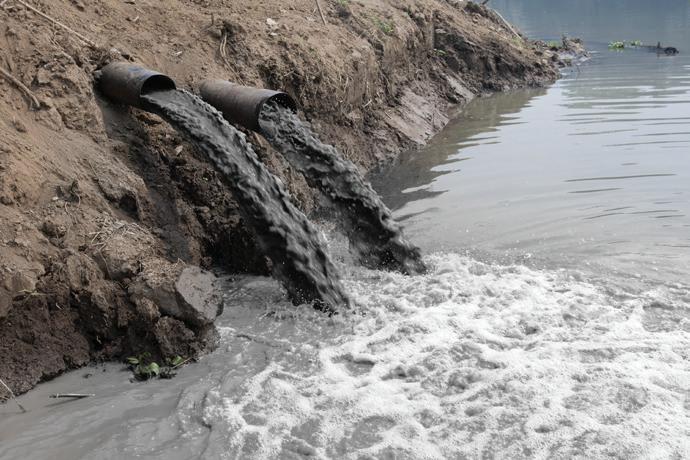
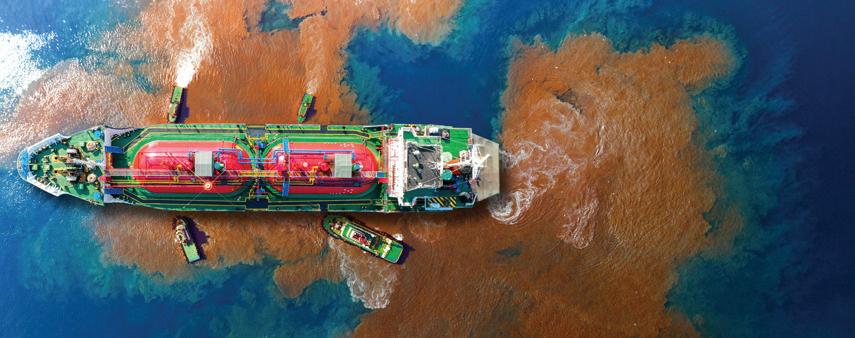
Aim: To study the effects of different pollutants on water.
Materials Needed: clear plastic containers, clean water, various pollutants (soil, oil, food colouring, small pieces of plastic, paper scraps), a spoon, small nets, cotton balls or coffee filters
Method:
Step 1: Fill the clear plastic container with clean water. This represents a clean water source.

Step 2: Ask students to take turns one by one and add different pollutants to the water (soil to represent dirt runoff, oil to represent oil spills, food colouring to represent chemical pollutants, and small pieces of plastic and paper to represent litter).
Step 3: Stir the water gently with a spoon to mix the pollutants.
Step 4: Observe the water and note changes in its appearance, colour and clarity. Discuss how each pollutant affects water.
Findings: Larger pollutants are easier to remove from water with the help of nets. However, smaller and finer particles are difficult to remove from water.
Conclusion: Any kind of impurity (small or large) is harmful to water. These pollutants contaminate water and make it unsafe for consumption.
It is a common mistake to think that polluted water is always dirty or smelly. Sometimes, water can look clear and still be polluted with harmful chemicals or germs that you cannot see.
Imagine you are walking in a beautiful park, but you see trash everywhere—plastic bottles, candy wrappers and old newspapers. How would you feel? You will not feel good at all. All this litter contributes to land pollution. Let us learn more about it.
When harmful substances are added to the soil or land, making it dirty, unhealthy or unsafe, it is called land pollution. It can happen in various ways:

1. Throwing solid wastes, such as plastic bags, metal containers, and glass bottles on the ground can pollute the soil and harm wildlife.
2. The roots of trees hold the soil in place. Deforestation causes strong winds and rain to wash away the top layer of the soil, causing soil erosion.
3. Extracting minerals from the earth can cause the land to become polluted and degraded.
Clean air, water and land are the basic requirements for life to flourish.
Imagine you are trying to read your favourite book, but there is loud music playing, dogs barking and cars honking outside. Will you be able to focus? All these loud sounds together can be very annoying and even harmful. This is called noise pollution.
When loud noises are produced by the honking of vehicles, loudspeakers and construction sites, it causes noise pollution. If we hear these loud noises for a long period, it may lead to deafness. Noise pollution can cause stress, hearing loss, sleep disturbances, and other health issues. Loud noises can disturb animals, affecting their behaviour and habitat.
Choose the odd one out.

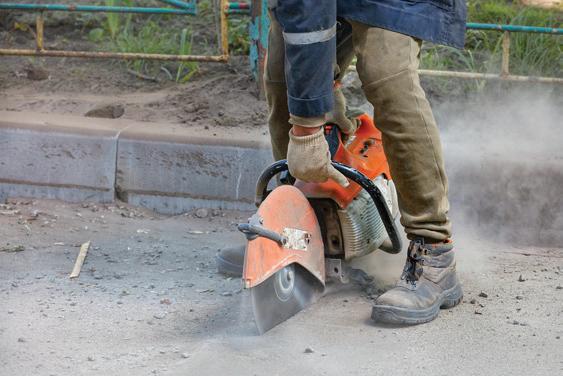
1. Burning of fuels Air pollution Dysentery Smoke
2. Carbon dioxide Methane Oxygen Greenhouse gases
3. Noise pollution Deafness Loud speakers Water pollution
1. Factories should be located away from the residential areas. They should have filters so that the harmful gases and smoke are processed and not released out in the air.
2. We should plant more and more trees in our surroundings.
Are there any rules or guidelines that could help keep noise levels down in public places? Discuss with your classmates.
3. Different types of waste should be treated before getting dumped.
4. We should avoid using plastic bags and bottles.

deafness: unable to hear





5. We should use natural fertilisers for agricultural purposes.
6. The government should ban unnecessary honking of horns on the roads.
7. We should adopt the formula of the 3R’s (reduce, reuse and recycle) to prevent pollution.
Due to the actions taken by the Namami Gange river conservation plan, around 4,000 Indian river dolphins have returned to the Ganga and its tributaries. This shows that the rivers are slightly cleaner than before, and it has encouraged the people and the government to put in more effort to prevent river pollution in India.


environment: all living and non-living things in our surroundings pollutants: the harmful substances that cause pollution
air pollution: the addition of harmful particles in the atmosphere
water pollution: the addition of harmful chemicals, waste and plastic in water bodies
land pollution: polluting of the soil due to garbage, plastic waste and deforestation
noise pollution: loud noise that affects the health of humans and animals

• All living and non-living things in our surroundings make the environment.
• Pollution is caused by the addition of harmful substances into the environment.
• There are four main types of pollution—air, water, land and noise.
• We should follow measures to reduce pollution and save our environment.
1. Tick ( ) the correct option.
A. What is air pollution?
The contamination of water by harmful substances.
The contamination of soil by harmful substances.
The contamination of air by harmful substances.
The contamination of noise by harmful substances.
B. Which of the following is a major cause of water pollution?
Planting more trees. Using solar energy.
Disposing industrial waste into rivers. Riding bicycles.
C. How can we reduce land pollution?
By throwing garbage everywhere. By burning plastic waste. By recycling and reusing materials. By cutting down trees.
D. What is noise pollution?
The presence of harmful chemicals in water.
The excessive and harmful levels of noise in the environment.
The presence of unwanted materials in the soil.
The increase in the earth’s temperature.

2. Fill in the blanks.
respiratory noise water global warming
A. Air pollution can cause problems like asthma and lung cancer.
B. The increase in the Earth’s temperature by greenhouse gases is called .
C. pollution can cause diseases like jaundice, typhoid and dysentery.
D. pollution is caused by the honking of vehicles, loudspeakers and construction sites.
3. Write True or False.
A. Throwing garbage into rivers and lakes causes water pollution.
B. Factories that burn coal and gas to produce energy release pollutants into the air.
C. Gases like carbon dioxide and methane are called greenhouse gases.
D. Noise pollution can cause stress and hearing loss.
4. Circle the correct alternative in each of the following.
A. Air / Water pollution occurs when harmful substances enter into air.
B. Water / Noise pollution makes water dirty and unsafe for use.
C. Land / Noise pollution can cause stress, hearing loss and sleep disturbances.
D. We should prefer to use natural / chemical fertilisers for agricultural purposes.
5. Short-answer questions.
A. Name two diseases caused by air pollution.
B. What is the greenhouse effect? Which gases are responsible for the greenhouse effect?
C. Mention ways to prevent water pollution.
D. How is land pollution caused?
E. Mention one harmful effect of noise pollution.

6. Long-answer questions.
A. Explain air pollution and factors causing air pollution. Mention its effects on environment as well.
B. How is noise pollution caused? What will happen if we are exposed to loud noises for a longer time period?
C. List some ways to prevent pollution.
7. Picture-based questions.
A. Which type of pollution is depicted in the given image?
B. What major cause of the pollution is being shown in the above image?
C. Write one harmful effect of the above-mentioned pollution on human health.


If you were the governor of your city, what steps would you take to ensure that local water bodies, the land and the air are not polluted by the residents?

With the help of your neighbours, volunteer to clean one neighbourhood park. Sort the wastes into different types: all the recyclable wastes in one bag and the non-recyclables in another. Also try to plant grass and local plants and trees in the park.




Atmosphere Air Around Us Water in Nature Purifying Drinking Water

Get Set Air and Water

Look at the images and identify the thing (air/water) required for the activity. Write it in the box given below the images.



A thick layer of air surrounds the Earth, known as the atmosphere. It is held around the Earth by gravity and is made up of gases like oxygen, nitrogen, carbon dioxide and others. The atmosphere is essential for life on Earth in the following ways:
1. Provides oxygen: The atmosphere contains oxygen, which all living beings need to breathe.
2. Supports plant life: Plants absorb carbon dioxide from the atmosphere and use it to produce food through photosynthesis.
3. Protects from harmful rays: The atmosphere shields us from the sun’s harmful UV rays and helps regulate Earth’s temperature.
4. Blocks meteors: It acts as a protective barrier, preventing most meteors from reaching Earth’s surface.
Our atmosphere is divided into five layers—troposphere, stratosphere, mesosphere, thermosphere and exosphere. Let us learn about each of them.
1. Troposphere: Being the first and the innermost layer surrounding the Earth’s surface, it provides air for breathing. This layer contributes to the changes in the weather we experience.
2. Stratosphere: This is the second layer in the atmosphere. Aeroplanes fly in this layer to avoid any weather changes. This contains the ozone layer which protects the Earth’s surface from the harmful ultraviolet rays emitted by the Sun. These rays may cause skin cancer.
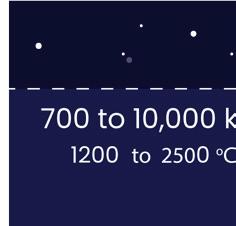


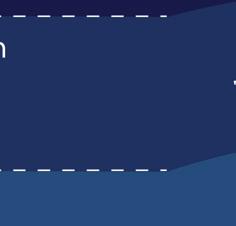



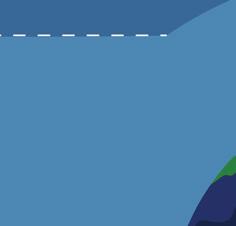

3. Mesosphere: This is the third layer of the Earth’s atmosphere. It protects the Earth by burning up meteors as they enter, preventing them from reaching the Earth’s surface.






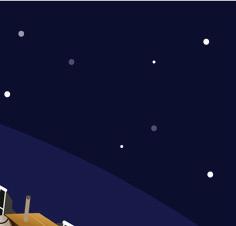


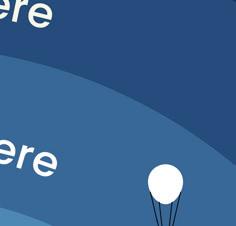





There are other celestial bodies, like the planet Venus, that have an atmosphere. Do you think life is possible there? Discuss in your class.
4. Thermosphere: This is the fourth layer of our atmosphere. In this layer, the temperature can reach approximately up to 2000˚C. Space shuttles orbit around the Earth in the thermosphere.
5. Exosphere: This is the fifth and the outermost layer. There is no life beyond this layer, as air does not exist. Artificial satellites orbit around the Earth in this layer. This layer opens up to the outer space.

Name the following layers of the atmosphere.
1. It provides air for breathing.
2. It protects us from the harmful UV rays.
3. It allows artificial satellites orbit around the Earth.
4. It lets the space shuttles orbit around the Earth.
Air is everywhere around us. We cannot touch or see it, but we can feel it. Air is very important as we need it for our survival. It is used by all living things. For example; plants, animals and human beings need air to breathe.
Air is a mixture of different gases. Let us learn about them.
Nitrogen: Nitrogen constitutes 78% of the air. Nitrogen cannot be used directly by plants and animals. The bacteria present in the soil help to convert atmospheric nitrogen into its usable form, which can be used by plants. Plants also obtain nitrogen artificially from pesticides and fertilisers. When the animals feed on these plants, they also get the required amount of nitrogen.
Oxygen: It is one of the most crucial components of air. Oxygen constitutes 21% of the air. It is required mainly by living beings for breathing. It is also required for burning.
All living beings need oxygen to survive. Where does such a large amount of oxygen come from?
Other gases: We know that oxygen and nitrogen together make up 99% of the air. The remaining 1% of air comprises carbon dioxide, argon, water vapour and other gases.
Plants require carbon dioxide to prepare their food during the process of photosynthesis. Argon, a colourless and odourless gas, is used to make light bulbs and fluorescent bulbs. When water gets evaporated from the Earth’s surface, it becomes water vapour. The presence of water vapour leads to changes in weather. The amount of water vapour present in the air is also known as humidity.
Air also consists of hydrogen, helium, ozone, smoke and dust particles in it. Helium is a light gas and it is used to fill balloons.

Aim: To prove that oxygen is required for burning.
Materials Needed: A matchbox or lighter, 1 glass beaker, 2 candles and a table
Method:
Step 1: Under an adult’s supervision, light both the candles and place them upright on a table.
Step 2: Cover one candle with a glass beaker.
Step 3: Observe what happens to both the candles.
Step 4: The candle covered with the glass beaker stops burning after some time. The other one continues to burn.
Findings: When we cover the candle with a glass beaker, the oxygen supply stops. The other candle keeps on burning as oxygen is supplied continuously.
Conclusion: Oxygen is required for burning.
Living things are not only found in soil and water but also in the air. Bioaerosols are small particles in the air that carry things like bacteria, viruses, pollen or fungi. They can be released from plants, animals and human activities, like coughing or sneezing. Bioaerosols can affect human health, leading to allergies or spreading diseases.



Oxygen is required for burning.
Error Alert!
It is commonly believed that air is same everywhere. But that is not true. Air quality can vary, depending on location, altitude and pollution levels.
Air is colourless, tasteless and odourless, but it has several important properties.
Air occupies space: Air is matter, so it takes up space. When you blow air into a balloon, the balloon inflates because the air fills and occupies the space inside it. The same happens with things like footballs, tyres and cushions.
odourless: without any smell

Air has weight: An inflated object weighs more than when it is deflated. This demonstrates that air has weight.

Aim: To prove that air occupies space and has mass.
Materials Needed: A deflated balloon and a straw
Method:
Step 1: Take a deflated balloon.
Step 2: Insert a straw in it.
Step 3: Blow into the straw until the balloon gets inflated.
Step 4: Hold the balloon and try to feel its mass compared to when it was deflated.
Findings: The balloon gets inflated and takes the desired shape. It becomes heavier once inflated.
Conclusion: This shows that air occupies space. The balloon also becomes heavy as compared to the deflated one. So, it also shows that air has mass.
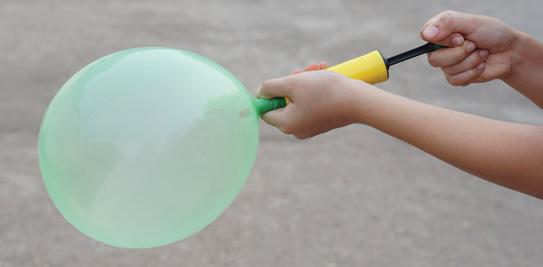
Balloon is inflated after filling air into it.
Air exerts pressure: Since air has weight, it pushes against objects in all directions, creating air pressure. This pressure is essential for everyday activities like drinking water or juices with the help of a straw, filling ink in a fountain pen and drawing liquid medicine into a syringe. Let us learn about them by conducting some activities.

Aim: To prove that air exerts pressure.
Materials Needed: A glass, a piece of cardboard and water
Method:
Step 1: Fill a glass completely with water.
Step 2: Place the piece of cardboard over the top of the glass, ensuring there are no air bubbles.
Step 3: Hold the cardboard in place and carefully turn the glass upside down.
inflated: to fill something with air; deflated: to make something smaller in size by letting the air out
Step 4: Slowly release your hand from the cardboard while holding the glass upside down.
Findings: The cardboard stays in place, and the water does not spill out.
Conclusion: This experiment demonstrates that air exerts pressure from below, pushing up against the cardboard and preventing the water from falling.

About 71% of our Earth’s surface is covered with water. It is obtained from different sources like oceans, rivers, lakes, ponds and wells. Water from different sources evaporates and condenses to form clouds in the upper atmosphere. Clouds become heavier and precipitate. Rainwater goes back to water sources. This cycle is called water cycle. Rainwater acts as the main source of water on the Earth. Water is used for various purposes, such as bathing, washing, cooking and cleaning.
We know that water is a universal solvent. This mean it can dissolve a wide range of substances into it. Sometimes, unwanted or harmful substances dissolve in water, making it polluted and unfit for use. These substances are called impurities.
Soluble Impurities: These impurities completely dissolve in water. Once mixed with water, we cannot see these impurities with our naked eyes. Some examples of soluble impurities include sugar and salt.
Insoluble Impurities: Unlike, soluble impurities, they do not dissolve in water. They are visible with our naked eyes. They can either float on water or settle down at the bottom. Some examples of insoluble impurities include sand and mud.

We have learnt about different types of impurities. Depending on this, different methods are used to remove different types of impurities. Let us learn about them.
Evaporation: In this method, soluble impurities are removed from water by heating. Heating changes water into steam, leaving the impurities behind in the vessel.
Distillation: In this process, water is heated and distilled water is collected on condensation.
The steps used in the distillation process are as follows:
1. The impure water is poured into the round-bottom flask. It is then heated until it starts boiling.
2. On boiling, water changes into steam or water vapours.
3. The produced steam is then passed through the condenser and becomes cool. This changes steam back to water.
4. The pure and clean water is then collected in the receiving flask. This water is called distilled water.
Round Bottom
Heating
Receiving Flask
Distillation
Insoluble impurities are removed by methods like sedimentation and decantation.
Sedimentation and Decantation: These are used to separate impurities like mud and sand, which are heavier than water.
Let us learn how to separate sand from water.
1. Mix some sand in a glass of water.
2. Let it stand undisturbed for some time.
3. After some time, you will observe that sand settles down at the bottom of the beaker. This process is called sedimentation.
Sedimentation and decantation Water out

4. In sedimentation, clean water appears on the top.
5. Now, slowly pour the obtained clean water in an empty beaker. This process is called decantation.
We know that 71% of the Earth is covered with water. Given this, what do you think causes the issue of water scarcity in many places? Discuss your thoughts with your classmates.
Tick ( ) the correct alternative in each of the following.
1. Substances that make water unfit for consumption are called impurities/solvents.
2. Soluble/insoluble impurities get completely dissolved in water.
3. Soluble/insoluble impurities can either float or settle down in water.
4. Sugar/sand dissolves in water.
5. Distillation/sedimentation is used to separate insoluble impurities from water.
We should use water wisely and judiciously.
Water which comes to our houses through pipes and taps is unfit for direct consumption. It consists of various impurities and germs. This makes us fall ill. We suffer from various waterborne diseases like cholera, jaundice and hepatitis after consuming such impure water. So, we need to purify water before consuming. Let us learn about these methods.
Did You Know?
The boiling temperature of water is 100 degree Celsius.
This is one of the oldest and easiest methods to purify water at home. Water needs to be boiled for 15–20 minutes when its temperature reaches 100 degrees Celsius. In this process, the germs are killed. Once the water cools down, it needs to be stored in clean vessels for consumption. These vessels need to be covered and stored in a clean and dry place. Water filters and





purifiers can be used at home to clean drinking water. Potassium permanganate is also used to treat drinking water as it disinfects and helps prevent diseases.
Before water is supplied to our homes through pipelines, it undergoes purification and filtration using three main methods:
Sedimentation: Water from sources like rivers and lakes is collected in large tanks and left undisturbed for several days. During this time, solid impurities settle at the bottom of the tank. Sunlight also helps kill many germs present in the water. Alum is added to improve the water quality.
Filtration: After sedimentation, the water is filtered through a clean sand bed to remove finer insoluble impurities.
Chlorination: Finally, the filtered water is disinfected with chlorine to kill any remaining germs. Chlorine tablets are readily available and can eliminate most harmful microorganisms in the water, making it safe for use. This treated water is then supplied to homes for domestic purposes.
Let us make a water filter.
We need a plastic bottle, craft knife, cloth/old sock, sand, pebbles, container, water. Cut the plastic bottle (under an adult’s supervision) and place it in the inverted form over the other half of the bottle. Cover the mouth of the bottle with a cloth/old sock. Add sand and pebbles to the opening of the bottle. Now, slowly add water in it. The water will slowly flow through the opening and will be poured in the bottom part of the bottle.
India has always stood out in keeping its rivers clean and using innovative ways to preserve natural resources. For example, rainwater harvesting in India began from around 4,000 years ago.
Water filter

atmosphere: a thick layer of air surrounding the Earth
meteors: a small piece of rock in space
orbit: a fixed curved path in which the celestial bodies move
bacteria: single-celled micro-organisms
pesticides: chemical substances that are used to kill pests
fertiliser: a natural or chemical substance that is put on land or soil to make plants grow better
solvent: a liquid that can dissolve another substance
polluted: the presence of unwanted substances

germs: microbes present in food, water or everywhere
Scan the QR code to learn more about the layers of the atmosphere.
• The Earth is surrounded by a thick layer of air, known as the atmosphere.
• Our atmosphere consists of five different layers.
• Air is a mixture of gases.
• Water is an important part of our daily lives.
• Impurities can be soluble or insoluble.
• Water needs to be purified before consuming.
1. Tick ( ) the correct option.
A. Which layer of atmosphere contributes to the changes in the weather we experience?
B. Which gas is required for burning?

C. Which gas has the highest composition in air?
Oxygen Argon Nitrogen Carbon dioxide
D. Which of the following methods is used to separate soluble properties from water?
Decantation Sedimentation Distillation Chlorination
2. Fill in the blanks. 100 thermosphere 21 sedimentation
A. Air consists of oxygen in it.
B. When we boil water, it reaches the temperature of degrees Celsius.
C. In method, the heavy impurities settle at the bottom of water.
D. Space shuttles orbit around the Earth in .
3. Write True or False.
A. Air is used by all living things for breathing.
B. There is no life beyond the exosphere.
C. Weather changes happen because of the presence of water vapours.
D. 71% of our Earth’s surface is filled with water.
4. Match the following.
A. Troposphere i. air for breathing
B. Mesosphere ii. airplanes
C. Exosphere iii. burn meteors
D. Stratosphere iv. space shuttles
E. Thermosphere v. artificial satellites
5. Short-answer questions.
A. How is atmosphere useful to us?
B. Name different layers of the atmosphere.
C. Mention the sources and uses of water.
D. What are soluble and insoluble impurities? Give one example of each.

6. Long-answer questions.
A. Prove that an inflated tyre is heavier than a deflated tyre.
B. Briefly explain the different layers of the atmosphere with the help of a diagram.
C. Draw the diagram to show the composition of air and explain it.
D. Explain different water purification methods.
7. Picture-based questions.
A. Identify the process shown in the image.
B. Briefly explain the process.

Suggest two ways in which factories can manage their wastes without dumping them in water bodies or releasing them in the air.

Carry out a water conservation drive in your society. Gather all your friends and family members to help you. Check how much water is used by everyone in your community. You can ask your neighbours or look at water bills to get this information. Find out where water is being wasted. Think about how water can be recycled and used for different purposes.
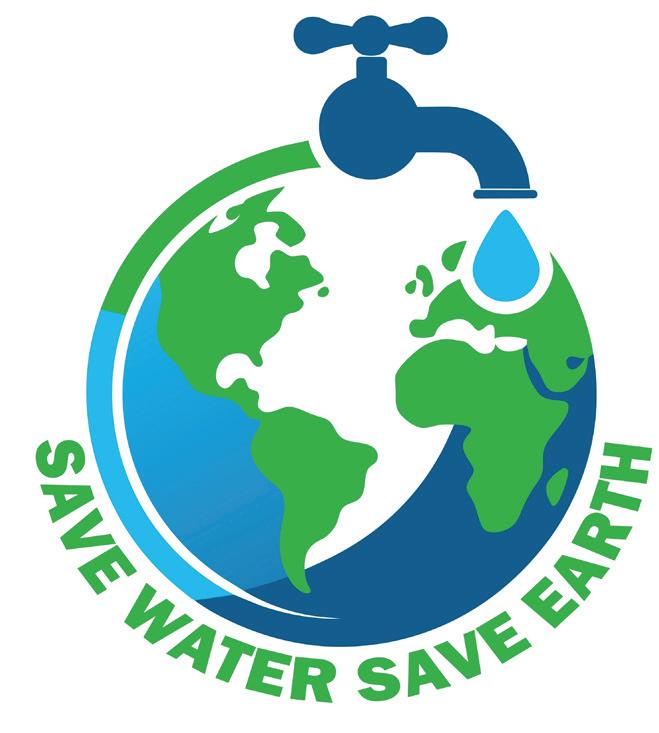




and Minerals


Label the different layers of the earth in the image given below. Get Set
We can find rocks everywhere on the Earth. Many of the materials used in construction come from rocks.
Rocks consist of minerals, which are naturally occurring substances within the Earth. The minerals present in rocks differ, giving rocks distinct characteristics in terms of size, shape, composition and formation. In this chapter, we will learn about the different types of rocks based on how they are formed.
Different types of rocks are formed by different methods. Some rocks are formed due to natural agents, like wind and water, while others are formed from older rocks. Some rocks are even formed due to the cooling of hot lava. Depending on the method of their formation, rocks are grouped into three types:
1. Igneous rocks
2. Sedimentary rocks
3. Metamorphic rocks
Let us learn about each of them in detail.
The word ‘igneous’ means ‘fire.’ Igneous rocks are formed by the cooling of hot molten rock called magma, which lies deep below the Earth’s surface. When a volcano erupts, the hot magma rises and flows onto the Earth’s surface. At this point, it is known as lava. When the lava cools and hardens, it turns into solid rock, which is called igneous rock. Some examples of igneous rocks include granite, pumice and obsidian.
Granite is a hard and tough rock that forms when magma slowly cools down below the Earth’s surface. Its colour ranges from grey to pink, depending on the quantity of feldspar minerals present in it. Granite is hard and tough, so it is widely used for constructing buildings, flooring tiles and countertops.
Pumice is a lightweight igneous rock that can float on water. It is formed from frothy lava that cools down quickly. When the lava cools, the gases that are trapped in the froth create small bubbles, making the rock porous. Pumice is commonly used as a scrubber to remove dead skin from feet, for creating decorative landscapes, and as a building material.
feldspar: a type of mineral froth: bubbles formed in a liquid porous: materials containing pores



Obsidian is a smooth and shiny igneous rock formed by the rapid cooling of lava, which prevents the formation of crystal structures. It is usually black or dark in colour, although it can also appear in other colours, such as brown, green or even translucent variations. When obsidian is broken, it forms sharp edges, making it useful for making cutting tools. Its shiny texture also makes obsidian suitable for crafting jewellery and ornaments.

We know that certain physical factors, such as wind, water and temperature change, causing rocks on mountains to break down into smaller pieces. These smaller pieces are called sediments. Sediments are carried by rivers and deposited in layers at different locations. Due to repeated deposition, the lower layers of sediments get compacted and cemented over time, hardening into sedimentary rocks. Sandstone, conglomerate, limestone and shale are some examples of sedimentary rocks. Let us learn about each of them.
Sandstone is a sedimentary rock composed of sand-sized particles that are firmly cemented together. It often contains a significant quantity of quartz, which contributes to its durability. Many of India's historical buildings, such as the Red Fort and Qutub Minar, are made of sandstone, showing its use in architecture.
Conglomerate is a rough and durable sedimentary rock formed when gravel, stones and pebbles are cemented together by sand and minerals. This process results in an uneven texture due to the different sizes and shapes of the embedded particles. Conglomerate rocks typically exhibit different colours, such as grey, brown and orange. They are commonly used in construction and can also be polished for use in jewellery.
durable: strong and long-lasting


Limestone is a sedimentary rock formed from the accumulation of shells, corals and the skeletal remains of tiny sea animals on the seabed. Over time, these materials become compacted and cemented together. Limestone is primarily composed of calcite, a mineral found in the shells of sea animals. It is commonly used in various applications, including the manufacturing of paints, whitewash and cement.
Shale is a soft sedimentary rock formed by the layering of mud and clay minerals. This rock is found in different shades of grey and sometimes in black, red, green and brown colours. This rock breaks into layers very easily. Shale is used to make cement, tiles and bricks.
Would our lives get affected if there were no rocks on the Earth? Why or why not? Discuss with your classmates.


Chalk is made of limestone. It becomes colourful when different colours are added to it.
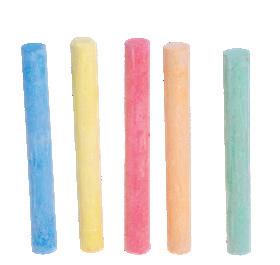
Colourful chalks
The word ‘morph’ means ‘to change form’. When igneous, sedimentary or older metamorphic rocks are subjected to the heat and pressure of the Earth, these rocks undergo some physical and chemical changes. This results in the formation of metamorphic rocks. Let us learn about some metamorphic rocks.
Slate is formed from shale, a type of sedimentary rock. It is dark grey in colour. Like shale, slate also splits into flat layers. Slate is used to make bricks, cement, blackboards and slates.
Gneiss is formed from granite, a type of igneous rock. Due to the presence of different types of minerals in it, gneiss looks striped. It is used as building material.
accumulation: to collect or gather split: to divide into parts



Marble is a hard rock formed from limestone, a sedimentary rock. It is usually white in colour. It can be polished and cut to make buildings and statues. Marble is also used for flooring and ornamental purposes.

Can you think of a monument that is made up of marble?
Quartzite is a hard and weather-resistant rock made of sandstone, a sedimentary rock. Quartzite is generally found in white or grey colours. But it is also available in shades of red, pink, yellow and orange. Quartzite is used in ceramic and glass industries. It is also used to make jewellery and ornaments.


Find pictures of different monuments that are made up of different types of rocks. Paste them in your scrapbook and mention the names of the rocks used. Make your scrapbook look attractive. Show it to your friends.
Fill in the blanks.
1. Igneous rocks are formed by the cooling of hot molten rock called .
2. is a lightweight igneous rock that can float on water due to its porous nature.
3. Sedimentary rocks are formed from the compaction and cementing of over time.
4. is a type of metamorphic rock that is commonly used to make blackboards and slates.
5. is a durable sedimentary rock often used in the construction of historical buildings like the Red Fort.
Rocks are made up of chemical substances called minerals. Minerals are formed as a result of the natural processes occurring inside the Earth. These can be simple or complex.
Minerals are inorganic in nature. This means that they are not of plant or animal origin. Iron, calcium and potassium are important minerals for all living beings.
Minerals from which valuable metals can be extracted are referred to as metallic minerals, or ores. Examples of such metals include aluminium, iron, copper, gold, and silver. Aluminium, iron, and copper are commonly utilised in construction, the production of electrical appliances, utensils, coins, and train coaches. Precious and expensive metals like gold, silver, and platinum are primarily used to create jewellery.

Minerals that do not contain metals are known as non-metallic minerals. Examples include calcite, mica, and quartz. Coal and petroleum are significant non-metallic minerals derived from rocks deep within the Earth’s surface. These fossil fuels are formed from the remains of ancient plants and animals that have been buried over time.
Magnet
Substances that generally attract iron are called magnets. These can also attract things made up of cobalt and nickel. Magnets are either natural or man-made. Magnetite is the best example of natural magnet. Man-made magnets are generally made of iron, nickel and cobalt. These magnets come in various shapes and sizes. In all magnets, one end is called the North Pole (N) and the other is called the South Pole (S). Like or same poles of a magnet repel each other, while unlike or different poles attract each other.

Aim: To check that magnets attract iron objects.
Materials Needed: A magnet of any shape, some iron nails and a white sheet of paper.
Method: Spread the iron nails on a white sheet of paper and move the magnet over it. Here, we are using a horse shoe-shaped magnet.
Findings: Iron nails stick to the poles of the magnet.
Conclusion: All magnets attract iron objects.


Minerals have great importance in our daily lives. Some of these are mentioned below:
1. Gypsum and calcite are used in making building materials, such as concrete and mortar.
2. Minerals, like diamond, emerald and ruby, are rare and expensive and are called gemstones. Such minerals are found in the form of crystals.

3. We obtain some useful metals, like iron and copper, from some minerals. Such minerals are called ores. The metals obtained from these ores are used in making electrical wires, utensils, coins and train coaches.
4. Nitrates and sulphates are used as fertilisers, which help the plants to grow better.
5. We need iron, calcium and sodium for healthy functioning of our bodies. We use rock salt in our food.
Give one example of each.
1. Mineral used to make concrete.
2. Mineral used to make electrical wires.
3. Mineral used to make building materials.
4. Mineral used to make ornaments.
5. Mineral that is important for healthy body functioning.
Precious gemstones
Not all minerals are ores. Minerals that usually consist of a high concentration of metals are called ores. Error Alert!
Fossil fuels are the remains of dead plants and animals buried deep under the Earth’s surface millions of years ago. They are mostly found in sedimentary rocks because these rocks form at temperatures and pressures that do not destroy fossil remains. Coal and petroleum are non-metallic minerals obtained from rocks present inside the Earth.
Coal is a black-coloured fossil fuel formed from dead plants buried with great pressure under the Earth’s surface millions of years ago. It is a solid fuel and extracted from the
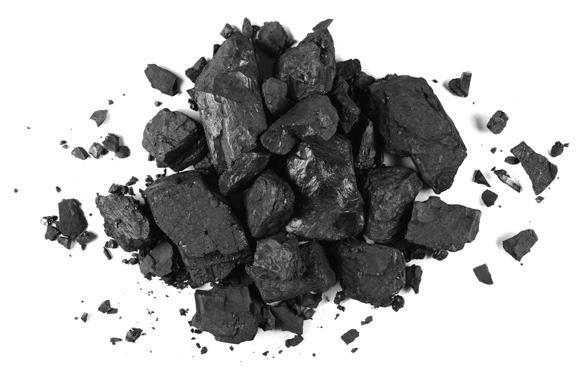
ground. The process used to extract coal is called coal mining. Coal is used to produce electricity, running steam engines, cooking and heating.
Petroleum was formed from the remains of sea plants and animals that perished millions of years ago. These organic remains settled on the ocean floor, where they were gradually covered by layers of sediment. Over time, these remains underwent transformation and became a dark liquid trapped in the pores of rocks, resulting in the formation of crude oil called petroleum. Various products, including LPG, petrol, diesel, kerosene, and lubricating oil, are derived from petroleum. These products, such as diesel, are commonly used as fuels for vehicles and are also utilised in the production of paints and varnishes.





Fossil fuels were formed millions of years ago and are not a renewable resource; they will eventually be depleted. Once the reserves of fossil fuels are exhausted, they will no longer be accessible to us. Additionally, the combustion of fossil fuels contributes to pollution. Therefore, it is essential to conserve fossil fuels and explore alternative energy sources such as solar energy, hydropower and wind energy. These alternatives are continuously available and do not contribute to pollution.
The Taj Mahal is a World Heritage Site located in Agra, Uttar Pradesh, India. It is made of white marble, which is a metamorphic rock. This marble is popular for its luminescent white colour.

lava: molten rock that flows onto the Earth’s surface due to volcanic eruption magma: molten rock found below the Earth’s surface sediments: smaller pieces of rocks formed by the breakdown of mountains magnets: substances that attract iron ores: minerals from which metals are extracted
extract: to take something out
crude: anything that is present in its natural form luminescent: (here) seemingly glowing


Scan the QR code to learn more about rocks.
• The outer surface of the Earth is made up of rocks.
• Rocks are of three types: igneous sedimentary, and metamorphic rocks.
• Rocks are made up of chemical substances called minerals.
• Coal and petroleum are fossil fuels that are obtained from rocks present inside the earth.
1. Tick ( ) the correct option.
A. The hot molten rocks that lie deep below the Earth’s surface are called Lava Crater Magma Minerals
B. Metamorphic rocks are formed due to
Chemical changes
Physical changes
Heat and pressure deep inside the Earth
Flowing of lava on the earth’s surface
C. Which of these are used to make a magnet?
Iron and nickel Gold and iron
Gypsum and mica Cobalt and silver
D. A type of white rock that is made of calcite is called Marble Sandstone Limestone Chalk
2. Fill in the blanks.
A. rocks are formed by the cooling of magma.
B. Gneiss is an example of rock.
C. Limestone and shale are examples of rocks.
D. Calcite and quartz are examples of minerals.
3. Write True or False.
A. The colour of a rock depends on the quantity of minerals present in it.
B. Obsidian and graphite are examples of igneous rocks.
C. Pumice is a heavy rock that sinks very easily in the water.
D. Minerals, like diamond and ruby, are called gemstones.
4. Match the following.
A. Granite i. fossil fuel
B. Sandstone ii. igneous rock
C. Slate iii. metallic mineral
D. Coal iv. sedimentary rock
E. Bauxite v. metamorphic rock
F. Quartz vi. non-metallic mineral
5. Short-answer questions.
A. How many types of rocks are there? Name them with an example of each.
B. How is shale different from slate?
C. How are metallic minerals different from non-metallic minerals?
D. Mention some uses of petroleum.
6. Long-answer questions.
A. What are minerals? Mention two uses of metallic minerals.
B. How are sedimentary rocks formed? Mention the characteristics of any two sedimentary rocks.
C. How is coal formed? Mention its uses.

D. Why are fossil fuels considered non-renewable resources? Discuss the importance of finding alternative energy sources.


7. Picture-based questions.
A. What type of rock is shown in the given pictures?
Picture A:
Picture B:
B. How are the rocks shown in the above images different from each other?

C. Mention one use of each rock that you have mentioned above.


If you have a pumice, granite and marble, which one do you think will not sink when put in a bucket full of water and why?
Ajay visited the Taj Mahal with his family. He noticed that people were littering around the entrance to the monument. People had also scratched their names on the gateway wall. He felt bad that people were disrespecting a historical monument in this way as it reflected poorly on India. So, he resolved to talk about preserving India's historical monuments to his class after his holidays. What measures would you implement to help preserve them?
Objective: Students will create a model of the layers of the atmosphere to understand their structure, composition and significance.
Materials Needed: Chart paper, colours, scissors, glue or tape, markers, cotton balls, images of aeroplanes, satellites, meteors, etc. (can be cut from magazines or printed), and rulers
Step 1: Learn About the Layers of the Atmosphere
Study the five main layers of the atmosphere: Troposphere, Stratosphere, Mesosphere, Thermosphere and Exosphere. Use school textbooks or supervised online resources to learn key characteristics, such as the temperature, altitude and what can be found in each layer.
Step 2: Make a Base Model
Layers of atmosphere
Take a large sheet of chart paper. Use a ruler to measure and divide the chart paper into five horizontal sections, representing each layer of the atmosphere. Colour each section differently to distinguish between the layers (e.g., blue for the Troposphere, yellow for the Stratosphere, etc.) and label them.
Step 3: Design Your Atmosphere Model
Draw or cut out pictures of objects and phenomena that fit into each layer (like clouds, aeroplanes, meteors, satellites and the International Space Station). Use cotton balls to create clouds for the Troposphere and paste the pictures and cotton balls in the appropriate layers on your model.
Step 4: Present Your Atmosphere Model
Share your model with the class and explain the characteristics of each layer, the objects found there and their importance. Discuss how each layer plays a role in protecting the Earth and supporting life.
Project Output: You have created a layered model of the atmosphere, demonstrating its structure and function. Present your model to the class.
Final Outcome: This hands-on project will help you understand the layers of the atmosphere and their importance to life on Earth.
To be read aloud and explained in the mother tongue by the teacher, as needed.


Read the article. Answer the questions given below.
In a small town near the Vindhya Mountains, students went on a field trip to learn about different types of rocks. Their teacher showed them granite, explaining, “This is an igneous rock, formed when lava cools and hardens. It is strong and used in buildings.”
By the riverbank, they found sandstone, a sedimentary rock made from layers of sand and clay pressed together over time. The teacher added, “Sandstone was used to build many forts and palaces in Rajasthan.”
Later, in a park, they saw a white marble fountain. “This fountain is made of marble, a metamorphic rock. It started as sandstone, but deep in the Earth, heat and pressure turned it into marble,” the teacher explained.
The trip helped students understand how different rocks form and how they are used in everyday life.
1. Which type of rock is formed from molten lava that cools and hardens?
A. Sandstone B. Marble C. Granite
2. Which of the following best describes how sedimentary rocks are formed?
A. They form from cooled molten lava that turns into solid rock.
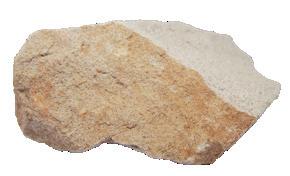

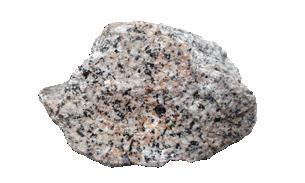
B. They form from tiny pieces of sand, mud, and pebbles that get pressed together over time.
C. They form from rocks that change due to heat and pressure deep inside the Earth.
3. Why do you think heat and pressure deep inside the Earth can change sandstone into marble? Does it also affect other types of rocks in the same way? Explain your reasoning in three sentences.
4. If you were asked to build a monument, which type of rock—granite, sandstone or marble—would you choose and why? Consider the properties of each rock and how they are used in construction.
To be read aloud and explained in the mother tongue by the teacher, as needed.
Name of the Student:
Time: 1 Hour
Total Marks: 40
1 Tick () the correct answer. (1 × 5 marks)
A What is the primary purpose of petals in a flower?
a Protect the flower
c Attract insects
B How can we reduce land pollution?
a By throwing garbage everywhere
b By burning plastic waste
c By recycling and reusing materials
d By cutting down trees
b Store food
d Disperse seeds
C Which layer of the atmosphere contributes to the changes in the weather we experience?
a Stratosphere
c Troposphere
b Mesosphere
d Exosphere
D Which of these are used to make a magnet?
a Iron and nickel
c Gypsum and mica
b Gold and iron
d Cobalt and silver
E Which of these is NOT an example of a habitat?
a Desert
c Nest
b Ocean
d Forest
2 Fill in the blanks. (1 × 5 marks)
seed coat Igneous global warming sedimentation gills
A The increase in the Earth’s temperature due to greenhouse gases is called .
B In the method, heavy impurities settle at the bottom of the water.

C rocks are formed by the cooling of magma.
D The external covering of a seed is called the .
E enable animals to breathe underwater.
3 Write ONE word for the following.
A The process by which a seed grows into a new plant.
B Minerals from which metals are extracted.
C Respiratory organs in insects.
D A liquid that can dissolve another substance.
E A small rigid plate that grows out of the skin of a fish.
(1 × 5 marks)
4 Write True or False. (1 × 5 marks)
A Insects are the main agents of pollination.
B Noise pollution can cause stress and hearing loss.
C Gases like carbon dioxide and methane are called greenhouse gases.
D Weather changes happen because of the presence of water vapours.
E Pumice is a heavy rock that sinks easily in the water.
5 Picture-based questions. (1 + 2 + 1 marks)
A What process is being performed by the bee in this picture?
B Describe the steps in this process.
C What is the result of this process?
6 Answer the following questions in short. (2 × 4 marks)
A Why do farmers use fertilisers?
B Why do animals like turtles and snails have shells?
C What are soluble and insoluble impurities? Give one example of each.
D What are parasites? Give one example.
7 Answer the following questions in detail.
A How is coal formed? Mention its uses.
(4 × 2 marks)
B How is noise pollution caused? What will happen if we are exposed to loud noises for a longer time period?




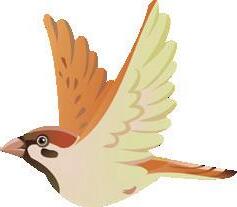

Location and Climate
Vegetation and Wildlife
Industries, Resources and Transport
Lifestyle


Read the poem given below. It is about a beautiful country, the Democratic Republic of the Congo.
In Congo’s heart, the rivers flow, Through forests deep where wild things grow. With mountain peaks that kiss the sky, And vibrant sunsets waving goodbye. From Kinshasa’s streets to jungle’s call, The spirit of Congo unites us all.
A land of beauty, rich and wide, Here culture and nature, side by side.

Flag of Democratic Republic of the Congo
The Democratic Republic of the Congo (DRC) is located in central Africa. The Equator passes through the northern part of the country. It is the second largest country in Africa. The capital of the DRC is Kinshasa. Its neighbouring countries are the Central African Republic, South Sudan, Rwanda, Burundi, Uganda, Tanzania, Angola and Zambia.
The DRC was ruled by Belgium until 1960.
The Congo is the main river in the DRC. The Congo basin is huge and covers almost the entire country. The southern part of the DRC has plateaus. High mountains are present in the east.
Since the DRC is near the Equator, the climate is hot and humid all year round. The north of the DRC receives heavy rainfall in the afternoon almost every day. Due to this, it is one of the wettest regions in the world. The southern part of the DRC is drier and has less rainfall.
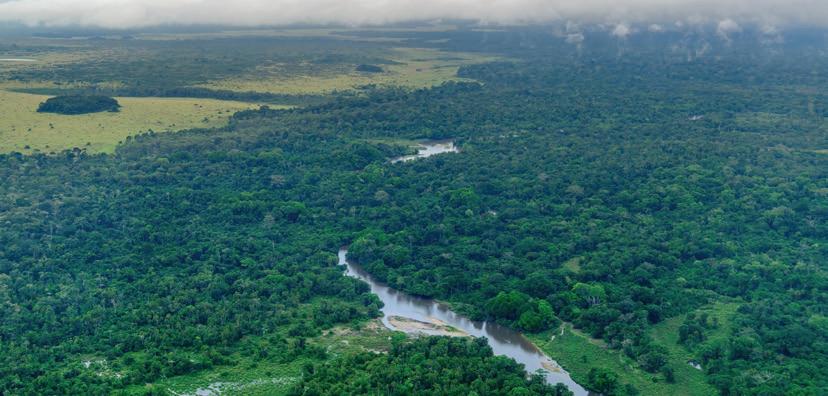
What are some ways in which the Congo River might be important to the people of the DRC? Discuss with your classmates.
Most of the DRC is covered in dense vegetation. The hot and humid climate is suitable for the growth of tropical rainforests. These are evergreen forests. The trees here are very tall and closely
The Congo rainforest is the second largest rainforest in the world. It is also called the ‘Lungs of Africa’.
basin: the area of land around a large river from which smaller rivers and streams run down to it


packed together. Their branches get tangled with each other and form a canopy of leaves at the top. This canopy prevents sunlight from reaching the ground.
Evergreen forests have trees that remain green throughout the year since they lose old leaves and grow new leaves continuously.
In the south, the climate is not as hot and wet as in the north. So instead of dense forests, there are grasslands like the savanna. The forests and savannas of the DRC are very rich in wildlife. Animals such as chimpanzees, baboons, elephants, buffaloes, rhinoceroses and hippopotamuses are commonly found in the forests. Lions, leopards, zebras, giraffes and wolves can be found in the savannas. Crocodiles are present in large numbers in the rivers. Many kinds of birds, insects and snakes can also be found in the forests.
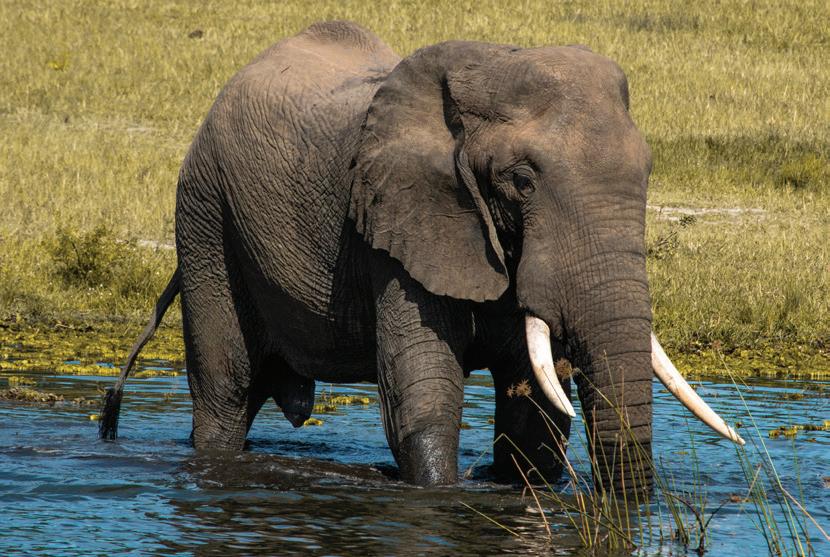

Find pictures of 2 plants and 5 animals found in the DRC, other than the ones shown in this chapter. Paste them in your scrapbook and write their names next to their pictures.
Write True or False.
1. The Congo is the longest river in Africa.
2. The equator passes through the DRC.
3. The DRC experiences heavy rainfall in the afternoon every day.
4. The DRC has deciduous forests.
canopy: the uppermost branches of the trees in a forest, forming a continuous layer of leaves

In the DRC, the main industries are mining and agriculture. The country is rich in minerals like cobalt, which is used in batteries, and diamonds, which are precious gems. The country also has gold, which is used for making jewellery, and electronics and coltan, which is used in phones and computers. These industries help support the DRC’s economy.
Agriculture is also important, with people growing crops like cassava, rice, maize, coffee, cocoa, rubber and cotton. Most of these are exported as well. Dams have been built on rivers in DRC, providing hydroelectricity.
Water transport is the major means of transport in the DRC. Railways and road networks connect different cities.
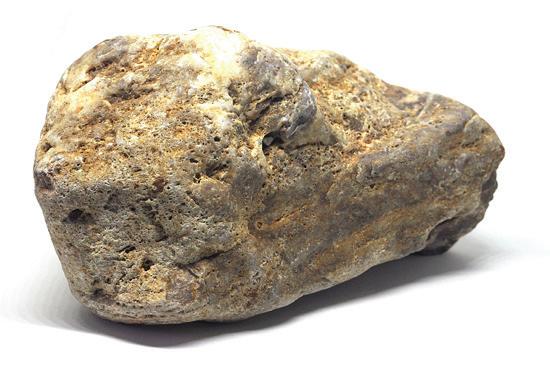

The DRC has a significant population, but much of it is rural, with many people living in villages. They live in huts which are built on raised platforms to protect them from the heavy rainfall. They grow crops like cassava and plantains.
The DRC is home to different tribes with unique customs and traditions. For example, the Bambuti people, also known as Pygmies, live in the rainforest and have a special bond with the forest. They are known for their small size and they use traditional hunting skills to find food. The Twa people also live in the forest and have similar customs.
The Babinga people live in the southern part of the country and are known for their colourful clothes and intricate beadwork.
People in the DRC often wear bright, patterned clothing made from local fabrics. Customs and festivals are an important part of life. For example, people celebrate with dances, music, and traditional ceremonies that have been passed down through generations. Life in the DRC is rich in culture and sense of community.




India has supported various UN peacekeeping missions in the DRC to maintain stability and support the local population. These initiatives reflect India’s commitment to international cooperation and its role in global affairs. A UN peacekeeper soldier
tropical rainforest: dense and warm rainforests with high rainfall usually found between 10° north and south of the equator
savanna: grassy plains in tropical and sub-tropical regions
tribes: a group of people who have the same language, customs and live in their separate society

Scan the QR code to learn more about the Congo River of the DRC.
• The Congo is the main river in the DRC.
• The DRC is rich in minerals like cobalt, used in batteries, and diamonds, which are precious gems.
• Lions, leopards, zebras, giraffes and wolves can be found in the savannas.
• People in the DRC often wear bright, patterned clothing made from local fabrics.
1. Tick ( ) the correct answer.
A. Which is the main river in the DRC?
a. Ganga
b. Congo
c. Nile
B. Which of the following tribes live in the rainforest of the DRC?
a. Bambuti
b. Banjaras
C. Which of these crops are grown in the DRC?
a. Wheat
2. Fill in the blanks.
b. Millets
c. Inuits
c. Rubber
Babinga Coltan Savanna Canopy
A. The tribe in the DRC is known for its beadwork.
B. The tall trees in the forests of the DRC form a which prevents sunlight from reaching the forest floor.
C. is used in phones and is found in the DRC.
D. In the south of the DRC, there are grasslands called the .
3. Write True or False.
A. The DRC has tropical rainforests.
B. The DRC is the second largest country of Africa.
C. Republic of the Congo is the capital of the DRC.
D. The southern part of the DRC has plateaus.
4. Match the following.
A. Savanna i. Batteries
B. Kinshasa ii. Giraffes
C. Cobalt iii. Gold
D. Jewellery iv. Capital of the DRC
5. Short answer questions.
A. Why does it rain every day in the DRC?
B. Name any three crops grown in the DRC.
C. Name any two neighbouring countries of the DRC.


6. Long answer questions.
A. What kind of lifestyle do the people of the DRC have?
B. Describe the wildlife of the DRC in the north.
C. What type of climate does the DRC have?
7. Picture-based questions.
Look at the given picture and answer the questions that follow.
CENTRAL AFRICAN REPUBLIC SOUTH SUDAN
CAMEROON
EQUATORIAL GUINEA
REPUBLIC OF THE CONGO
DEMOCRATIC REPUBLIC OF THE CONGO
ATLANTIC OCEAN
A. Which countries border the DRC in the north and in the west?
B. Which ocean is closest to the DRC?

Compare the climate of the Democratic Republic of Congo with the climate in your state. How are they similar or different? Write any 3 points.
The Congo Rainforest are called the ‘Lungs of Africa’. With the help of the internet, research on the Congo Rainforest. Then, write 5 points on how it helps the environment of the DRC and of Africa. You may make this as a poster. Share your findings with your class.


Chapter Overview

Greenland: The Land of Ice and Snow
Location and Climate Vegetation and Wildlife Occupations and Transport
Lifestyle

Get Set

Which of the following places will be the coldest? Put a tick (✓) against it.
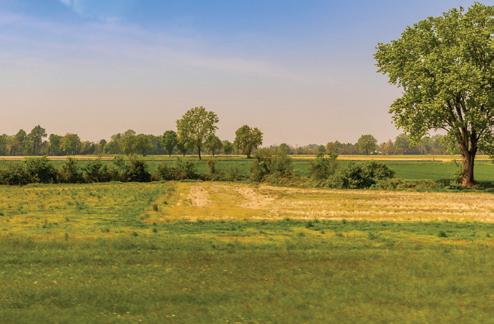
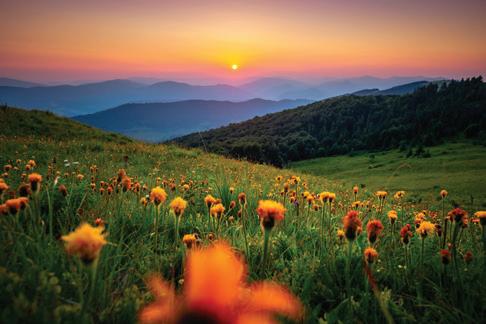
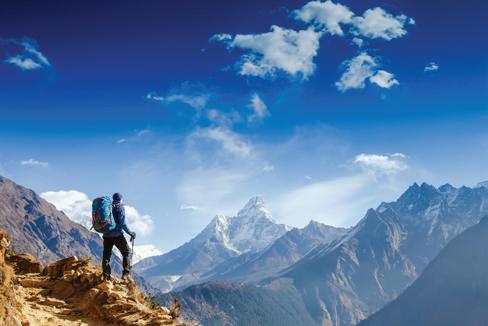
Greenland is located in the Atlantic Ocean, to the northeast of North America. It is a territory of Denmark. Its capital is Nuuk. Sisimiut is another important town.
The North Pole and the South Pole are located at 90-degree north and 90-degree south latitudes, respectively.

Greenland is the largest island in the world. The Arctic Circle passes through the southern part of Greenland. It lies in the frigid zone, which means it experiences very cold temperatures throughout the year.
The climate of Greenland is extremely cold, with long, icy winters and short, cool summers. Temperatures can drop below –30°C in winter and rise only slightly above the freezing point in summer. Most of this island is covered in ice.
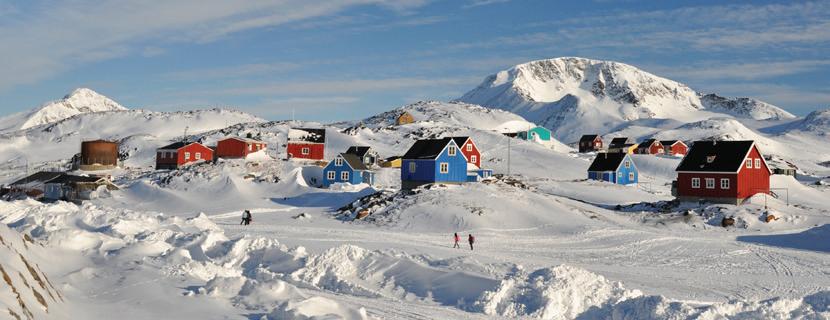
Upernavik
The southwestern part of Greenland is warmer, and hence, most people live in this part.
Most of the plants grow in the tundra region, towards the coast and away from the ice sheets in central and north Greenland. Low-growing plants like dwarf birch and whortleberry, as well as mosses and lichens, can be found in this region.
Animals, like the polar bear, reindeer, seal, wolf, arctic fox and musk ox, are found here. All these animals are able to withstand extreme cold.

Many kinds of fish and birds, like the white-tailed eagle, are also found here. Seals and walruses are some of the large marine animals found in this region. Many species of whales, such as fin, minke, humpback, narwhal, beluga (white whale) and blue whale are found in Greenland.
A walrus and her pup
lichens: a group of tiny plants that grow on rocks, walls and trees

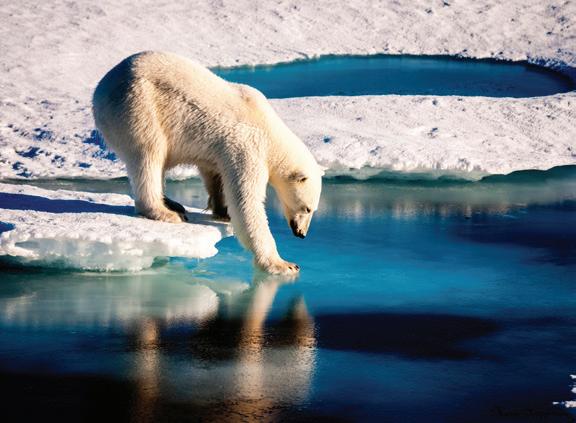
Animals are very important to people in the tundra region. Their meat, bones, skin and milk are used by the people for food, clothing and shelter.
Polar bears are the largest carnivorous land mammals on Earth. They are also very strong swimmers. They can swim continuously for many days.
Write True or False.
1. Greenland is very fertile with lots of vegetation.
2. The Antarctic region is situated between 66.5°S and 90°S.
3. Seals, whales and walruses are found in Greenland.
The most important occupations in Greenland are hunting and fishing. Sheep are also reared in small numbers in the southwestern part of the country. Vegetables, such as potatoes, are grown in the southwest part of Greenland. Since most of Greenland is always covered with ice, it is not possible to build roads and railways throughout the island. People travel by sledges, which are drawn by reindeers or dogs found there. A sledge is a vehicle that has blades instead of wheels and is used in places that are covered with snow. People also go out into the sea in small boats called kayaks and umiaks. Kayaks are narrow boats that can carry one or two people. Umiaks are larger open boats, made of animal skin stretched over a wooden frame and can carry ten or more people at a time.



carnivorous: an organism that eats flesh of other animals mammals: animals that give birth to babies instead of laying eggs and feed the babies milk from their own bodies


Most people in Greenland are Inuits who have lived there for thousands of years. The Inuit people are known for their special skills in surviving in freezing temperatures. Many people in Greenland live in small towns or villages along the coast. The houses are made of strong materials, like wood, stones, or even concrete, with thick walls, to keep out the cold. Central heating is also common in modern homes.
What are the different ways in which the lives of the people of Greenland are influenced by its environment?
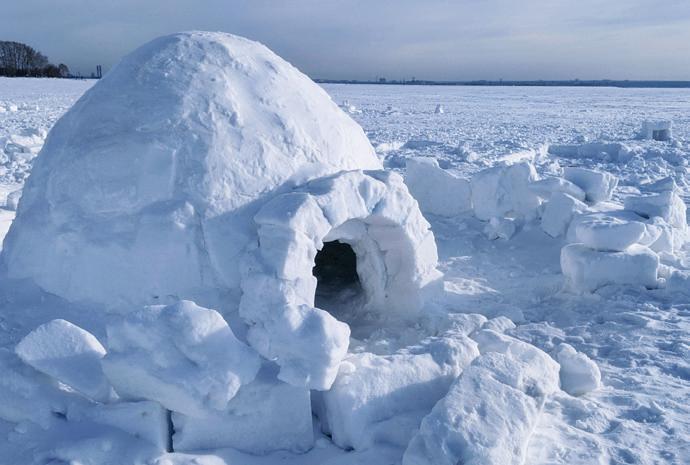
In the past, the Inuit people led a nomadic life, which means they did not settle at one place and kept moving from one place to another. They lived in igloos during the winter and in tent-houses made of leather during the summer. Igloos are dome-shaped houses made from blocks of snow. An
Make a chart about the Inuit people of Greenland. Paste pictures and write about their food habits, clothing, occupations, modes of transport and festivals. Give the chart a creative title.
People in Greenland eat food that comes from the sea, like fish, seals and whales. Earlier people used harpoons to hunt, but now they use guns. They also eat reindeer, birds and imported foods from other countries. Hunting and fishing are still important activities in their culture, helping them survive the cold environment.
People here mostly wear clothes made of animal skin and fur to keep themselves warm. A jacket with hoods and lined with animal fur is quite popular here. It is called parka. They wear long boots made of seal skin, which makes it easy to walk in snow and keep their feet warm.
Most people live in the southwestern part since it is less cold there. Modern facilities, like schools, hospitals, permanent homes, electricity, etc., are present in these areas.

harpoon: a spear-like instrument that is attached to a long rope and thrown by hand

The Siachen glacier is one of the longest glaciers outside the polar regions. It is located in Ladakh, India.

sledge: a vehicle without wheels that is used to travel in snow kayak: a small, narrow boat with a small opening at the top for a person to sit in umiak: an open boat made of animal skin stretched over a wooden frame igloo: a dome-shaped house made of snow parka: a jacket with a hood and lined with animal fur

Scan the QR code to learn more about life in Greenland.
• Greenland is the largest island in the world.
• The Arctic Circle passes through the southern part of Greenland.
• The most important occupations in Greenland are hunting and fishing.
• Since Greenland is mostly covered in ice, plants like mosses and lichens grow here.
1. Tick ( ) the correct answer.
A. In which region is Greenland located?
a. The Torrid
b. The Temperate c. The Polar
B. What are the native people of Greenland called?
a. Inuits
b. Babingas c. Bengalis

C. In the past, what did people use for hunting?
a. Hooks b. Harpoons c. Crossbows
2. Fill in the blanks.
Nuuk Sisimiut igloos Denmark
A. Greenland is a territory of .
B. is the capital of Greenland.
C. is an important town in Greenland.
D. Inuits live in in winters.
3. Write True or False.
A. Most of Greenland is permanently covered with ice.
B. Greenland has a large network of railways.
C. Lots of vegetation is found in Greenland.
D. Greenland is located in the Atlantic Ocean.
4. Match the following.
A. Umiak i. A jacket with hood, lined with animal fur
B. Sledge ii. A boat that can carry many people
C. Parka iii. A boat meant for one person
D. Kayak iv. A vehicle without wheels
5. Short answer questions.
A. What are some of the occupations of the people of Greenland?
B. Name any three species of whales found in Greenland.
6. Long answer questions.
A. How is the climate of The Democratic Republic of the Congo different from that of Greenland?
B. How does the location of Greenland influence the life of the people there? Mention any three points.
C. What kind of clothes do people wear in Greenland?
7. Picture-based questions.
Look at the given picture and answer the following questions.
A. What is the boat in the picture called?
B. Do you think roads and railways can be used in the place shown in the picture? Why or why not?


Imagine you had to live in Greenland for a month. Write about the following:
1. Two things you would eat.
2. Two things you would wear.
3. Two ways in which you will travel around.
4. Two things you will do there.

Houses are built depending on the weather and the climate of the area in which they are built. With the help of your parents or elders, understand how the houses in your region are designed to suit the climate there.



Cities and Some Places of Interest


We know that deserts have extreme climatic conditions. Name two plants that grow in deserts.
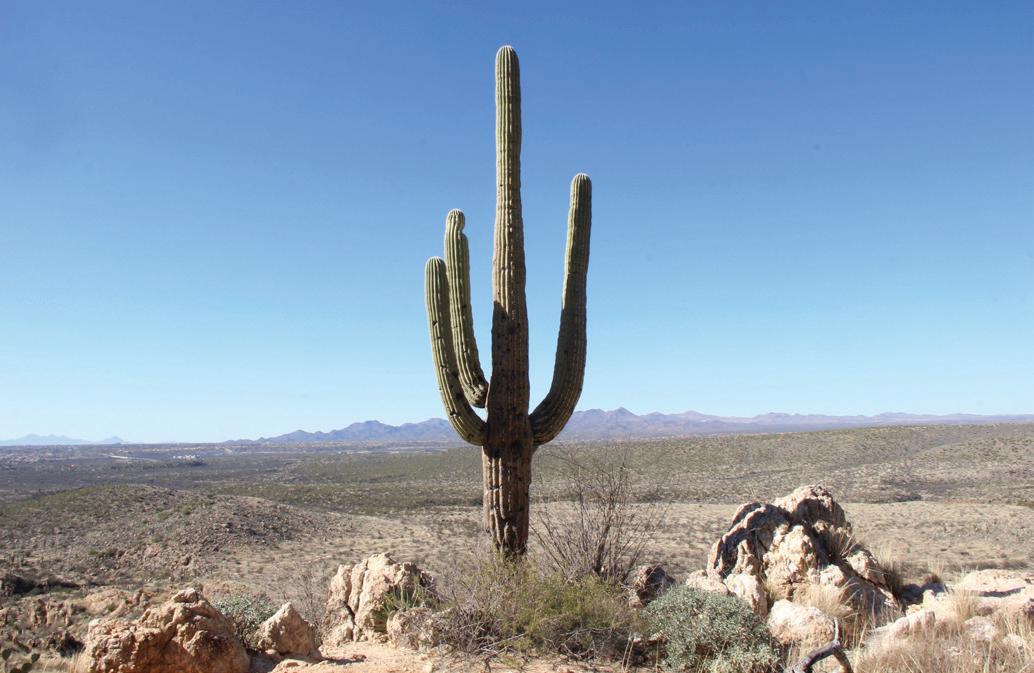
Saudi Arabia is a country in the western part of Asia. It is located in the Arabian Peninsula. A peninsula is a land which is surrounded by water on its three sides. Saudi Arabia has the Red Sea on the west and the Persian Gulf on the east. Riyadh is the capital of Saudi Arabia. Some of its neighbouring countries are Jordan and Iraq to the north; Kuwait to the northeast; Qatar and the United Arab Emirates to the east; and Oman and Yemen to the south. It is the largest country in West Asia.
Saudi Arabia has the world’s largest continuous stretch of desert land. Deserts and plateaus cover the central and eastern parts of the country. The desert region is covered with hills of sand called sand dunes. The western part of Saudi Arabia is mountainous. Saudi Arabia does not have any


lakes or perennial rivers. Streams called wadis are occasionally formed after rainfall, but they disappear quickly. Due to this, Saudi Arabia has very little freshwater. In some places in deserts, underground bodies of water rise to the surface. These are called oases.

Do you think wadis and oases are important for the animals which live in the desert? Discuss with your classmates.
The Tropic of Cancer passes through Saudi Arabia, dividing the country into two halves. During summers, it has extremely hot weather with temperatures above 50° C at times. In the desert, the temperature varies greatly from day to night as well. It is very hot during the day and cold at night. The climate throughout the year is extremely dry as Saudi Arabia receives very little rainfall.
The plants that grow here have adapted to the hot and dry climate. They mostly have very long roots that go deep into the earth in search of water. They have thick, fleshy stems which can store water. Many of them have spines instead of leaves in order to minimise water loss. Some of the plants that can be found here are cacti, thorny bushes and shrubs. Trees like date palms grow in and around the oases.

How does having spines instead of leaves help trees in minimising water loss?

Deserts have very harsh climatic conditions. All the animals that live in the desert have to adapt to conditions like the shortage of food and water, and extreme heat to survive. A wide variety of animals are found in Saudi Arabia.
Horses from Arabia are known all over the world for their speed. Other fast animals like gazelles, foxes and jackals can also be found in the Saudi Arabian desert. They can move across the desert very quickly in order to find food.
Small animals like scorpions and snakes burrow into the sand during the day to escape the extreme heat. They come out at night to hunt for food.
We have previously learnt that the camel is known as the ‘ship of the desert.’ Camels have special adaptations that enable them to survive in the desert. They can store water in their bodies for many days. The food that they eat is stored in their hump. This allows them to survive without food or water for many days. Camels also have thick eyelids and nostrils which prevent sand from entering them. They can eat the thorny vegetation that is found in the deserts since they have rough tongues. They have wide, padded feet that do not sink into the sand. So, they can travel across the desert easily.
Bustards, pigeons, and quails are some of the birds that can be found in the desert. They are usually found around the oases.
In the mountainous regions of Saudi Arabia, animals like ibex, wolves, hyenas and wild cats are found. The coastal areas of the country are rich in marine life. Sea birds like pelicans are found here.
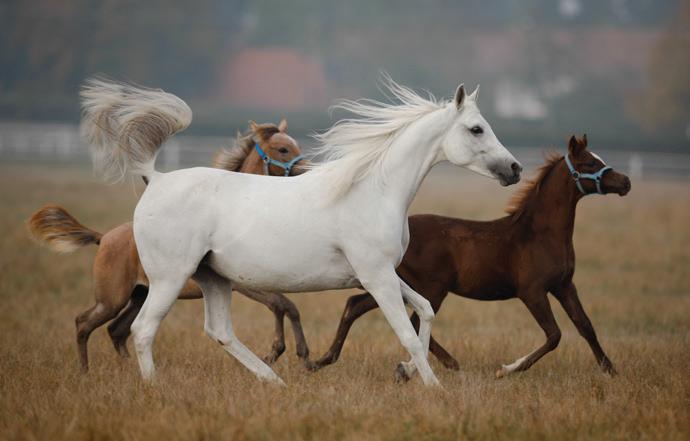


Write whether the following statements are true or false.
1. Riyadh is the capital of Saudi Arabia.
2. The Tropic of Capricorn passes through Saudi Arabia.
3. Arabian horses are called the ship of the desert.
adaptations: changes through which living beings become better suited to their environment

The discovery of oil in Saudi Arabia in 1937 transformed the country and the lifestyle of the people greatly. Saudi Arabia’s main industry is oil. Saudi Arabia is one of the largest producers of petroleum in the world. It exports petroleum to different countries all over the world.
Iron and steel, cement and construction are also important industries in the country. It is very difficult to carry out agricultural activities in Saudi Arabia due to the harsh environment. Only a small part of the country is suitable for growing crops. Crops such as wheat, rice and alfalfa are grown. The water required for irrigation is obtained through the desalination of seawater.
The export of petroleum has made Saudi Arabia a wealthy country. This has contributed to its rapid development. It has modern cities which have very good infrastructure. The standard of living of the people who live in the cities is very high. Saudi Arabia has a traditional society. Women generally wear abaya. Abaya is a robe worn over clothes which covers from head to toe. Men wear loose-fitting white robes called thobe. Their heads are covered with a chequered cloth called keffiyeh.
Saudi Arabia is a monarchy, which means it is ruled by a king. Arabic is the main language spoken by the people. How do you think the ruler in a monarchy is chosen?
One of the native Arab tribes in Saudi Arabia are the Bedouins. They are nomadic people. They travel on camels in groups known as caravans. They rear camels, goats, sheep and horses.
alfalfa: a kind of legume infrastructure: the systems and facilities available in a place robe: a long, flowing outer garment nomadic: living by travelling from place to place

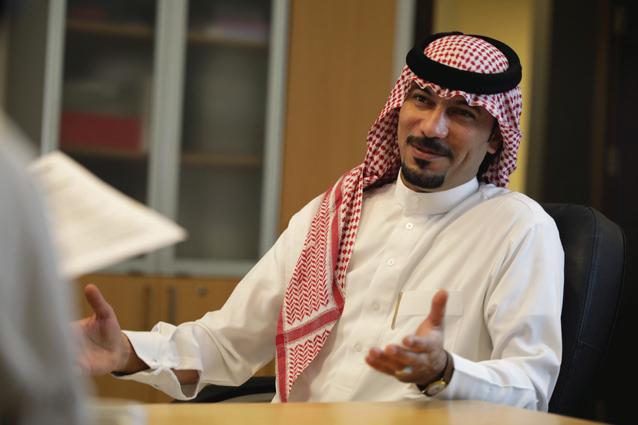

The animals are very important to the Bedouin. They provide them with milk, meat and animal hide. During summers, they camp in and around oases where their animals can graze. In winter, they travel along those desert routes where water can be found.

Make a chart about the Bedouin people. Paste pictures and write about their clothes, food habits and houses. Give a title to your chart and display it in the class.
The capital of Saudi Arabia is Riyadh. Most of the government ministries and public service headquarters are located here. It is full of skyscrapers, parks, hospitals, educational institutions and markets.
Jeddah is a port city. It is a very important centre of trade and manufacturing. It is also known as the commercial capital of Saudi Arabia.
Mecca is the most important site of pilgrimage for Muslims in the whole world. Medina is another city of great religious importance. Both these cities are located in Saudi Arabia.



The Thar Desert in India is home to many different species of birds and animals. It is the native place of the Great Indian Bustard, which is at a great risk of dying out. In 2013, the government of Rajasthan launched Project Great Indian Bustard for the conservation of this species.
animal hide: animal skin that can be used to make tents or clothes skyscrapers: a very tall building in a city


wadis: temporary streams formed after rainfall in the desert oases: underground bodies of water in deserts that rise to the surface desalination: a process through which salt is removed from seawater
monarchy: a type of government where the king is the ruler of the country
Bedouin: one of the native Arab tribes with a nomadic lifestyle caravan: a group of people travelling together in a desert

Scan the QR code to learn more about Saudi Arabia.
• A desert is a large area of land which receives very little rainfall and has little to no vegetation.
• Saudi Arabia has the world’s largest continuous stretch of desert land. The capital of Saudi Arabia is Riyadh.
• Saudi Arabia has extremely hot and dry weather conditions. It is hot during the day and cold during the night.
• Camels have special adaptations that enable them to survive in the desert.
• Saudi Arabia is one of the largest producers of petroleum in the world.
• Saudi Arabia is a monarchy.
1. Tick ( ) the correct answer:
A. What is the capital of Saudi Arabia?
a. Jeddah
b. Riyadh c. Medina
B. What kind of government is in Saudi Arabia?
a. Republic
b. Democracy c. Monarchy
C. Which animal is called the ship of the desert?
a. Camel
b. Ibex
c. Hyena
D. Which of the following is a neighbouring country of Saudi Arabia?
a. Afghanistan
2. Fill in the blanks.
b. Syria
c. Oman
Bedouin Jeddah oil date palms
A. Saudi Arabia is one of the largest producers of in the world.
B. are trees that grow in and around oases.
C. is known as the commercial capital of Saudi Arabia.
D. The are a nomadic Arab tribe in Saudi Arabia.
3. Write True or False.
A. Mecca is the most important pilgrimage site for Muslims.
B. The Bedouin people do not have permanent homes.
C. The main language spoken by the people of Saudi Arabia is Arabic.
D. Desert plants have big leaves from which a lot of water can evaporate.
4. Match the following.
A. Bedouin
B. Monarchy
C. Camel
D. Wadis
5. Short answer questions.
A. Where is Saudi Arabia located?
i. Temporary streams
ii. Nomadic herders
iii. Ruled by kings
iv. Ship of the Desert
B. What is the main industry in Saudi Arabia?
C. What is an oasis?
D. How is water obtained for irrigation in Saudi Arabia?
E. Name the types of clothes worn by the people in Saudi Arabia.

6. Long answer questions.
A. What are some of the adaptations that camels have that make them suited to the desert climate?
B. What is the lifestyle of the Bedouin people like?
7. Picture-based questions.

A. Which physical feature is seen in the above image?
B. How is this feature formed?
C. Name one tree that grows in and around this feature.

In what ways do you think the discovery of oil in Saudi Arabia played an important role in the growth of the country and the changing lifestyle of the people of Saudi Arabia?

Saudi Arabia is the world’s largest producer of petroleum. Petroleum is a fossil fuel, and the burning of fossil fuels is harmful to the environment. Make a poster to show why fossil fuels are harmful for the environment. Paste pictures and cutouts of newspaper headlines. Give the poster a title.

Chapter Overview

Prairies: Temperate Grasslands
Meaning and Types
Location and Climate
Vegetation and Wildlife Economy
Lifestyle and People

Get Set

Find and circle the given words in this word search puzzle.
1. OATS
2. BARLEY
3. WHEAT
4. MAIZE
All of these can be found in North American grasslands called Prairies. In this chapter, we will learn more about them.

Grasslands are vast areas of flat land where the main vegetation is different kinds of grasses. In some places, grasslands are located between forests and deserts. There are two kinds of grasslands: tropical and temperate. Tropical grasslands are located between 0 degree and 23.5 degree latitudes in both the Northern and Southern hemispheres.
Temperate grasslands are located between 23.5 degree and 66.5 degree latitudes in the Northern and Southern hemispheres. The climate is hot during summer and cold during winter.
Temperate grasslands are called by different names in different regions. They are called prairies in North America, pampas in South America, steppes in Europe and Asia, downs in Australia and velds in South Africa. Let us learn more about the prairies.
Grasslands are not just flat lands with grass. Grasslands can have rolling hills, and plants such as wildflowers and shrubs.
The prairies are in North America. They cover parts of Canada, the USA and Mexico. Like other temperate grasslands, the prairies experience hot weather during summer and cold weather during winter. There is moderate rainfall during the summer.

There are many different types of grasses and shrubs that grow in the prairies. The soil is very fertile due to the presence of humus, making it one of the largest farming areas in the world. The green grass turns brown in the autumn. There are not many trees, but a few can be found along the rivers.
Wildlife
Long ago, the prairies were grazing grounds for large herds of bison. However, due to the clearing of land for agriculture, there are fewer bison than before. Coyotes, prairie dogs, hawks and prairie chickens are commonly found in this region.
Make a poster on prairie wildlife. You may use the internet for your research. Find out how they are adapted to their environment and how they interact with other animals and plants.

Bison in the prairies
The prairies are also very important for migratory birds. Many migratory birds stop there for food and rest during their long journey between their summer and winter habitats.


Write whether the following statements are true or false.
1. The prairies are in South America.
2. The prairies are one of the largest farming areas in the world.
3. Large herds of bison used to graze on the prairies.
The main occupation in the prairies is farming. The land was converted into farmlands by the settlers who arrived from Europe. Wheat is the main crop that is grown there. Maize is also grown there apart from wheat. Other crops that are grown here include oats, rye, barley and beans. The prairies are known as the ‘wheat basket of the world’. The USA is one of the largest exporters of wheat.
In the western region of the prairies, cattle are reared on large farms called ranches for meat and dairy products.
The prairies are also rich in minerals. There are large deposits of coal, petroleum and natural gas. Other minerals like gold, silver and potash are also mined here.
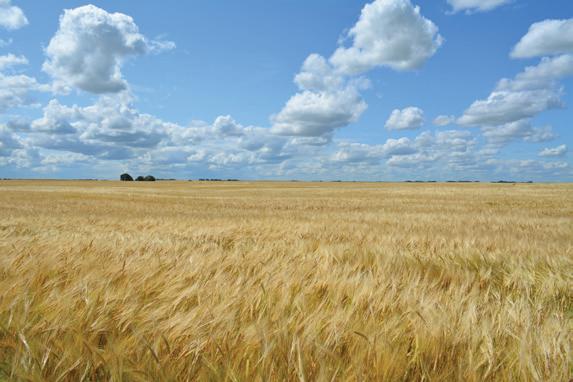
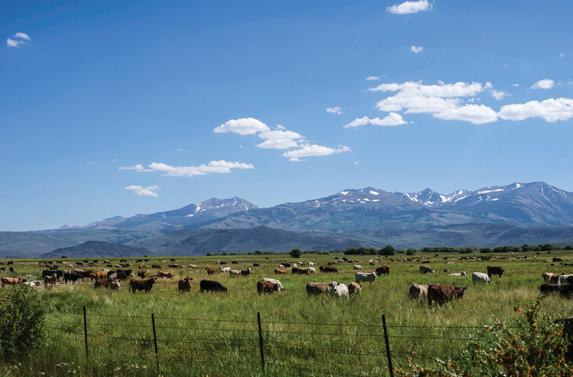
It is important to remember that the prairies are home to many different species of animals. Human activities should not be allowed to affect the animals or the environment of the prairies.
The prairies have large grasslands where many animals live. What do you think would happen if more and more land is used for farming and animals are not allowed to graze there?
The prairies are thinly populated. Farmers and their families, as well as workers, live on very large farms. Almost all farmwork, such as ploughing, sowing, threshing, harvesting and winnowing, is done by machines.
ploughing: turning the soil before sowing seeds threshing: thrashing the grain to separate the edible part from the inedible part winnowing: blowing air through the grain to remove the husk

The Gir Forest National Park in Gujarat contains tropical grasslands as well as dry deciduous forests. It is famous all over the world as the only natural habitat where Asiatic Lions still live in the wild.

grasslands: vast areas of flat land where the main vegetation is different kinds of grasses prairies: temperate grasslands in North America ranches: large farms where cattle are reared

Scan the QR code to learn more about the prairies.
• Grasslands are vast areas of flat land where the main vegetation is different kinds of grasses.
• The prairies are located in North America. It is one of the largest farming areas in the world today.
• Cattle are reared on large farms called ranches.
• The farms in the prairies are very large. Almost all farm work is done by machines.
1. Tick ( ) the correct answer.
A. What are the temperate grasslands in South Africa called?
a. Prairies
b. Velds
c. Steppes
B. What substance does the soil in the prairies contain that makes it fertile?
a. Humus
b. Sand
c. Clay

C. What is the main crop cultivated in the prairies?
a. Maize b. Barley c. Wheat
D. Which type of grasslands are located between 0 degree and 23.5 degree?
a. Tropical b. Temperate c. Polar
2. Fill in the blanks.
grass ranches wheat basket bison
A. Cattle are reared on large farms called .
B. The prairies used to be the grazing grounds for large herds of .
C. The main vegetation on the prairies is .
D. The prairies are called the of the world as a large amount of wheat is cultivated here.
3. Write True or False.
A. The temperate grasslands in Australia are called downs.
B. Rice is the main crop cultivated on the prairies.
C. Mining is the main occupation on the prairies.
D. Almost all farm work on the farms of the prairies is done by machines.
4. Match the following.
A. South America i. Pampas
B. Eurasia ii. Downs
C. Australia iii. Velds
D. South Africa iv. Steppes
5. Short answer questions.
A. What are temperate grasslands?
B. What are ranches?
C. Name 2 minerals that are found in the prairies.
6. Long answer questions.
A. What are the 2 types of grasslands and where are they found?
B. Explain the climate of the prairies.
C. Why do you think the prairies are thinly populated? Give two reasons.

7. Picture-based questions.
Look at the picture and answer the following questions.
A. Identify the animal in the picture.
B. Where is this animal found?
C. Name any two other animals found in this region.

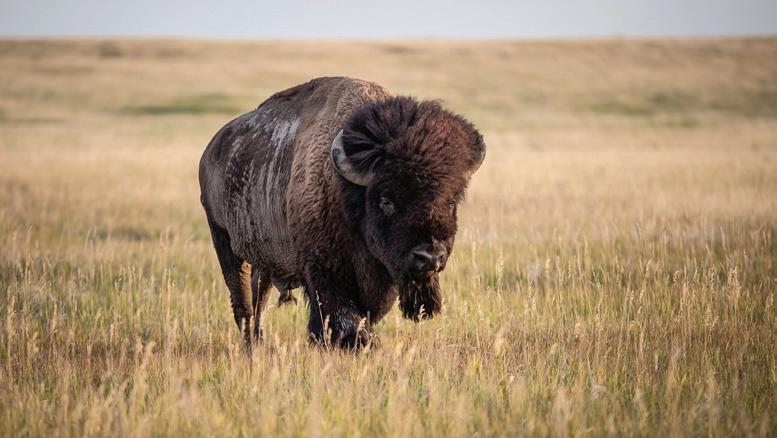
Why do you think machines are needed in to do different kinds of farm work on the prairies? Give two reasons.
The prairies are known for their wide-open spaces, where there is plenty of sunlight and wind. These natural resources can be used to generate clean energy, like wind energy and solar energy. Work with a friend and find out three ways in which farms and homes on the prairies can produce their own energy. You can take help of your elders, books from the library or the internet. Share your findings with the class.

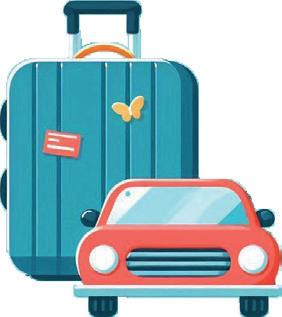






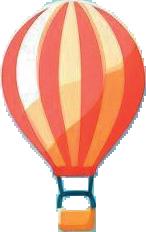





Steam Engine and Modern Means of Transport Land Transport Airways
Waterways

Traffic and Pollution


Imagine that you need to visit your friends in your city, in another city and in another country. Draw pictures of the different types of transport you will use to visit each.
In your city
In another city In another country
Salina lived in New Delhi with her parents. One day, they had to travel to Bengaluru for a wedding. Salina and her parents first travelled to the airport using the metro rail. Then, they travelled in an aeroplane to reach Bengaluru. Salina was amazed by how she reached the other side of the country in just a few hours.
Travelling long distances in earlier times was difficult and took a lot of time. People usually walked from one place to another and used animals to carry their goods.

Transport refers to the ways people or goods move from one place to another. Bicycles, scooters, cars, rickshaws, buses, ships, trains and aeroplanes are different means of transport. Choosing any means of transport depends on the distance to be travelled, the money to be spent and the time available.


A postal stamp in memory of James Watt
After the invention of the wheel, the most important invention was the steam engine. The first steam engine was built by Thomas Newcomen in 1712. In 1765, James Watt improved the design. A steam engine is a type of heat engine used to perform mechanical work using steam. Earlier steam engines were built to run railway engines and trains. After some time, ships were made that used steam engines. Now, steam engines have been replaced by engines that use diesel and electricity. This has helped trains to run faster and carry more goods and passengers.
Earlier, people found it difficult to travel from one place to another. But today, modern means of transport have made it easier for people to reach distant places. The three modern means of transport are land transport, water transport and air transport.
With the help of the internet, do research and create a visual timeline showing the evolution of different modes of transportation—from ancient modes (walking, horse-drawn carts, etc.) to modern modes (cars, aeroplanes, electric scooters, etc.).
The movement of goods and passengers on land is known as land transport. This is the mode of transport we use most. People and goods can travel through roadways
diesel: a kind of fuel

and railways from one part of the country to another. Land transport is also cost-effective. Land transport can be divided into roadways and railways.
Vehicles such as cars, buses, tractors, etc., are driven on roads, which are built on the surface of the land. After independence, many efforts were made to develop the roadways. India has one of the largest road networks in the world. Many countries have networks of wide, paved roads called highways. Highways connect different cities within a country. They are long, mostly straight roads which do not have sharp curves, turns and roundabouts. This enables people to drive on these roads at speed for long distances. They can reach places faster. In India, national highways, state highways, district roads and village roads have been built to make transportation easier.
A part of India’s highway network is called the Golden Quadrilateral network. It consists of highways that connect four important cities of India—Delhi, Mumbai, Chennai, and Kolkata.
Trains are an important means of transport in many countries. They can transport people and goods over long distances. Railway tracks are built and connected to each other to form a railway network. In India, the first train journey took place between Mumbai and Thane in 1853. Today, India has thousands of trains. The introduction of superfast trains has made movement faster and cheaper than before.
The Gatimaan Express and the Vande Bharat Express are the two of the superfast trains in India.
Metros are trains that run within cities. They run on tracks that are built either underground or on bridges in the city. Metro rail networks were developed to improve the public transportation
NH 44 is the longest national highway of India. It runs from Sri Nagar to Kanyakumari, covering 4112 km.


cost-effective: of good value as per the amount of money spent network: a system of intersecting roads or railway tracks
system in urban areas. They help people move from one place to another without worrying about the traffic. The first city in India to have the metro rail was Kolkata. Now, many cities such as Delhi NCR, Mumbai, Chennai and Bengaluru also have metro rail networks.
What are the benefits of using local transport while travelling within the city? Discuss two reasons with your friend.
The Kanyakumari–Dibrugarh Vivek Superfast Express is a special train that travels all the way from Dibrugarh in Assam to Kanyakumari in Tamil Nadu. It is the longest train route in India, taking about 74 hours 35 minutes to cover 4218.6 km.
Since the early days, waterways have been used for transportation. The movement of goods and passengers on water is known as water transport. It is the cheapest means of transport. Heavy goods are carried over long distances on boats and ships. Local water transport such as ferries are used to carry people and goods across rivers and lakes. Water transport can be divided into two types—inland water transport and shipping.
Inland waterways consist of rivers, canals and backwaters. Inland waterways in India have been used for transportation since ancient times.
India has a very long coastline. It has thirteen important ports. Ships are used to transport goods from one port to the other. Goods are also exported and imported to India on ships. This is known as overseas shipping.


backwaters: part of a river or sea where the water remains still


Name the following.
1. He built the first steam engine in 1712.
2. The network of wide, paved roads in many countries.
3. Local water transport which carries people and goods across rivers and lakes.
Air transport is the fastest mode of transport. It enables the movement of goods and people over long distances by means of helicopters and aeroplanes. It is also the most expensive means of transport due to the high cost of fuel. Aeroplanes take off from airports. Most big cities have airports. Airways can be used to travel to the most distant and remote areas especially where there are no roadways or railways. During natural disasters like floods and landslides, airways can be used for rescuing people and distributing food, water and medicines. There are many popular airlines in India such as Air India, Indigo, Spice Jet, Go Air, etc. They run many domestic and international flights.

Why do you think airways are particularly helpful during natural disasters like floods and landslides?

Transport is essential for human survival as it saves time and energy while moving from one place to another. At the same time, the vehicles we use can also harm the environment. Vehicles emit harmful gases which pollute the air. These gases damage the environment and contribute to global warming. To prevent this, electric buses, trains, and cars have been introduced. The number of vehicles in each household is increasing and our roads cannot carry so many vehicles. This leads to major traffic
issues, especially in big cities. One way to prevent this is to improve public transport. Good quality public transport will ensure that fewer people will use their private vehicles. Spreading greater awareness about using public transport and carpools can help save the environment.

The world’s highest motorable road is called Umling La. It is located in Ladakh. It is at a height of 19,024 feet.

transport: the ways in which people, animals or goods move from one place to another steam engine: a type of heat engine used to perform mechanical work using steam highways: long roads that connect different cities in a country superfast trains: a passenger train that travels very fast overseas shipping: import and export of goods through ships global warming: increase in the temperature of the earth’s surface due to gases such as carbon dioxide

Scan the QR code to learn more about means of transport.
• The three modes of transport are land transport, water transport and air transport.
• National highways, state highways, district roads and village roads are a part of our road network.
• Water transport can be divided into two groups—inland water transport and shipping.
• Airways are the fastest mode of travel and are also used during natural calamities to rescue people.
• Vehicles cause air and noise pollution.
• An important way to reduce traffic congestion and pollution is to develop the public transport system.

1. Tick ( ) the correct answer.
A. Which of these is the cheapest means of transport?
a. Train
b. Aeroplane c. Ship
B. Which of these is the fastest mode of transport?
a. Ship
b. Train c. Aeroplane
C. Which is the best mode of transport for sending relief supplies to areas affected by natural disasters?
a. Train
b. Bus c. Helicopter
D. Where was the first metro rail built?
a. Delhi
b. Mumbai c. Kolkata
2. Fill in the blanks. railways aeroplane wheel James Watt
A. The discovery of the made travelling easier.
B. improved the design of the steam engine in 1765.
C. transport many people and goods across long distances on land.
D. An is the fastest means of transport.
3. Write True or False.
A. Inland waterways have been used in India since ancient times.
B. Transporting goods by train is cheaper than ships.
C. The metro rail is the fastest train in India.
D. Steam engines have been replaced by engines that use diesel and electricity.
4. Match the following.
A. Important public transport i. Ship
B. Means of transport in water ii. Aeroplane
C. Fastest means of transport iii. Vande Bharat
D. Superfast train iv. Metro rail

5. Short answer questions.
A. What are the three modes of transport?
B. Why is road transport considered to be the most convenient?
C. When and where was the first railway line built in India?
D. What is overseas shipping?
6. Long answer questions.
A. What are two advantages of air transport over the other means of transport?
B. What are the two types of waterways? How are they different?
C. How do you think metro rails have helped reduce pollution in big cities like Delhi and Kolkata? Give two reasons.
7. Picture-based questions.
Look at the picture and answer the following questions.
A. What do you observe in the image?
B. How does this impact people’s health?
C. What steps should be taken to protect the environment? Give any two.

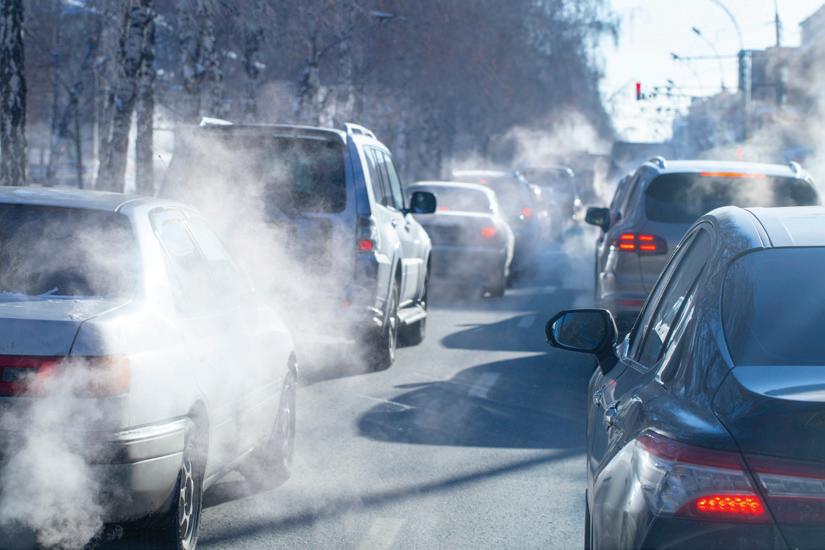
1. Why do you think waterways are still a preferred means of transport for goods in some parts of the world despite the advancements in land and air transport? Write any two points.
2. Highways are generally long, straight roads which do not have sharp curves, turns and roundabouts. Why do you think highways are built this way? Explain in two points.
Transportation is one of the biggest contributors to pollution due to the smoke from cars, planes and other vehicles. Make a poster to spread awareness about pollution from vehicles and to encourage the use of public transport as a means to control pollution. Give your poster a title. Display it in your class.






We all use communication in our daily lives. Here are some fun riddles about communication. See if you can crack them!
1. I can carry a message across the world, from the comfort of your home. With just a few clicks, you can send letters, pictures and more. What am I?
2. I’m a box that speaks without a mouth and listens without ears. I can share news and music with people far and near. What am I?
3. I orbit around the Earth and help you see sports and news from distant lands. Without me, long-distance signals would be a challenge. What am I?
Communication is the way people share ideas, thoughts, feelings or information. This can occur through various methods, such as telephone calls, face-to-face conversations, text messages or television. Communication can be spoken, such as in a conversation, or written, such as in an email or letter.
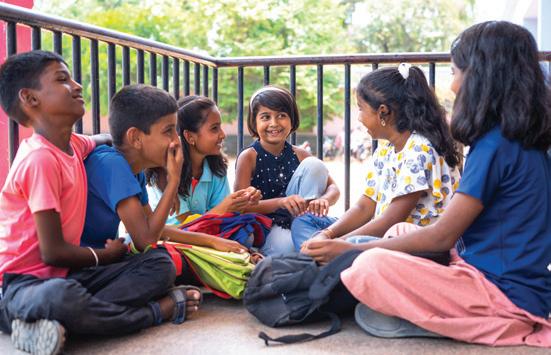
All living beings communicate with each other, even without language. For example, a dog barks at strangers, a baby cries when it needs something, and so on. In ancient times, people communicated using gestures and signs. As they grew smarter, they created languages. In the past, messages were sent over long distances using pigeons and horses. This process became easier with the introduction of postal services.
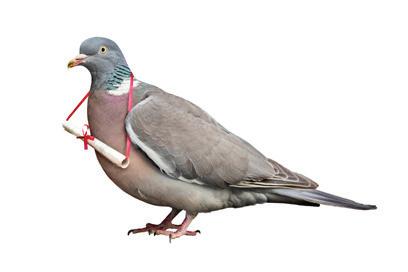
Pigeon carrying a message
We frequently communicate with our family and friends through various methods. In the nineteenth and twentieth centuries, more reliable and faster means of communication were developed. Let’s explore the different methods of personal communication.
Letters are sent through the postal system . India Post is the largest postal network in the world with 154,965 post offices. We can send letters, parcels, postcards and money orders by post. Additionally, post offices provide a service called Speed Post , which ensures the fast delivery of letters or parcels to any city in India. Private companies also provide courier services.

Telephones that are used at home and at work are a convenient and fast way to communicate. Alexander Graham Bell invented the telephone in 1876. STD (Subscriber Trunk Dialing), lets us call people in other cities in India, and ISD (International Subscriber Dialing) lets us call people in other countries.

gestures: body signals reliable: dependable

Faxing is used to send pictures or written messages instantly. It sends documents over the telephone, and the fax machine prints a copy of the document. The machine is connected to the phone line.

Today, email, or electronic mail, is a fast and convenient way to send messages instantly. To send or receive emails, you need an email account. Emails are sent through computers or laptops connected to the internet. With advancements in technology, you can now also send emails using smartphones or tablets with internet access.
The first email was sent by Ray Tomlinson in 1971, and it was a test message.
When we send a text message or an email, it does not go directly to the receiver. It goes through a network of satellites and servers that eventually deliver the message to the receiver. Error Alert!
Cell phones and smartphones have made communication even easier as they can be taken anywhere. Smartphones allow us to share pictures and music files, make phone calls and send and receive emails. We can also send text messages using SMS (Short Messaging Service) on our mobile phones.
Sunita lives in Faridabad, while her cousins live in Pune. Once a week, she talks to them on a video call. Video calls enable people to see each other while talking. One popular and free service for video chatting is Skype.

Create a chart with four sections, each representing a different communication method. Add pictures for each type and write one sentence on the impact they have.
enable: allow or activate
Choose the correct answer.
1. In ancient times, people used pigeons/postcards to communicate over long distances.
2. Bharat/India Post is the name of India’s postal system.
3. Telephones/Smartphones let us send pictures and make voice calls.
Mass communication involves sharing information with many people at the same time. For example, magazines, books and newspapers convey ideas to a wide audience simultaneously. The invention of cinema, television and radio has transformed mass communication. Let us learn more about some methods of mass communication.
Johannes Gutenberg from Germany invented the printing press. The first printed newspaper was released in Germany around 1605. Magazines and newspapers provide information and news about developments around the world. Today, e-newspapers, or digital versions of newspapers are available and can be read on tablets, laptops and smartphones.
Radio was invented by the Italian scientist, Guglielmo Marconi. Jagadish Chandra Bose demonstrated that radio signals could be transmitted over long distances without
simultaneously: at the same time demonstrated: shown or proven transmitted: sent or conveyed




wires. Radio stations broadcast educational programs, news and entertainment from around the world. It is the cheapest means of communication that reaches even remote areas.
Television was invented by the Scottish inventor John Logie Baird in 1926. It is more popular than radio because it lets viewers see the various programs instead of just hearing them. Television channels broadcast news, and show entertainment and educational programs. They also provide live coverage of cultural events and sports.

Today, the internet keeps us informed about events happening around the world. It is a powerful and efficient means of mass communication. It provides a vast amount of information on any topic. For these reasons, it is often referred to as the Information Superhighway.
We have all seen films. Did you know that films are also a means of communication? The first film was shown in 1895. It did not have any dialogues. Talking films were introduced about 25 years later. Today, cinema is a major form of entertainment and also spreads social messages. Documentary films provide detailed information and are used for educational purposes.
Social networking is a modern way to communicate over the internet. It allows individuals to connect with friends and family through services, such as Facebook, Instagram and WhatsApp. Users can send videos, pictures and messages to their contacts. Anyone who is 18 years and above can join these platforms. Social networking is also valuable for accessing and sharing information during emergencies and disasters. Social media must be used with caution and care. A lot of unlawful activities happen on social media. We must stay safe from such activities.
efficient: productive with optimal use of resources disasters: terrible events causing great damage


Sending television and radio signals to far off places was difficult due to the curved surface of the Earth and buildings, which can interfere with signals. This issue was solved with satellite communication. Satellites are electronic devices launched into space by rockets, where they orbit around the Earth. Signals are sent from the Earth to the satellites, which then send them back to cover a larger area. Due to satellites, we can watch football and cricket matches from different countries. Satellites also help transmit computer and telephone signals to and from other countries.
ISRO has significantly advanced satellite communications in India through its INSAT and GSAT series. These satellites have enhanced telecommunication, broadcasting and internet services, boosted connectivity and enabled remote education, telemedicine and efficient disaster management.


postal system: the network of post offices for sending and receiving letters, parcels, etc.
India post: India’s national postal service
speed post: express mail service
STD: used for calling people in other cities within India
ISD: used for international phone calls
SMS: text message sent using mobile phones
information superhighway: vast and fast information network
documentary films: films meant to educate or spread awareness

Scan the QR code to learn more about means of communication.

• Communication is the way people exchange ideas and information through talking, texting or watching television.
• Mass communication spreads information to large audiences through various methods, including newspapers, radio, television and the internet.
• Cinema and social networking have changed how we share news and connect with people worldwide.
1. Tick ( ) the correct answer.
A. Which of these was a means of communication used in earlier times?
a. Carrier Pigeons
b. Postal System
B. What is the internet also known as?
a. Educational Path
c. Information Superhighway
C. Satellites are launched into the space using
a. Rockets
b. Airplanes
D. Radio was invented by the Italian scientist
a. Galileo
b. Graham Bell
c. Radio
b. Knowledge Network
c. Satellite launcher
c. Marconi
2. Fill in the blanks. telephone mass communication documentary communication
A. The way people share ideas, thoughts and feelings is called .
B. Graham Bell invented the in 1876.
C. Sharing information with many people at the same time is called .
D. The type of film that provides detailed information for educational purposes is called a .
3. Write True or False.
A. A newspaper is a form of social networking.
B. Johannes Gutenberg from Germany invented printing.
C. STD is used to call people in other countries.
D. Skype helps to send and receive text messages.
4. Match the following.
A. John Logie Baird i. Printing
B. Guglielmo Marconi ii. Radio
C. Johannes Gutenberg iii. Television
D. STD iv. Other Indian cities
5. Short answer questions.
A. What is meant by mass communication?
B. What is a fax machine? Why is it used?
C. What is Speed Post?
D. What is a documentary film?
6. Long answer questions.
A. What is satellite communication? What are its advantages?
B. How has the invention of the internet transformed communication?
7. Picture-based questions.
Look at the pictures and answer the following questions.


A. Which of the two will deliver the news faster?
B. Which of the two needs a satellite to work?

Name a situation where the written form of communication, like a letter or an email, would be more suitable than a verbal or face-to-face form of communication, like phone calls or Skype. Justify your answer.



With your parents, visit the post office nearest to where you live. Talk to a postal worker in the post office. Ask them about the different stages in the journey of a letter. Ask them how technology has helped the postal system.
Write an email to your friend, telling them about your favourite film. You can add a description of the film, telling him/her about what all you liked about the movie, like the story, the conclusion, your favourite scene, etc.
Objective: Students will create a visual timeline to explore the evolution of communication methods over the last 25 years in India.
Materials Needed: A chart paper for the timeline; printed or hand-drawn images of various communication methods; markers, coloured pencils, glue and scissors
Step 1: Research Phase
Do a research about the different methods of communication used in the last 25 years in India and what impact they had on the lives of people. You can use the internet or speak to your elders. Some of the examples are radio, letters, fax, social media, emails etc.
Step 2: Create the Timeline
Draw a large timeline for the last 25 years on the chart paper. Mark the years clearly on the timeline.
Step 3: Describe the Evolution
On the timeline, paste the images of modes of communication in the chronological order. Write their names too. Alongside the images, write short descriptions explaining the importance of each communication method and how it affected society. You can also write about the advantages and disadvantages of each method.
Project Output: Now you have your own timeline for the evolution of modes of communication. Present it to the class. Share some interesting insights.
Learning Outcome: This hands-on project will help you understand the progress of communication methods in India, and their significance in shaping our lives.
To be read aloud and explained in the mother tongue by the teacher, as needed.

Read this article. Answer the questions given below.
The world was glued to their television screens as the Olympic Games in Paris was broadcast live to millions of homes across the globe.

Thanks to satellite communication, people from different countries can watch in real time any event that happens in any corner of the world. Viewers in India, the United States, Japan, and even remote regions enjoy the coverage of sports such as swimming, gymnastics and athletics. This incredible broadcast is made possible through satellites that orbit the Earth. These satellites send signals to television stations and devices, allowing for live coverage within seconds. The use of satellite technology has made the world smaller by connecting people through shared events like the Olympics. Before satellites, it would have been impossible to watch events happening far away in real-time.
1. What makes it possible for people around the world to watch the Olympic Games live?
a. Telephone lines
c. Postal service
2. What is not true for satellite communication?
a. It is the fastest mode of communication.
b. It allows for live coverage of events.
c. It can be used for global broadcasts.
d. It reduces the number of TV channels.
b. Satellite communication
d. Newspapers
3. Name three modes of communication where satellites play an important role.
4. Inventions are happening every day. What do you think can be the future of satellite communication? Explain your viewpoint in a few lines.
To be read aloud and explained in the mother tongue by the teacher, as needed.
Name of the Student:
Time: 1 Hour
Total Marks: 40
1 Tick () the correct answer. (1 × 5 marks)
A What are the native people of Greenland called?
a Babingas
c Bedouins
b Inuits
d Bambutis
B Which of these is the fastest mode of transport?
a Trains
c Cars
b Ships
d Aeroplanes
C Which of these is the main river in the Democratic Republic of Congo?
a Nile
c Mississippi
b Ganga
d Congo
D Which of these is the capital of Saudi Arabia?
a Riyadh
c Jeddah
E What is the Internet also known as?
a Knowledge Network
c Information Superhighway
b Abu Dhabi
d Medina
b Discovery Road
d Educational Path
2 Fill in the blanks. (1 × 5 marks)
James Watt Savanna bison telephone Denmark
A In the south of the DRC, there are grasslands called the .
B The prairies used to be grazing grounds for large herds of .
C improved the design of the steam engine in 1765.
D Greenland is a territory of .
E Graham Bell invented the in 1876.

3 Write ONE word for the following.
A A small, narrow boat with a small opening at the top for a person to sit in.
B A process through which salt is removed from seawater.
C Long roads that connect different cities in a country.
D A native Arab tribe with a nomadic lifestyle.
E Large farms where cattle are reared.
(1 × 5 marks)
4 Write True or False. (1 × 5 marks)
A Transporting goods by train is cheaper than doing it by ships.
B Mecca is the most important pilgrimage site for Muslims.
C Mining is the main occupation in the prairies.
D STD is used to call people in other states.
E The DRC is the second largest country in Africa.
5 Picture-based questions. (1 + 1 + 2 marks)
A What do you observe in this image?
B How does this impact people’s health?
C What steps should be taken to protect the environment? Give any two.

6 Answer the following questions in short. (2 × 4 marks)
A What is Speed Post?
B What are temperate grasslands?
C What are some of the occupations of the people living in Greenland?
D What is overseas shipping?
7 Answer the following questions in detail. (4 × 2 marks)
A How is the climate of the Democratic Republic of Congo different from that of Greenland?
B What are some of the adaptations that camels have that make them suited to the desert climate?
In 2024, India took part in many sports events and had amazing performances, winning several important competitions around the world. Let’s take a look at some of India’s achievements in sports this year!

India won six medals at the 2024 Olympics, including one silver and five bronze medals. This event was held in Paris, France from 26 July 2024 to 11 August 2024. A total of 117 athletes represented India in 16 sports. India won medals in shooting, athletics, hockey and wrestling.

India won the ninth edition of the ICC Men’s T20 World Cup. They beat South Africa in the finals. This event was held in the United States of America and the West Indies from 1 to 29 June. This is India’s second T20 World Cup title.
India won 29 medals at the 2024 Paralympics, including seven gold, nine silver and thirteen bronze medals. This event was held in Paris, France from 28 August 2024 to 8 September 2024. This is India’s best performance in the history of the Paralympic games. India won medals in shooting, athletics, badminton, archery and judo.
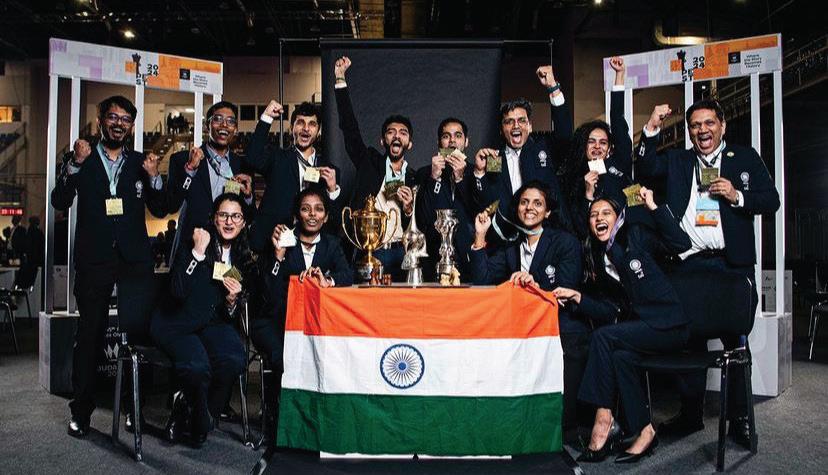
India won in both the open and women’s categories at the 45th FIDE Chess Olympiad. This event was held in Budapest, Hungary from 10 to 23 September 2024. This is India’s first-ever win in the Chess Olympiad in both the categories. India is the third country to win in both categories in the same year.
Teamwork in sports has played a key role in helping India win many competitions. When team members work together, they support each other, learn from each other and make the team stronger.


Scan this QR code to see the quiz.
1 Write down the dates and the places where these events took place in 2024.
a Olympics
b Paralympics
c ICC Men’s T20 World Cup
d FIDE Chess Olympiad
2 Fill in the blanks.
a India won medals at the 2024 Olympics.
b athletes represented India at the 2024 Olympics.
c India won medals including gold, silver and 13 bronze at the 2024 Paralympics.
d India won the 2024 ICC Men’s T20 World Cup by beating in the finals.
e India won in both and categories at the 2024 FIDE Chess Olympiad.
f India is the country to win in both the open and women’s categories at the FIDE Chess Olympiad in the same year.
3 HOTS Tick ( ) the sports in which India won medals at the 2024 Olympics.
a Wrestling b Archery c Shooting d Hockey e Athletics f Swimming

An inventor is someone who thinks of a new idea and then makes something useful from that idea. Let us learn about some of the great inventors and their inventions.




Johannes Gutenberg is known for building the first mechanical printing press in the mid-1400s. His printing process was one of the greatest inventions. One of the known books he printed was the Gutenberg Bible.
Thomas Savery, an English engineer, built the first steam engine in the 1690s. He patented a steam pump in the year 1698. The steam engine uses steam to make machines work and powers things like trains and factories.
Samuel Morse was an American inventor. He developed an electric telegraph between 1832-1835. His invention allowed people to send messages over long distances using electric signals.
Guglielmo Marconi invented the radio in 1896. He developed a wireless communication system that sent radio signals over long distances, which led to the development of advanced radio technology. He received the Nobel Prize for Physics in 1909.

The Wright brothers, Orville and Wilbur Wright, invented the first airplane, that a pilot could control in 1903. The first airplane flew at Kitty Hawk, North Carolina for 12 seconds and covered a distance of 36 metres.


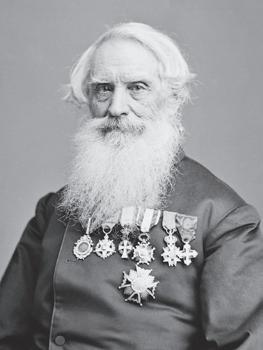

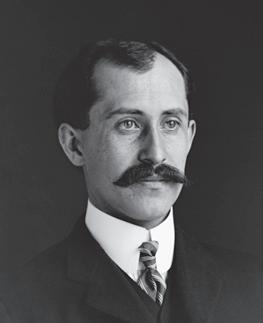

Use the internet to find the inventors of any three modern devices that you use in your daily life.


Scan this QR code to see the quiz.
1 Match the following inventions and the years of the inventions.
a First mechanical printing press 1832–1835
b Steam pump 1903
c Electric telegraph Mid-1400s
d The radio 1698
e The first airplane 1896
2 Fill in the blanks.
a One of the famous books that Johannes Gutenberg printed was the .
b The steam engine uses steam to make work and things like trains and factories.
c Guglielmo Marconi developed a that sent radio signals over long distances.
d The first airplane flew for and covered a distance of
e The electric telegraph allowed people to send messages over long distances using .
3
Who am I? Write the names of the inventors.
a I built the first steam engine.
b I built the first mechanical printing press.
c We invented the first airplane.
d I invented the radio.
e I developed an electric telegraph.
In India, many old cities have been renamed, but the vibrant lives of these cities remain the same. Let’s learn about them.
City: Prayagraj
Old name: Allahabad

Prayagraj in Uttar
Pradesh is a city of religious importance. The city is the meeting point of three rivers— the Ganga, Yamuna and the mythical Saraswati. The city’s name officially became Prayagraj on 16 October, 2018.
City: Kolkata
Old name: Calcutta

Kolkata is the capital city of West Bengal. It has a rich heritage of literature, art, music and theatre. It is famous for the the Howrah Bridge and the Victoria Memorial. The city’s name officially became Kolkata in January 2001, to match its Bengali pronunciation.

City: Kochi
Old name: Cochin

Kochi is a major port city of Kerala. It is known as the Spice Capital of the World. The city was renamed Kochi in 1996, to bring the name closer to its original Malayalam name. Kochi means a small lagoon.
City: Gurugram
Old name: Gurgaon

Gurugram in Haryana is one of India’s information technology and banking hubs. It is often called the Millennium City of India. The city’s name officially became Gurugram on 27 September 2016 in honour of its mythological relation to Guru Dronacharya.
City: Mumbai
Old name: Bombay

Mumbai is the capital city of Maharashtra. It is also called the business capital of India. The city is known for landmarks like the Gateway of India and the Marine Drive.
The city’s name officially became Mumbai in 1995, in honour of the goddess of the region, Mumbadevi.
City: Chennai
Old name: Madras
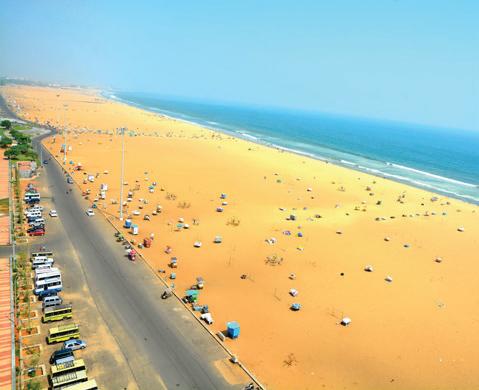
Chennai is the capital city of Tamil Nadu. It is known as the Detroit of India, as it is the hub of the automobile industry. Its
Marina Beach is the longest urban beach in India. The city’s name officially became Chennai on 17 July, 1996.
There are many other cities in India whose names have been changed. Use the internet to find out the names of any three such cities.




Scan this QR code to see the quiz.
1 What were the old names of the given cities?
a Kolkata
c Prayagraj
b Chennai
d Gurugram
e Kochi f Mumbai
2 Name the city.
a Detroit of India:
b Millennium City of India:
c Business capital of India:
d Spice capital of the world:
e A major port city in Kerala:
f The city where the three riversGanga, Yamuna and Saraswati meet:
3 In which cities are these landmarks located? Write the new city names.
a Marina Beach
b Howrah Bridge
4 Neharika wants to visit Mumbai. She asks you to suggest places she should visit. Name three places that you would suggest to her.




Each country of the world has a flag. The flag’s colour, shape and symbols usually represent the history, land, culture, uniqueness and goals of the country it belongs to.
The Indian flag is a tricolour flag, also called the Tiranga, with three horizontal bands of saffron, white and green, respectively. Each colour represents something about India—saffron symbolizes strength and courage, white symbolizes peace and truth, and green shows the fertility, growth and richness of the land. At the centre of the white band, there is a navy blue Ashoka Chakra with 24 spokes representing continuous movement and progress throughout the 24 hours of the day.
India
This is the oldest , continuously used national flag in the world! It’s believed that the flag itself fell from the sky in 1219. But its current design was adopted in 1625. The red background represents the battles that the Danish people fought and the white stripes represent their religious faith.
This is the only flag in the world that is not rectangular or square. Instead, it has two triangles. They represent the Himalayan Mountains and the two major religions of the country—Hinduism and Buddhism. The symbols of the sun and moon signify the hope that Nepal will stand as long as the sun and the moon are shining.
There are only two countries in the world that have square flags.
Flags of some countries are almost identical except for the differences in their sizes and colours.
The flags of some countries may look alike but the meaning of the symbols differ. Japan is known as the ‘Land of the Rising Sun’. The sun is represented by the red circle in the middle of the flag. This flag is commonly called the Hinomaru meaning ‘Ball of the Sun’.








Just like Japan, the flag of Bangladesh also has a bright red circle in the middle. It has two meanings: 1. The rising sun of a new country; 2. The blood of the people who fought for the country’s independence. The dark-green background of the flag represents the lush vegetation of the land of Bangladesh.

A country’s flag is an important national symbol. We should take pride in our country’s flag and respect it.







Scan this QR code to see the quiz.
1 Look at the flags and name the countries they belong to.
2 Name the countries that have flags with similarities.
a Both the flags have a square shape: and
b Both the flags have red and white horizontal bands in reverse: and
c Both the flags have a red circle in the middle, representing the sun: and
3 Read the features of the flags and name the countries they belong to.
a It has a white cross in the middle of a red square background.
b It has two triangles stacked on top of each other.
c It has a red circle on a dark-green background.
d This tricolour flag is also known as the Tiranga.
e It is popularly known as the Hinomaru.
f It is the oldest, continuously used national flag in the world.

The ocean is home to many plants and animals, but there is more! The world under the ocean is also full of wonderful sites.

Location: Northeast coast of Australia
Ocean: Pacific Ocean
This site has the world’s largest coral reef with around 400 types of coral and 1,500 species of fish. It is even visible from space. It was declared a World Heritage Site by UNESCO in 1981. Turtles, whales and clownfish are some of the sea animals found here.
Location: Close to the Mariana Islands
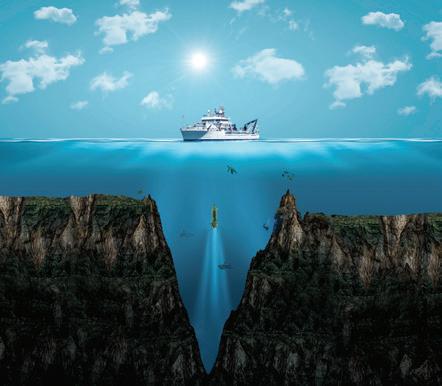
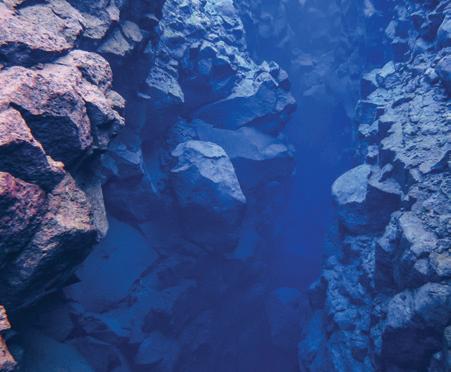


Ocean: Pacific Ocean
The Mariana Trench has the Challenger Deep, the deepest point on Earth. It is around 11 km deep, about 2,500 km long and 70 km wide. It is very dark and cold in the trench. The pressure is extremely high. However, we can still find some deep-sea animals, like snailfish, in the trench.
Location: From the south of the North Pole to Bouvet Island
Ocean: Atlantic Ocean
The Mid-Atlantic Ridge is an underwater mountain range discovered in the 1950s. It covers around 16,000 km. There are many active volcanoes beneath the ridge. A short stretch of the ridge above the surface also makes up islands like Iceland and the Azores.
Location: In the Yucatan Peninsula, Mexico
Ocean: Near the Caribbean Sea, Atlantic Ocean
It is the longest underwater cave system in the world. The length (as measured until 2024) is over 371 km. It has around 226 entrances, hidden chambers, crystal-clear waters and unique wildlife, like the blind cave fish, which are a treat for explorers.
Wonders of the ocean such as the Great Barrier Reef are being severely affected by global warming and pollution. We must work towards reducing global warming and oceanic pollution in order to keep our oceans beautiful and clean.


Scan this QR code to see the quiz.
1 In which oceans are these wonders located?
a Mariana Trench
b Mid-Atlantic Ridge
c Great Barrier Reef
d Sistema Sac Actun
2 Which country or island is closest to these underwater wonders?
a Great Barrier Reef
b Mariana Trench
c Sistema Sac Actun
3 Write the correct measure of the following with units.
a Length of Sistema Sac Actun:
b Length of the Mid-Atlantic Ridge:
c Depth of the Challenger Deep:
4
Which underwater wonder is it?
a It is the deepest point on Earth.
b It is an underwater mountain range in the Atlantic Ocean.
c It is the world’s longest underwater cave system.
d It is the world’s largest coral reef.
A stadium is a closed area that has rows of seats and is used for events like sports, concerts and exhibitions. Let us learn about some amazing sports stadiums around the world.
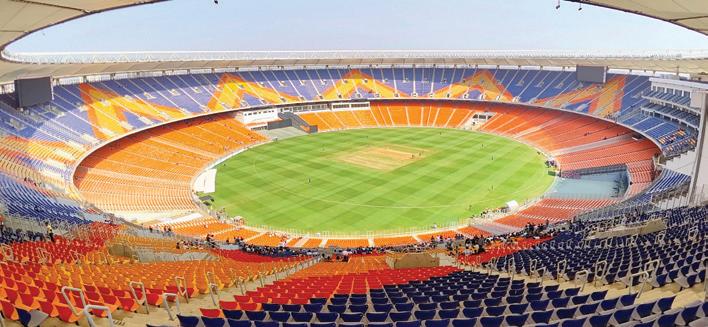
Narendra Modi Stadium in Gujarat, India, is the world’s largest stadium by area. It is built on 63 acres of land and has a capacity to host more than 1.3 lakh people. Inaugurated in February 2021, it is the biggest cricket venue ever built.
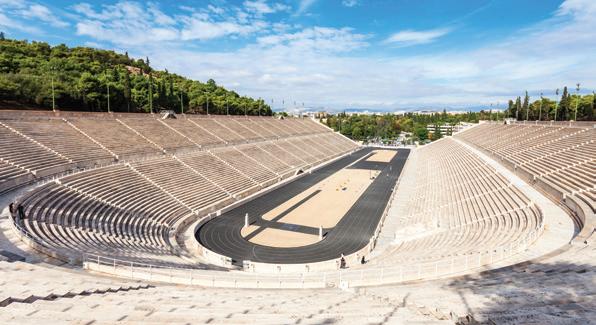
The Panathenaic Stadium is a historical stadium that hosted the first modern Olympic Games in 1896. It is located in Athens, Greece. It is the only stadium in the world made completely of marble.
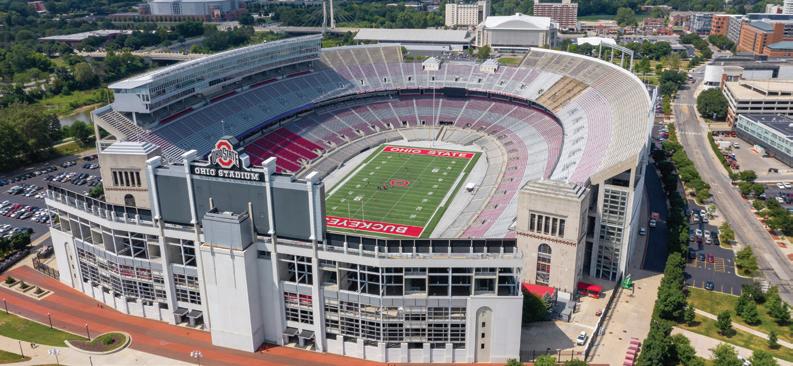
Ohio Football Stadium in Columbus, USA is known as the Horseshoe Stadium because of its unique shape. It is the fifth largest stadium in the world by capacity.

Rungrado 1st of May Stadium, in Pyongyang, North Korea, is the biggest stadium in the world by capacity. It can host more than 1.5 lakh people. It is mainly used for football but is also designed to host many other sports, such as athletics. It is shaped like an open parachute.
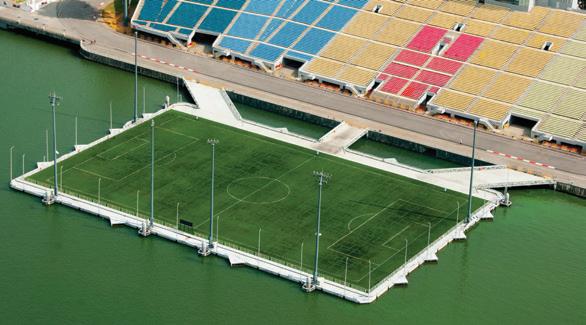
The Float at Marina Bay in Singapore is the world’s first and largest floating stadium. It has mainly hosted football matches. The floating platform is made of steel.

Docklands Stadium in Melbourne, Australia is the only stadium in the world with a removable roof. It is also known as the Marvel Stadium.
Use the internet to find the oldest stadium in India.
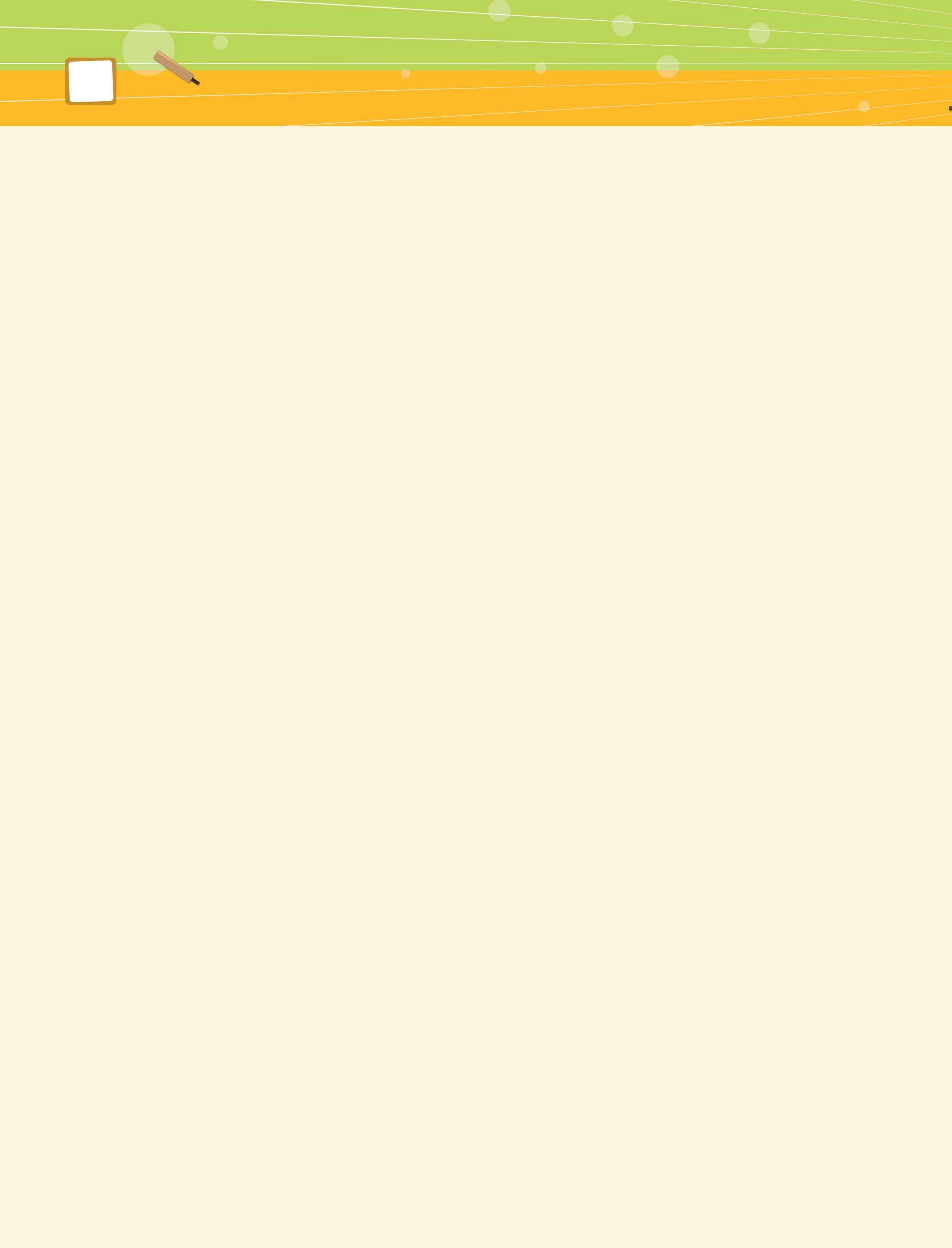


Scan this QR code to see the quiz.
1 Write the country in which these stadiums are located.
a The Panathenaic Stadium:
b Ohio Football Stadium:
c Narendra Modi Stadium:
d Docklands Stadium:
e The Float at Marina Bay:
f Rungrado 1st of May Stadium:
2
Read the features and name the stadiums.
a The stadium that hosted the first modern Olympic Games:
b The only stadium in the world with a removable roof:
c The largest cricket stadium in the world:
d The stadium that is shaped like a horseshoe:
e The world’s biggest stadium by capacity:
f The world’s first and the largest floating stadium:
3 Fill in the blanks.
a Docklands Stadium is also called the Stadium.
b The world’s largest stadium by capacity can host more than people.
c The world’s largest stadium by area is built on of land.
d The Panathenaic Stadium hosted the first modern Olympic Games in .
e Stadium is also called the Horseshoe Stadium because of its shape.
f Rungrado 1st of May Stadium is shaped like an open .
We all produce waste every day, such as food wrappers, old toys or used paper. We can manage the amount of waste we generate by following the 5 R’s of waste management.

Refuse is simply saying ‘NO’ to the things we do not need. We should refuse to buy or accept products such as single-use plastic items or plastic bags that harm people, animals and our environment.
Reduce the use of things that add to the waste. This is about being mindful of what and how much we need. For example, we should carry our own bags and water bottles when we go out rather than buying new ones.
Reuse things instead of throwing them away. It includes repairing things instead of replacing them. For example, one should replace plastic straws with reusable metal straws.




Recycling is a process to change waste into usable products. If it is not possible to refuse, reduce or reuse, only then send the item for recycling. Items such as plastic bottles, metal cans and paper can be recycled.
Repurpose waste items that are meant for one purpose but can be used in other ways too. For example, use a waste plastic bottle to grow plants. This is also known as upcycling. It requires creative thinking.
Learn about this R too!
Rot

Plant and animal waste decays or rots easily. These can be added to the soil to make compost.

Most of the paper we use comes from trees. Producing recycled paper takes less energy and water than producing new paper. So, each time we send paper for recycling, we help to save trees.
Managing waste properly is important to keep the environment safe and the earth clean. It also helps protect plants and animals.


1 Write the 5 R’s of waste management.
2 Which R of waste management am I?
a I tell you to avoid buying things you don’t need.
b I tell you to find a different use for a waste item.
c I tell you to use fewer things that add to waste.
d I tell you to use things again instead of throwing them away.
e I am a process that can change waste into new, usable materials.
3 HOTS Fill in the correct R’s of managing waste.
a We must (refuse/recycle) the use of plastic bags.
b We can (recycle/reuse) an empty jam jar to store salt.
c We can (reuse/rot) vegetable peels to make compost.
d We can (recycle/repair) a slightly broken table instead of replacing it.
e We can (refuse/repurpose) a cup with a broken handle as a pen holder.
f We can (rot/recycle) crushed and broken plastic bottles to make new things.
g A metal water bottle is better than plastic as it can be (refused/reused).
h We must replace tissue paper with cloth towels as they can be (reused/repaired).
Some diseases are very common and we are all affected by them at some point in our lives. Let us learn more about these diseases.
Influenza is a viral infection of the nose, throat and lungs. It spreads very easily from one person to another. It spreads through airborne droplets that are released when an infected person coughs or sneezes. The primary symptoms of influenza are a runny nose, sore throat, sneezing and fever. It can also cause headaches and fatigue (tiredness).

Dengue is a viral infection, also called the breakbone fever. It spreads through the bites of infected Aedes mosquitoes. Its symptoms include a high fever, headache, muscle and joint pain and skin rashes. It can also cause nausea and vomiting. In severe cases, dengue can be a life-threatening disease. It is important to consult a doctor for treatment.
Chickenpox is a disease that causes itchy rashes all over the body. It lasts for around four to seven days. It spreads from one person to another very easily. The symptoms of chicken pox include fever, headache, itching and red spots all over the body. Chickenpox can be prevented by a vaccine called varicella which is given to children at a young age.
Conjunctivitis is a disease that causes irritation and infection in the eye. It is also called pink eye. It spreads very easily through contact with an infected person. The symptoms include pain, redness, itching and swelling of the eyes.
We should always cover our mouths with a handkerchief while coughing and sneezing so that we don’t spread diseases to other people.


Scan this QR code to see the quiz.
1 Identify the diseases from the given symptoms.
a Red spots on the body
b Muscle and joint pain
c Redness of the eyes
d Runny nose
2 Write True or False.
a Dengue is spread by sneezing.
b Conjunctivitis is also called blue eye.
c Dengue can be a life-threatening disease in severe cases.
d Influenza spreads through water.
e Chickenpox causes itchy rashes all over the body.
3 Fill in the blanks.
a Chickenpox can be prevented by a vaccine called .
b is also called the breakbone fever.
c A runny nose and sore throat are the primary symptoms of .
d Conjunctivitis is also called .
e Dengue spreads through the bites of infected mosquitoes.
4 HOTS A young boy named Ricky has recently been experiencing redness and itching in his eyes. His mother noticed that his eyes are also swollen and that he often rubs them. Given these symptoms, determine the most likely condition Ricky might be suffering from.
Ricky might be suffering from .
9. India in Sports, 2024
1. a. 26 July 2024- 11 August 2024; Paris, France b. 28 August 2024- 8 September 2024; Paris, France c. 1 June 2024- 29 June, USA and West Indies d. 10 September 2024 to 23 September 2024, Budapest, Hungary
2. a. six b. 117 c. 29, 7, 9 d. South Africa
e. Open, Women’s f. third
3. a. b. c. d. e. f.
10. Great Inventors
1. a. Mid-1400s b. 1698 c. 1832-1835
d. 1896 e. 1903
2. a. Gutenberg Bible b. machines, powers
c. wireless communications system
d. 12 seconds, 36 metres e. electric signals
3. a. Thomas Savery b. Johannes Gutenberg
c. The Wright Brothers d. Guglielmo
Marconi e. Samuel F.B. Morse
11. Old Cities, New Names
1. a. Calcutta b. Madras c. Allahabad
d. Gurgaon e. Cochin f. Bombay
2. a. Chennai b. Gurugram c. Bombay
d. Kochi e. Prayagraj
3. a. Chennai b. Kolkata
12. International Flags
1. a. United States of America b. Switzerland
c. Bangladesh d. Denmark e. Romania
f. Japan g. Vatican City h. Nepal
2. a. Switzerland, Vatican City b. Monaco, Poland c. Japan, Bangladesh
3. a. Switzerland b. Nepal c. Bangladesh
d. India e. Japan f. Denmark
13. Underwater Wonders
1. a. Pacific Ocean b. Atlantic Ocean
c. Pacific Ocean d. Atlantic Ocean
2. a. Australia b. Mariana Islands c. Mexico
3. a. 371 km b. 16000 km c. 11 km
4. a. Challenger Deep b. Mid-Atlantic Ridge
c. Sistema Sac Actun d. Great Barrier Reef
14. Sports Stadiums
1. a. Athens b. United States of America
c. India d. Australia e. Singapore
f. Pyongyang
2. a. Panathenaic Stadium
b. Docklands Stadium
c. Narendra Modi Stadium
d. Ohio Football Stadium
e. Rungrado 1st of May Stadium
f. The Float at Marina Bay
3. a. Marvel b. 1.5 lakh c. 63 acres
d. 1896 e. Ohio Football Stadium
f. parachute
15. 5 R’s of Waste Management
1. Refuse, Reduce, Reuse, Recycle, Repurpose
2. a. Refuse b. Repurpose c. Reduce
d. Reuse e. Recycling
3. a. refuse b. reuse c. rot d. repair
e. repurpose f. recycle g. reused
h. reused
16. Common Diseases and Their Symptoms
1. a. Chickenpox b. Dengue c. Conjunctivitis
d. Influenza
2. a. False b. False c. True
d. False e. True
3. a. varicella b. Dengue c. influenza
d. pink eye e. Aedes
4. Conjunctivitis

Introducing INSIGHTS, a 21st-century product for the learners of grades 3 to 5. It includes all curricular areas—English, Mathematics, Science, Social Science and General Knowledge. INSIGHTS is aligned with the NEP 2020 in terms of its design principles, and fulfils all recommendations of the NCF 2023.
Product Package
• Semester Books
• Uolo App
• Teacher Guide
• Focus on HOTS and Critical Thinking: Intellectually stimulating questions designed to encourage deep, analytical, critical and evaluative thought processes
• Digital Aids: Animated talking books, interactive quizzes for additional practice and curated learning videos
• Experiential and Applicative Learning: Projects and activities designed for real-life settings, like lab activities and community projects, to enable the development and practice of life skills
• Rootedness to India: Examples from India’s unique culture and history, linked to each topic, to inculcate a sense of pride and love for the nation
• Model Assessments: Test papers designed to evaluate the understanding of core concepts and the application of skills
Uolo partners with K-12 schools to provide technology-enabled learning programs. We believe that pedagogy and technology must come together to deliver scalable learning experiences that generate measurable outcomes. Uolo is trusted by over 15,000+ schools across India, Southeast Asia and the Middle East.
ISBN 978-81-981206-6-3
